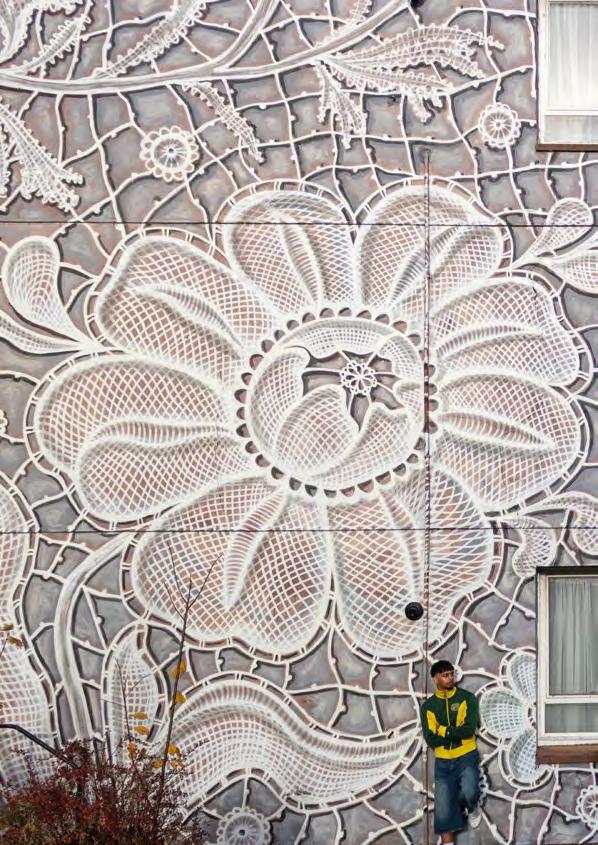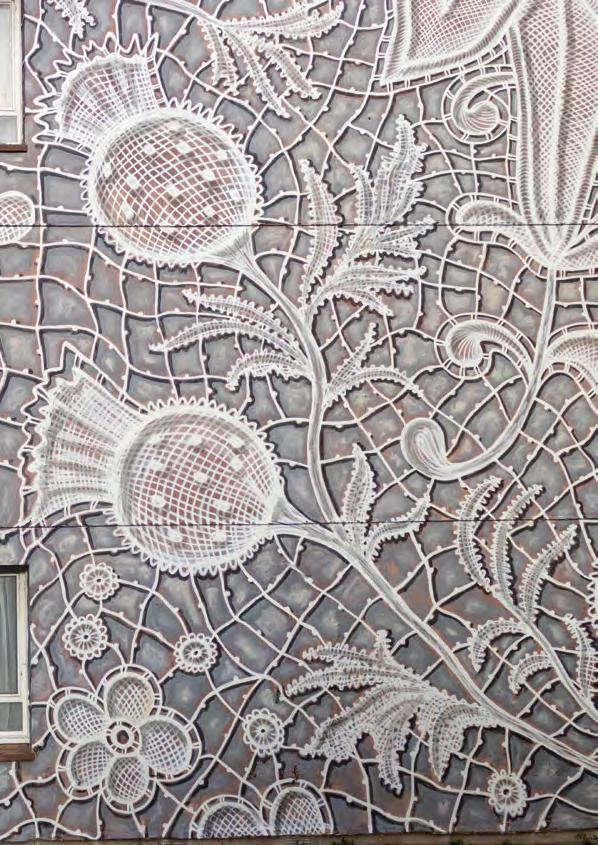
Celebrating Gray’s 140 Empowering creatives since 1885
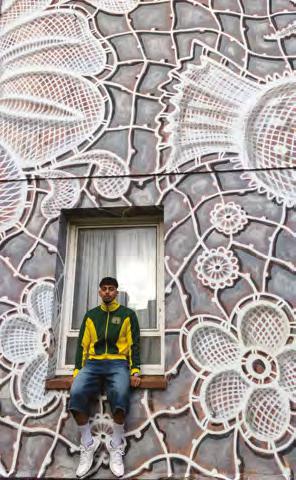
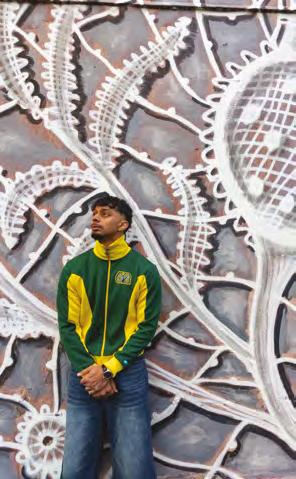


Celebrating Gray’s 140 Empowering creatives since 1885


which, this year, celebrates the 140th anniversary of Gray’s School of Art.
I hope you enjoy all the students’ wonderful hard work. Once again many thanks to our collaborators and photographers. We couldn’t do this without you.
with best wishes
Fiona Editor
P.S. From p164, there is a special feature brought to you by Stage 3 placement students, Eden, Lewis and Mary, who recruited some of our Gray’s students, past and present, to celebrate the courses and experiences of our fabulous school.
Cover and p4
Erin Stockwood’s STREET ART
p8
Maisie Robertson’s THROUGH THE LENS
p10
Jessica Murdoch’s GRAY’S SCHOOL OF ART
p14
Mariia Potapko’s THE KISS OF THE MUSE
p18
Gabriela Araujo’s FINDING YOU
p24
Enzimar Rengel’s FROM CANVAS TO CLOSET
p26
Ellie Dunbar’s YOUR ARE THE CANVAS
p32
Katy Angus’ AN EXPERIENCE AT GRAY’S
p34
Eloise Williams’ PORTRAIT PERFECT
p39
Sheridan Gordon’s CITY GIRL ESSENTIALS
p40
Anna Niedielska’s ART IN GRANITE
p44
Keira O’Brien’s A DAY AT THE GALLERY
p48
Eva McDonald’s COOL GIRLS LIKE ART
p50
Hannah Green’s A STROLL IN THE PARK
p53
Eva Crawshaw’s IT GIRL BASICS
p54
Valeriie Tsykalo’s THAT GIRL BAG NECESSITIES
p55
Eva Crawshaw’s QUIET LUXURY
p58
Emily Morris’ FEELING FIESTY
p61
Sophie Ord’s LEADING LEOPARD PRINT
p62
Tanmee Nisha’s THE GRAY GALLERY
p66
Olivia Pitcairn’s TOTALLY TARTAN
p70
Lucas Bastable’s TARTAN TIDES
p74
Tia Trahearn’s ABERDEENSHIRE ATTIRE
p76
Valeriie Tsykalo’s SCOTTISH NATURAL HARMONY
p81
Alix Peel’s TRULY TIMELESS
p82
Sheridan Gordon’s TRENCH, T-SHIRT, TROUSERS
p88
Kristina Hlukharova’s KNITS IN FOCUS
p92
Enzimar Rengel’s SUMMER ESSENTIALS
p93
Lucas Bastable’s HIS & HERS
p94
Enzimar Rengel’s SUMMER DIARIES
p96
Shoena Memia’s STYLISH STREETWEAR
p97
Shoena Memia’s STYLE ON THE STREETS
p102
Faith Gormley’s KOOL KIDS NEVER DIE
p108
Kirsty Steel’s POSTER PERFECT
p109
Faith Gormley’s FRESH KICKS
p110
Edana Fraser’s CONTEMPORARY MINIMALISM
p115
Alix Peel’s A POP OF RED
p118
Hannah Nicol’s OUT ON THE TOWN
p121
Anna Niedielska’s HOW TO BE THAT GIRL
p122
Brooke Shinnie’s TRENDING NOW
p124
Millie Robertson’s DIVINE FEMININE
p125
Millie Robertson’s WHAT’S IN MY BAG
p126
Sophie Ord’s GLAMOUR & GLOW
p127
Brooke Shinnie’s GRANITE CITY GLAM
p128
Valerija Karenika’s CELEBRATING LIFE
p132
Lauren Towns’ PARTY LIKE IT’S THE 70S
p134
Rhona Balfour’s SPOTLIGHT ON THEATRE
p138
Bobbi Anderson’s ROCKSTAR GIRLFRIEND
p141
Keira O’Brien’s BLACK LACE
p142
Maja Lipczewska’s INTO THE STUDIO
p146
Maisie Robertson’s SLAYED IN THE 70s
p150
Alix Peel’s SHOP LOCAL: VINTAGE SCENE
p152
Brooke Shinnie’s TIMELESS THREADS
p156
Katy Angus’ VINTAGE VISIONS
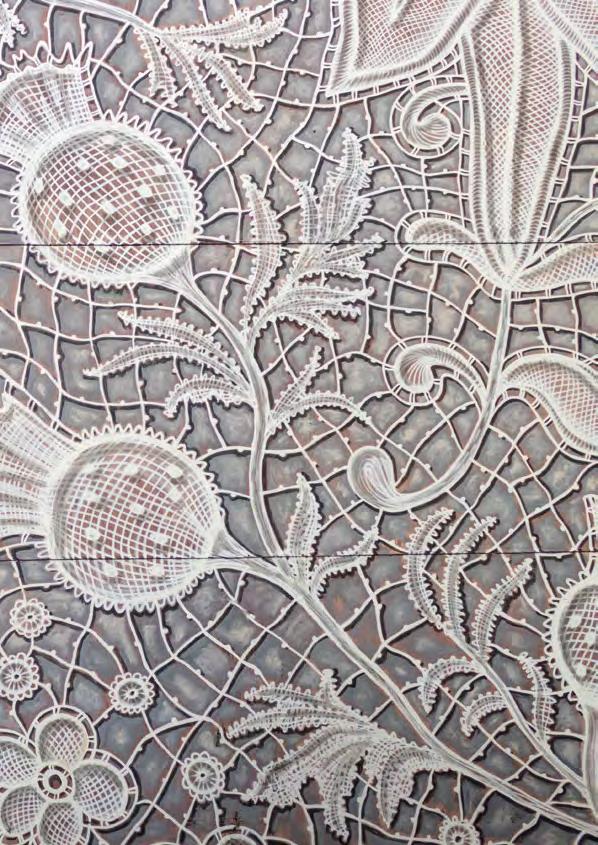
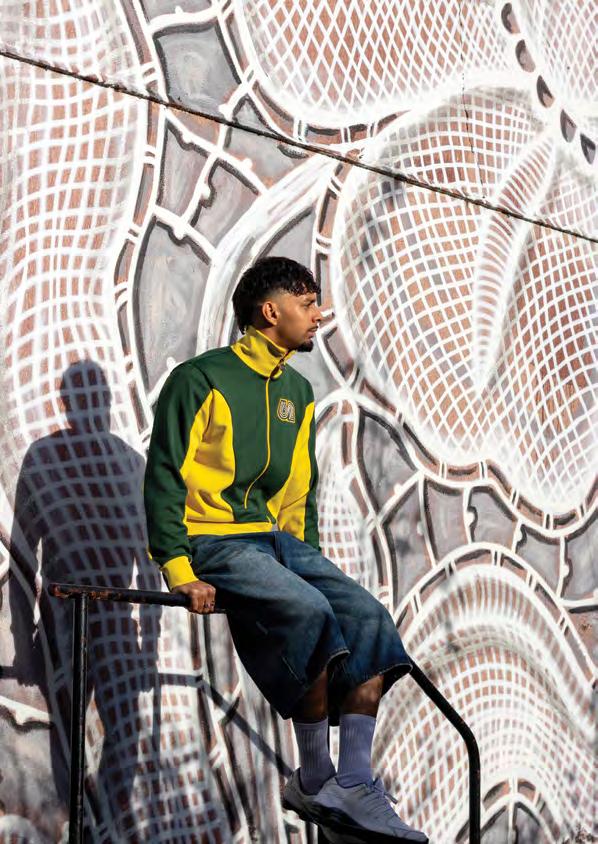
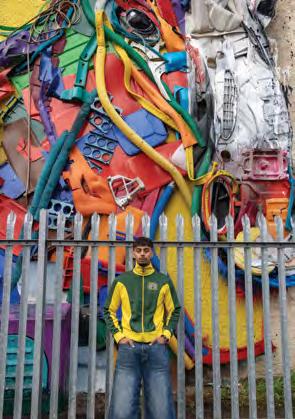
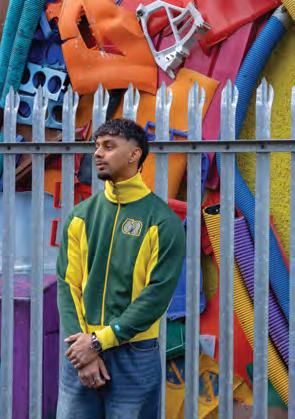
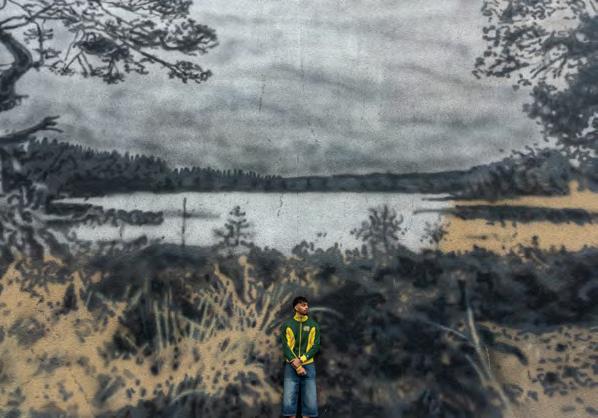
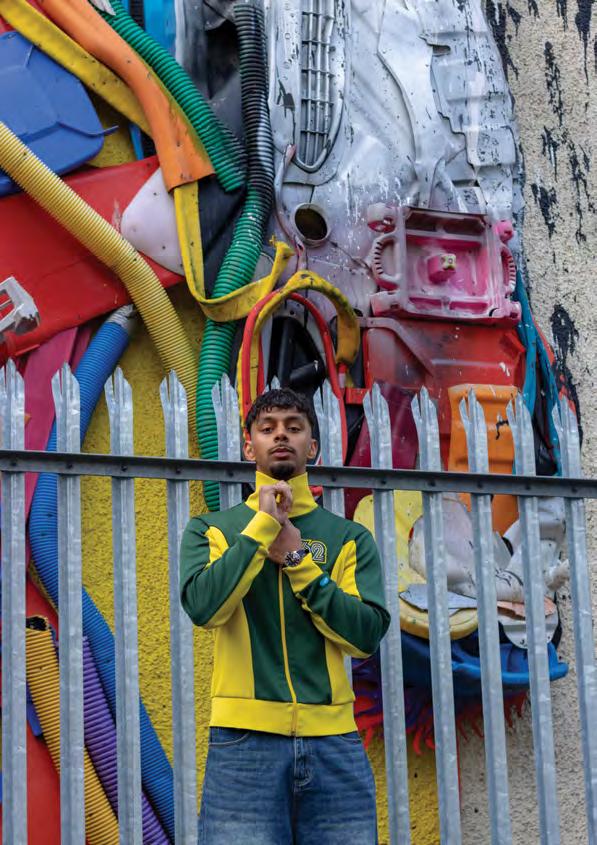
From capturing iconic images to inspiring future photographers, Steve Smith’s journey has been one that leaves an enduring mark. Here, he reminisces on his journey from student, to shooting for fashion magazines, to college lecturer where he encourages his students to contribute and collaborate for this magazine.
Interviewed and designed by: Maisie Robertson

meet in his beautiful 18th century home. We’re browsing through an archive of his past magazine work. His dedication to photography as a medium is quietly clear. “Images fix us’, he said, ‘they can transport us to a singular moment. They have the power to revive exact feelings and emotions felt in a single moment”.
“When did you first start taking pictures,” I asked if it was his original career path?
“I never had a career path in mind.” he said. “I started taking pictures at school in 5th year. I had already passed Higher art, and in 6th year my choices were to do 6th Year Studies art or choose something else. At this point a teacher introduced me to photography. It was basic. How to shoot, develop film and make prints.”
Building on that, I asked, “What kickstarted your photography career?”
He told me, “I moved to London. The first photographic job I got, within a week, was working in Click Studios, a multi studio complex, as a studio assistant. I had to paint backdrops, get lunch, unpack equipment and then prepare equipment for the following day. The most exciting part of the job was that there could be Albert Watson (Scottish commercial photographer) shooting in one studio, Jurgen Teller (fashion photographer) in another, and next door someone photographing ice cream. You got to see photographers at work and meet their assistants. Also to see celebrities that you would normally only see on TV or film, so it was an exciting place to work”.
“I guess this would give you a deep technical insight into different kinds of photography?”
“There was no better education than learning about the equipment. They used a much greater wealth of equipment than we’d ever had at college. College facilities, particularly now, are good, but they’re one dimensional. In college we use basic lighting equipment, but in industry, they have Elincrom, Profoto and Kino Flow. I also gained first-hand knowledge of the industries’ equipment terminology as well as how to set it up. I could also watch others setting it up and using it – and the chance to assist a bit as well”.
“What drew you to fashion photography?” “I was never drawn to fashion photography. In my five years as a student,

I didn’t do much fashion at all. A lot of portraiture.
“When I left Click Studios I got a job at The Courtyard Studios, which was owned by photographer Chris Dawes (fashion photographer) I worked there for about a year and a half. At this time David Sims hired the studio for a week. During that
“We’d shoot New York a lot. We did the Rimmel campaign with Kate Moss. The whole experience was an explosion into the fashion world”
week his assistant was leaving and had suggested a new assistant but, since I had built up a good relationship with him during the week, he interviewed me for the job. At the time everyone who knew David Sims was telling me that if I was
offered the job that I would have to take it because it was such a high-profile position. I wasn’t familiar with his work, but I got the job. I worked with David for three and a half years on some seminal fashion advertising shoots. He was contracted to Harper’s Bazaar during those three years, so we’d shoot New York a lot. We did the Rimmel campaign with Kate Moss. The whole experience was an explosion into the fashion world and no better insight into high level fashion photography.
“In the early days however, I was mostly learning how to do the job. Only in the final year, when the technical side of the job had become more intuitive to me, did I question why he took pictures the way he did. Following that, the opportunities afforded to me were mostly in fashion”.
I followed up asking Steve, “Where did you go after leaving David?”
He replied, “My first jobs were with Namalee Bolle (Fashion Director of SuperSuper Magazine), Sleaze Nation Magazine, and then I did single page work leading up to editorials for Dazed and
Confused before moving to I-D Magazine. They tended to give me little starter jobs, one or two pages and if you were competent with that, the opportunities grew. At I-D I worked with stylists like Mark Anthony (English fashion stylist) and David Lamb (fashion editor and stylist). My final projects with them were with Edward Enninful and Michelle Cameron”.
There have been many highlights throughout Steve’s career the most notable being a magazine photographer’s dream, “Getting the cover for the Saturday Telegraph Magazine with Claire Richardson (Editor and stylist). It was a feature on Yohji Yamamoto (Japanese designer and master tailor), shot in a location house. It was unusual to have a black and white cover, but we managed to push it through. I liked the image, and we had a strong team.
“As well as working with Claire, working with Mark Anthony was brilliant, because he is a beautiful man and an incredible stylist. There’s an image on my wall next door of Romane, a French model we shot on location in Hackney, I particularly liked that shoot. We also worked with a punk band called the Cazals and the styling was incredible.”
“I got to meet Armani and see him working. There are loads, Holly Willoughby to Simon Cowell to James Bond’s Daniel Craig.”
Steve has worked with many acclaimed brands and celebrities. I asked, “What famous celebrities have you worked with? “Georgio Armani for InStyle magazine; that happened because Armani was doing ‘One Night Only’ at Earl’s Court, and Wendy Hinton, who’s picture director, hired me to photograph celebrities getting fitted for their suits prior to the show. I got to meet Armani and see him working.
“There are loads, Holly Willoughby to Simon Cowell to James Bond’s Daniel Craig, Moaning Myrtle (Shirley Henderson) from Harry Potter. I ended up doing a lot of celebrity portraiture on the back of my fashion work. There are the two ‘In Fashion’ books put together by Taschen which I have photographs for Gucci and, I think Thomas Everest and COMME des GARÇONS. Most of the fashion work is fashion editorial where there are lots of

brands putting a look together”.
On the flip side, I asked Steve what he has found most difficult in the photography industry. He expressed, “Juggling finances has always been hard for me. I’ve often disregarded the organisation of money. Often the work photographers do doesn’t always equate to good money. Although a lot of the work I did was good, I didn’t make a lot of money from it. It’s an oversaturated market, and you often can’t control when your next job is. You’ve got to have good organisational skills.”
I asked Steve what inspired the shift from fashion photographer to lecturer? He expressed, “Putting family first was my main driver. My son was born in 2001, and I had his first few years of nursery and school in London. My relationship with his mother wasn’t great at that point and my own mother wasn’t well up in Aberdeen. I wanted to strengthen my family relationships and came home”.
I wondered how his experience in the fashion industry influenced his teaching methods. He replied “You can’t work directing people, whether in portraiture or fashion, or work collaboratively within a team, and be successful, unless you’ve got good communication skills. You need to be sympathetic to the needs and desires of others in the team. I think that patience, understanding, and communication skills are also what you need to teach. Whether you are passing on technical information or trying to inspire someone, you’ve only got your own enthusiasm and your ability to engage someone”.
Shifting to look at the future of fashion I asked, “As a fashion photographer, and educator, where do you see the future of the fashion industry going? Do you think A.I. will have a good or bad impact?” He observed, “It has to change but I don’t
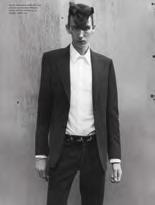
feel people should be scared of AI. As an inspirational tool used by creatives it has amazing possibilities for collaboration and design ideas. The amount of people working in the fashion business will reduce significantly because, of course, AI will do a lot of the work that was previously done by teams of people. Marketing will absolutely run with AI content and mashup content because that’s something AI can do effectively but the business will still need people to navigate the direction of where it needs to be. It does however mean that there will be less and less people in the arena that can make money from it”.
When asked “What lies ahead for you?”
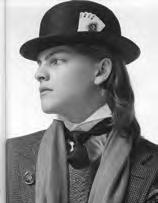
Smith said, “I have some personal issues that I need to sort out now that are taking priority, but I do have some images in my head that I want to investigate. I also have an ongoing collaboration that I’m currently working on”.
Finally, I asked Steve what his advice would be for aspiring photographers.“You must keep busy; shooting, communicating and reviewing. There are an army of other creatives out there who are busier than you, so with limited opportunities available, you must stay as busy as your competitors.
“You must work. A lot. That’s it”.


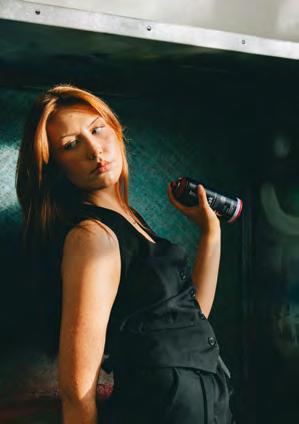
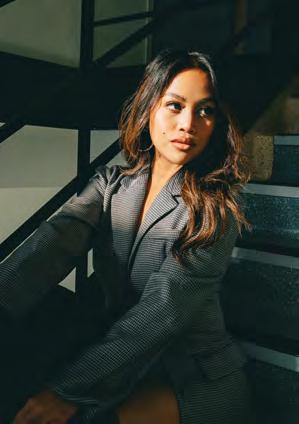
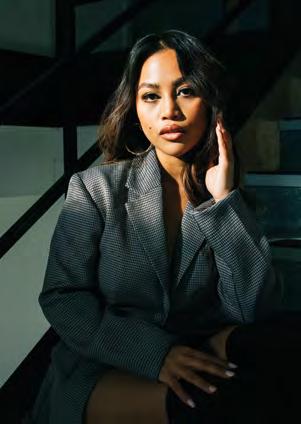
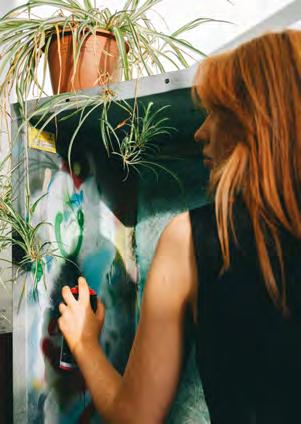
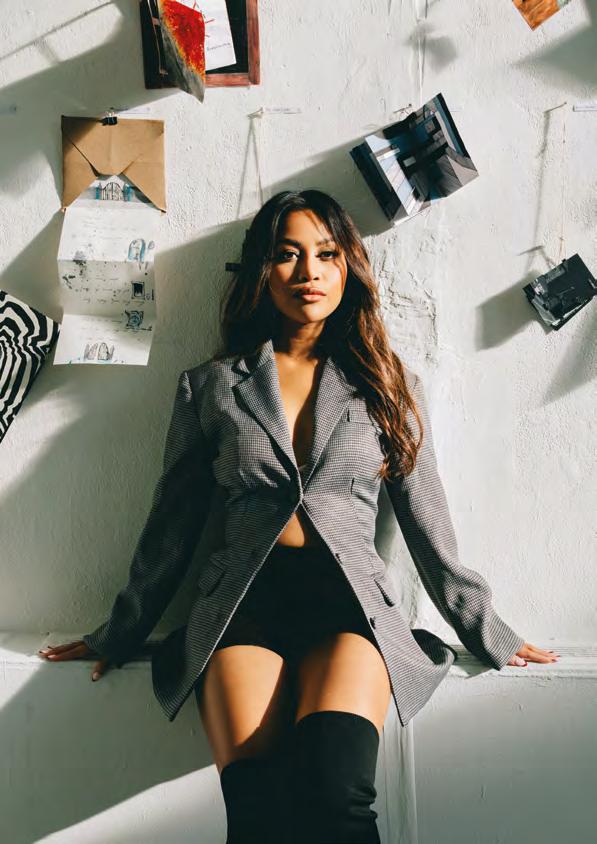
£20
£6
£24
Blazer: Nasty Gal £17.50
White top: Zara £9.99
Shorts: Primark £10
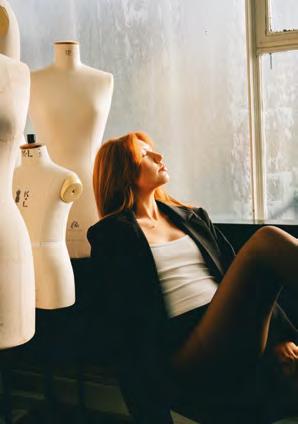
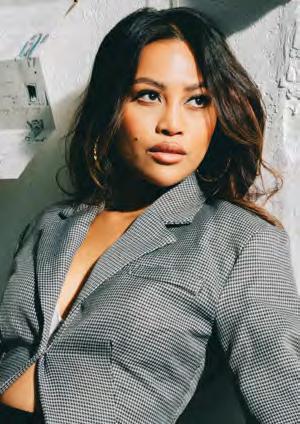
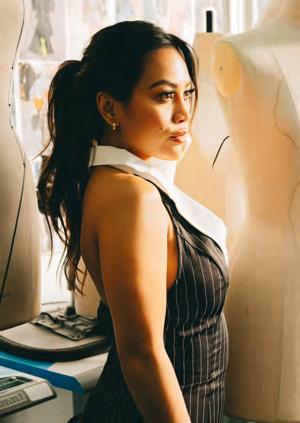
Dress: PrettyLittleThing £12.50
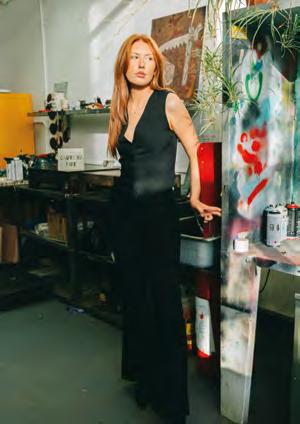
Black top: PrettyLittleThing £13
Trousers: PrettyLittleThing £15
Heels: Stradivarius £50
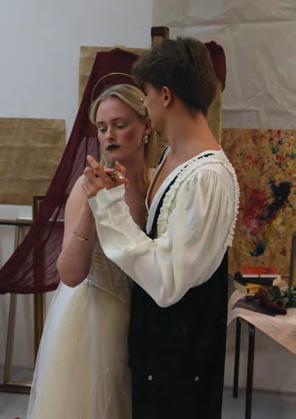
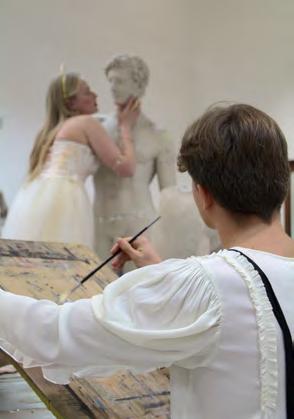
The ancient Greeks believed that any beautiful work of art is not the result of mental activity, but bestowed by the gods or muses, beings of Divine origin, the nine daughters of Zeus and Mnemosyne. They were the ones who inspired artists to create new works: paintings, poems, songs. Those who did something truly talented and beautiful were said to have been “honoured by the kiss of the muse”
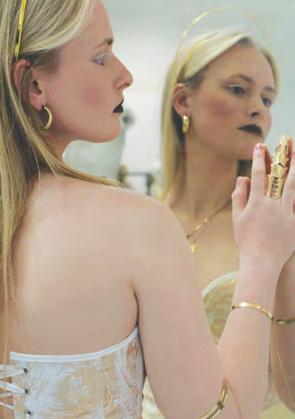
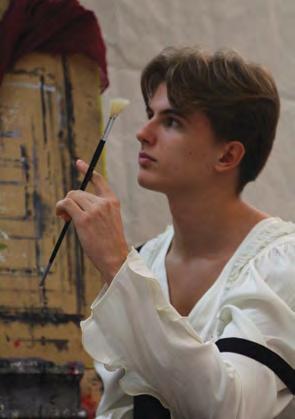
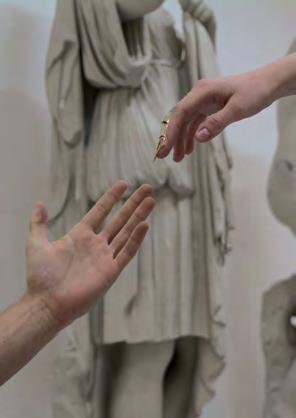
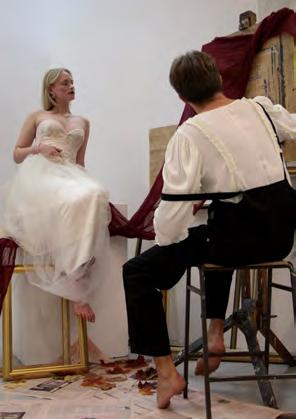
Male model: Markiian Yurchyshyn
Female model: Diana Postavka
Photographer: Ariel Fung
Idea creator: Mariia Potapko
Location: Gray’s School of Art
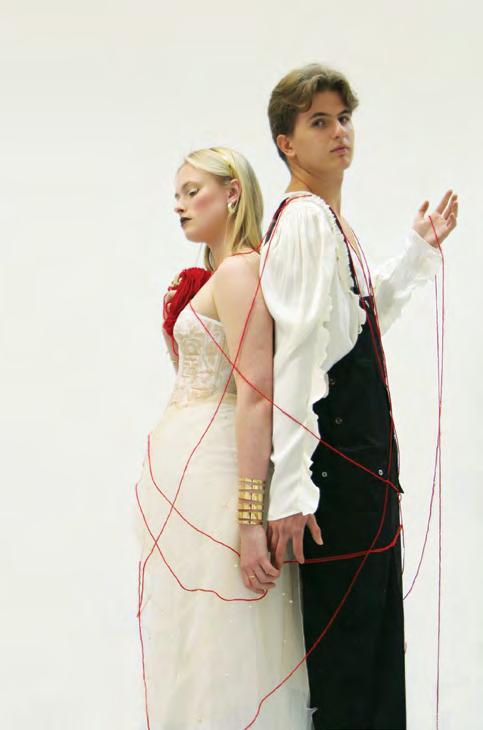
Dress: Handmade
Trousers: Incerun
Shirt: Shein
Accessories: A-shop
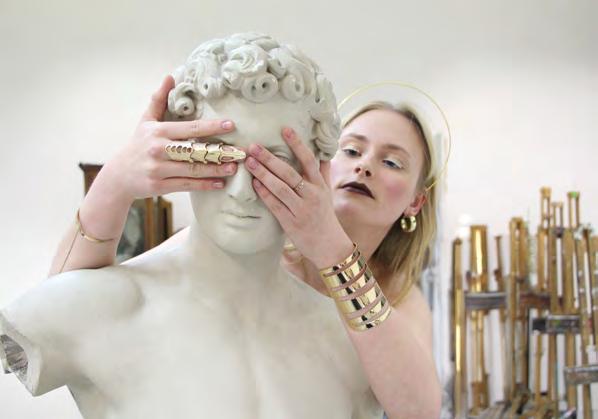
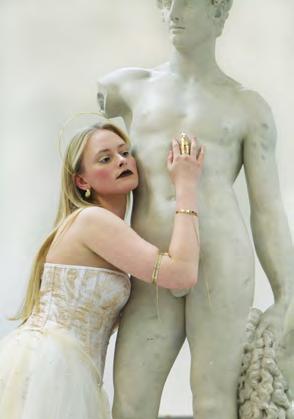

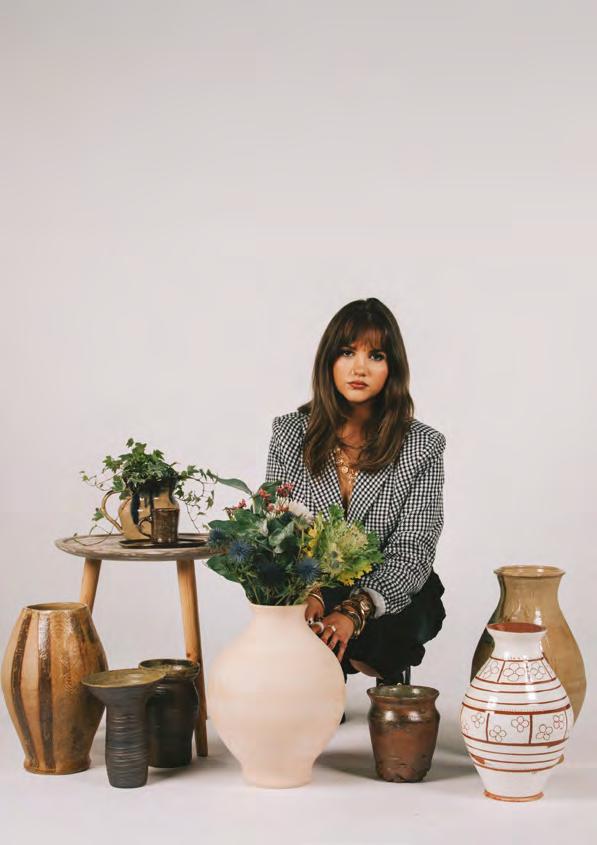
Finding your style, finding your ceramic featuring pottery by Evan Daggert, student at Gray’s School of Art
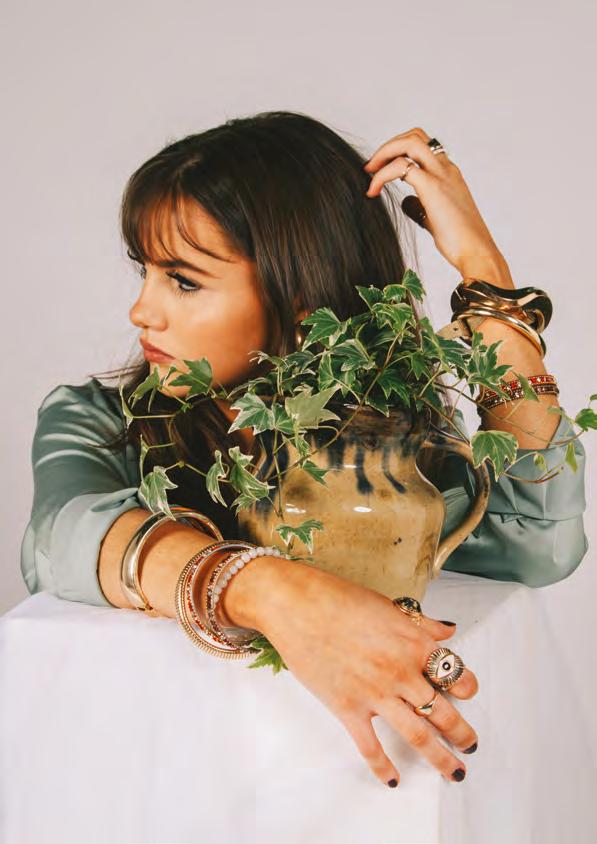
Top: PrettyLittleThing Trousers: H&M

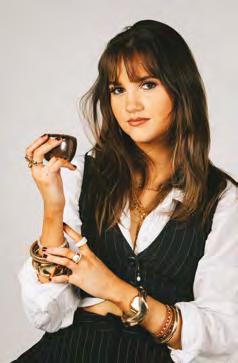
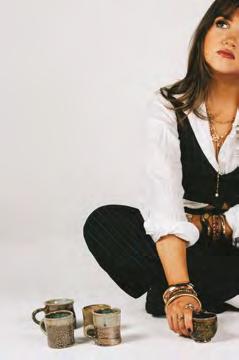


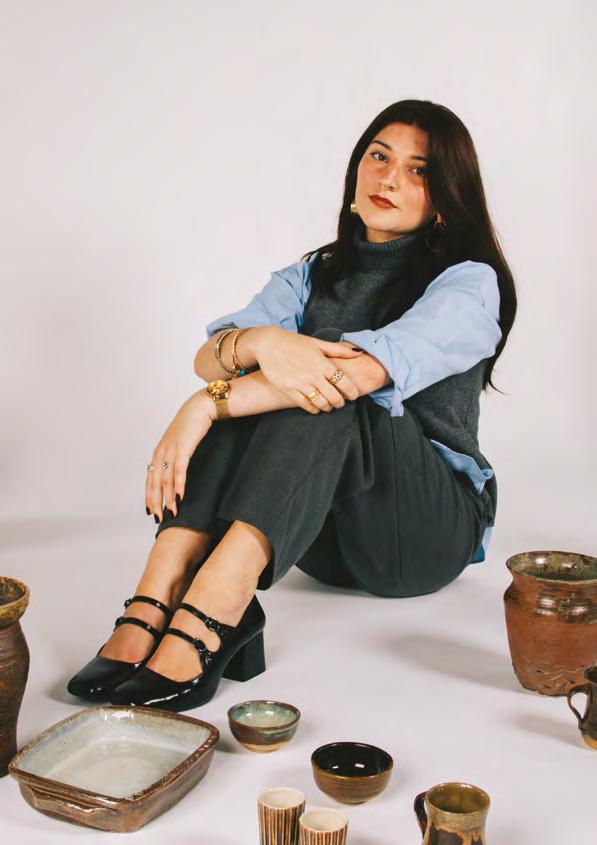

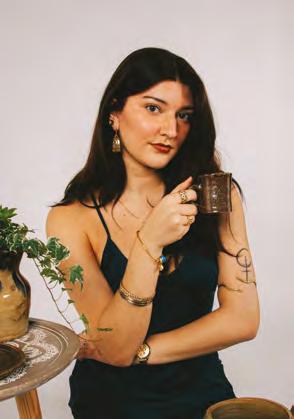
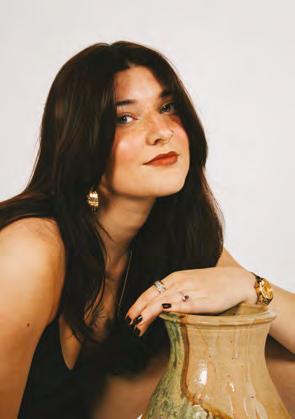

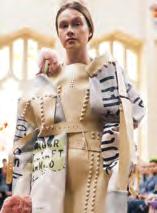
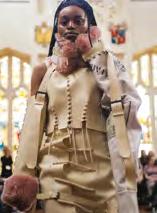
by Enzimar Rengel
Art and Fashion, movements or catalysts, topics that with further navigation we have understood their individual and shared roles into the monumental responsibilities towards influencing today’s trends.
With humble beginnings for haute couture back in the 19th century, Charles Frederick Worth established the first ever couture house in Paris targeting the upper class and therefore, creating the label of ‘fashion designer’: an individual specialised in the process of dressmaking. Art and fashion are two sectors that go hand in hand towards the effect they have on broader sociocultural influences, forms and textures, both providing a gravitational pull for individuals with an overdeveloped right hemisphere and a disinterest in the left hemisphere of the brain.
These two industries create a dynamic duo by including elements of striking aesthetics, and creative expression along with passion and out-of-the-box philosophies where fashion designers and canvas artists alike recognise each other as inspiration and merge both worlds; one to go beyond prejudiced ideas in societal issues towards the acceptance of these sectors as a united front and how they have marked an imprint of legacies and timeless dialogues that unite aesthetic and style.
environmental elements whilst retailers view it as a commodity to generate mass profit. However, numerous high fashion designers such as Gucci, Alexander McQueen and Yves Saint Laurent, who once said ‘Fashion is not an art, but needs an artist to exist”, see this as one of their main focuses of inspiration. For example, some of the cult - and my own- favourites are the Gucci SS18 collection ‘Gucci Hallucination’ where Spanish artist Ignasi Monreal created an innovative social media project inspired by historical and artistic references such as Bosch’s triptych artwork. This depicted imagery from classic pieces of artwork that resulted in garments of colourful and printed design to mimic that of the paintings and incorporate it into the modern world of fashion. Bosch, who appears to be an influential figure amongst fashion designers, uses colour, pattern, visualisation and storyline to inspire yet another designer, Pierpaolo Piccioli for Valentino SS17 as he fused his love for acid bright palettes with the art of Hieronymus Bosch’s ‘The Garden of Earthly Delights’.
“Fashion is not an art, but needs an artist to exist”
- Yves Saint Laurent
I will look at several high fashion houses and how they take inspiration from the modes of artistic fashion movements throughout the centuries. Gray’s School of Art, located in the Robert Gordon University campus of Aberdeen City will also be explored as to how they like to incorporate their artistic flare into the social and cultural influence of micro and macro trends creating a modern phenomenon and inspiring the current fashionistas and artist alike of the 21st century.
Fashion designer becomes artist: Art and fashion have a long-standing perception amongst society that both should be kept separate, as fashion industry designer mogul Karl Lagerfeld believed art was a distinct and even a negating form of expression to fashion. He views fashion as a function with its sole purpose of clothing the human body and as a shield from
It is no secret that the intersection of art and fashion has run through the centuries which has found significant collaborations and iconic symbols of the eras. We have seen Elsa Schiaparelli collaborate with surrealist Salvador Dali to create statement pieces that blur the boundaries between both industries and instead merge them to create highly sought-after items for collectors and investors alike. Louis Vuitton and its collaboration with Japanese artist Yayoi Kusama in 2023, which featured the artist’s iconic polka dot print onto its existing prints, highly recognised through the brand’s bags and purses. Not only was this beneficial for Louis Vuitton, as a venture to explore new designs and create stand out collections for its devoted clientele, but this re-introduced Kusama to a new generation and demographic of fashion lovers with a similar interest in the artistic aspect of fashion.
Another prime example of fashion merging art in the modern youth is the showcase of talent and passion Gray’s School of Art Fashion and Textiles provides the Granite City and the overall fashion and art industry. I had the privilege to see first-
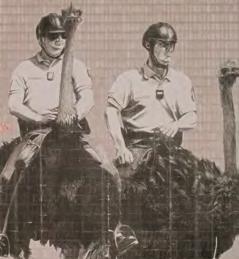
hand collections created for the 2019 annual graduate show which according to Colin Bell, fashion and textiles applications supervisor, described the event as a “showcase of the creative and innovative designs by Robert Gordon University students.” Not only this but how the show was able to capture the level of craftsmanship and creative process to ultimately produce collections that embody visionary perspectives into the likes of geometric architectural designs combined with the suprematist art movement for a collection achieved by student Rachel Murdoch.
Street Art vs Modern Fashion
By promoting emotions of provocative and unexpected combinations within the fashion industry, the street art movement has pushed fashion collections towards an edgier, meaningful and more importantly trendsetting direction in modern practices. Street art influences are seen across fashion brands whether small or large, for example, Louis Vuitton collaborated with street artist Stephen Sprouse and brought a revenue of $300 million to its brand, by adapting its style and targeting this demographic.
Now streetwear being a direct result of this art movement, it has become a largely recognised and trendsetting element in the fashion industry, with 2023 seeing its largest increase yet. It has seen subculture-driven fashion items with community-focused designs and visually distinct to root wearability and pledge alliance to expression. Thanks to social media, new opportunities for this movement have risen in popularity amongst the biggest wearers of streetwear consumers under 25 as per a Strategy& report, have soared due to the ability to style clothes in an expressive way that influences not only other viewers but brands alike.
According to a report by Hypebeast, 2019, some of the biggest brands to achieve a true streetwear aesthetic are Supreme, leading with 78.3% of votes, Off-White with 65.2% and Nike with 68.6%. This is, again, due to the help of social media to help understand the metrics into what is popular amongst the target audience and act upon this by releasing trend-specific items that will create buzz around their brand. For example, Off-White has created a grey area between high fashion and streetwear through its change of something viewed as cheap turned into luxury with cutting edge designs, premium materials and cultural relevance.
“I don’t think about art when I’m working. I try to think about life” – Jean-Michel Basquiat
Fashion has allowed new ways to translate the abstract elements of art into wearable and comprehensible pieces that see both industries push limitations, and their rich inspiration will only inspire further dialogues in the years to come.
Another realm of art, street art, whilst it is not everyone’s desired taste and universally appreciated, plays a fundamental role in trends within a sector of fashion society. The deeper connotations of this movement can define the roots of its subcultures and its roots for the artist involved, as renowned street artist Jean-Michel Basquiat, who said “I don’t think about art when I’m working. I try to think about life,” is a prime example due to his form of selfexpression and views on society conveyed through artform. This movement began as an expression of rebellion against political and societal issues, dating back to the 1920s in New York City as a war of infamous gangs which saw a start in name tags, and graffiti covering the city’s walls and marking territories. Photographer Martha Cooper documented the street art scene in the 1970s and enabled this to develop and be seen by a wider audience which allowed it to be accepted into galleries and museums by the 1980s. Thus giving artists at the time more credibility within the industry and securing its place in the art world as a cultural phenomenon despite its condescending beginnings.
Street art has since become more widely accepted and has now increased in popularity than ever before. It brings communities together as we have seen renowned art festivals, such as Nuart come to the likes of Aberdeen city to bring a collaborative practice of artists from all around the world to brighten up the grey walls with striking imagery and paintings, depicting different societal subjects for visitors locally and nationally. For example, Nuart has visited topics of living heritage, rewilding, connect and reconnecting, all which have sparked conversations by expressing individual opinions in a different light.

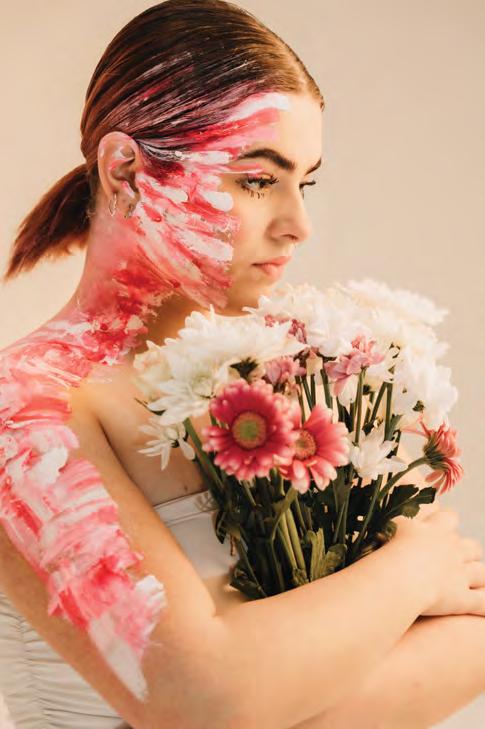

A celebration of self expression and wearing your talent on your sleeve
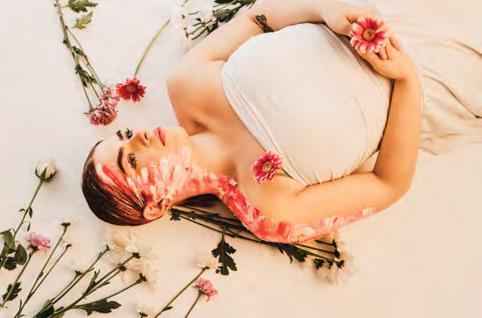
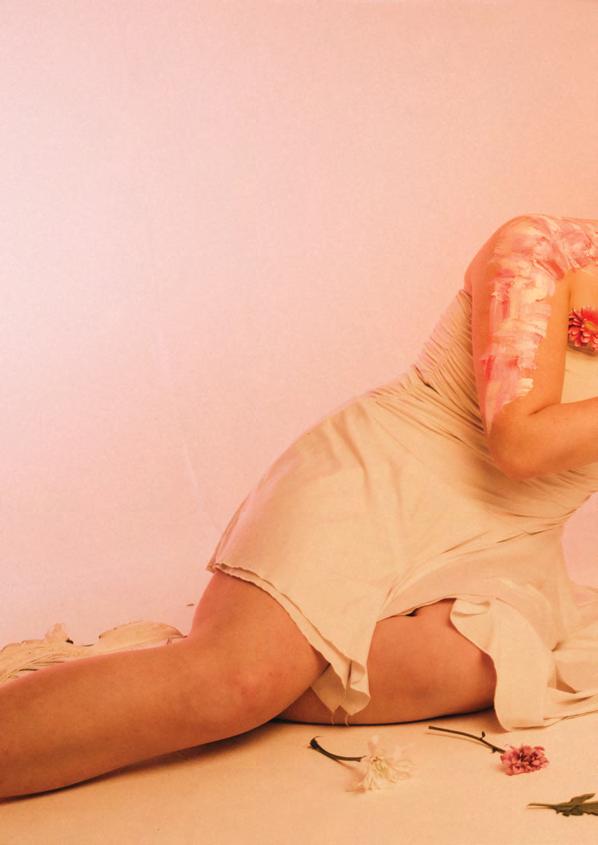


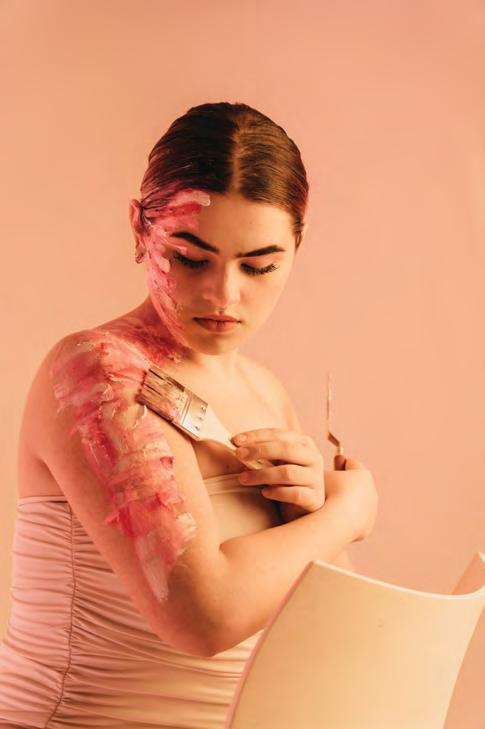
An interview with an art student at Gray’s School of Art reveals what it is like to be a student here.
Written by Katy Angus
Currently, we celebrate 140 years of Gray’s School of Art. John Gray had founded this school in 1885 and had called it Gray’s School of Art and Science. However, as the school grew over time, it established a dedicated building for the art school, which in turn allowed for the construction of additional buildings suitable for various subject areas. This development laid the foundation for the current campus of Robert Gordon University.
By offering a variety of creative courses that combine traditional hand-making tasks with the newest digital and upcoming technology, this school strategically develops students’ skills to equip them for a successful future.

The university always encourages collaboration to develop new skills that will aid students within the industry. The art students participate in several exhibitions in the school as well as at partner venues.
To get a more in-depth and personal view of what it is like to be a student at Gray’s School of Art, I have taken the time to interview an art student studying for a Bachelor’s in Fine Art. Leona Boyd is in her fourth year of this course and has had an overall positive experience in the education of this school. Through an interview between myself and Leona, she describes her journey of experiencing highs and lows and, more importantly, how her confidence has developed throughout her time at the university.
To find out about Leona’s background, I asked her to tell me about herself.
“My name is Leona Boyd. I am 21 years old, and I am from Balloch, also known as the ‘Bonnie Bonnie Banks of Loch Lomond’. My dad was a photographer when I was growing up, and now, he is a woodworker. His most recent project was to build a bridge in someone’s garden. I like to share my ideas with him. My mum works as a beautician, enhancing people’s appearance with services such as spray tans, nails, eyelashes, eyebrows, and waxing. She’s the sweetest woman on the planet. My younger sister, who is four years younger than me, is my closest friend and a funny girl. My family home is filled with pets! We own tortoises, birds, and a snake, and our dog has
Photographs by Leona Boyd
recently given birth to puppies.” She continues to share what she enjoys with me; she expressed her love for movies, particularly Lord of the Rings, which she considers the best ever. Nature is also something she enjoys; sitting by a loch makes her feel most content. Her favourite colours include forest green and baby pink.
Secondly, I asked Leona what her first experiences with art were. “My dad, who works with wood and was also a photographer when I was growing up, exposed me to the creative industries from a young age. On birthdays and Christmases I was often gifted paints, starting my lifelong passion for painting and drawing. As a child, I had a vivid imagination, and utilising it through art was a significant aspect of my upbringing.”
In addition, when I asked what Leona likes or enjoys about art, she answered that she was not very strong in arithmetic or sciences but always found peace in sports and art. She believes every artist has a unique style that is their own. Leona calls herself a creative person and says that using mediums like painting and drawing helps her to express her ideas, which aids in realising the thoughts she has. The most exciting aspect, for Leona, is witnessing the response she receives, particularly from commissions, which can be both terrifying and incredibly satisfying.
To find out if Gray’s School of Art has a supportive process for students coming from school and becoming students, I asked my interviewee about the smoothness of this transition. “My transition was smooth physically, but mentally it had more of an impact; I had a complete change of career choice, so I had to rediscover my route. Being the first person in my family to attend university, I was unsure of what to expect, which was a daunting experience for an 18-year-old girl who was moving 4 hours away from home. I prepared for university by spending every minute of my time working on a portfolio to make me feel more confident. I went straight to university from high school. I am glad I didn’t take a gap year because I enjoy being part of the educational system. Therefore, starting university straight from my sixth year was beneficial in keeping my mind active when approaching my work.”
In my fifth interview question, I inquired about the level of support that art students receive. Leona asserts that a significant number of students often experience a lack of support due to the competitive nature of art school and the intense pressure to excel. Consequently, when faced with harsh critiques, many students may feel unsupported. While Leona has had some low moments, ultimately, she knows lecturers are there to push her as an artist but also support her as a student.
Furthermore, Leona shares with me the significant benefits of gaining experience at Gray’s School of Art. “I throw myself at any opportunity that may come my way; as said before, the art industry is creative, so it’s difficult to bag something that a million other artists also want. Building up my portfolio will allow more opportunities to come to me. I volunteered at the Nuart festival this year, which was a wonderful experience. Gray’s has heightened my awareness of various experiences and opportunities, including modelling for fashion students’ garments. I also conducted a workshop in my former high school art class, an opportunity I would not have pursued without my experience at Gray’s.”
I was curious to find out about the quality of supplies that are at the school. Leona explains, “The supplies at Gray’s are every artist’s dream. You can work with different materials and methods, and the corridor has an art shop for supplies.” She also tells me about a studio fund that needs to be paid for by every student; this fund goes toward materials that will be provided to them for exhibitions. Even with the abundance of resources available, the university can only provide a limited amount for students with each specialism requiring different materials. Students generally use their own funds due to the high expectations of producing a large amount of work through experimentation and the use of various approaches and materials.


a different course broadened my understanding of artists and materials, a discovery for which I am thankful. This year, fine art has undergone a transformation, enabling me to pursue my passion, which has been painting since my second year. Since starting my fourth year, I feel so much more content and confident in my practice, and I can also use my experience in contemporary art to influence the rest of my fine art career. The other artists I have encountered at Gray’s have transformed my perspective on art; the presence of so many talented individuals in one place is a truly enlightening experience that profoundly influences my work.”
“The supplies at Gray’s are every artist’s dream.”
I later asked Leona, “Has your journey been a positive experience? And if so, how?”
Leona responded, “My journey has been a challenging one. During the first year, I couldn’t pursue the course I desired; this situation disappointed me. However, the experience of switching to
“Art school has flown by quickly, and it’s unsettling to consider its imminent end. I’ve been preparing for my postuniversity life by tailoring my projects to align with my future goals. I aspire to enter the industry of event art, and this year, I am positioning myself in a unique and uncomfortable position, pushing my work to a level I have never experienced before to ensure I am fully prepared for life after graduation. I have learned so much at Gray’s, and reaching this stage in my art career is truly one of my greatest accomplishments. Although starting out as an artist can be daunting, the conversations I’ve had about the creative industry at Gray’s have reassured me that I am in the right field and that, with lots of hard work and dedication, I will achieve my goals.”
In conclusion, Gray’s School of Art is a very successful establishment that has grown and changed overtime, while still keeping the same values and high standards that has been set all those years ago by John Gray. The school offers students extremely beneficial opportunities, preparing them for work after university. It provides high-quality tools and supplies that align with the high level of teaching provided by the lecturers. The lecturers that are currently at Gray’s School of Art provide support and encouragement to push students to succeed in everything they do. However, most students in this school will have felt pressure at some point on their course as it is a very competitive and challenge industry where evaluation (and sometimes criticism) is commonplace. It is important for lecturers to remind students that support is available to them and where they can find it.
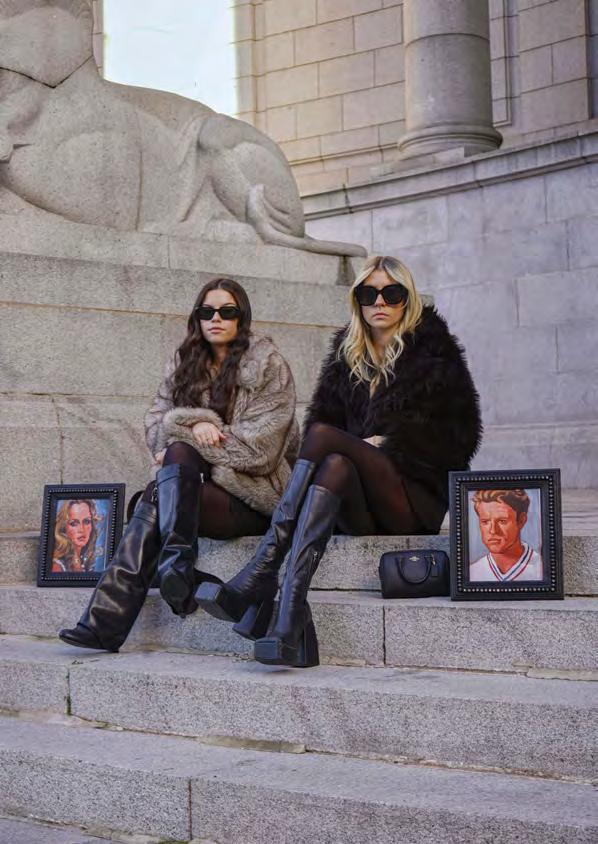
CELEBRATING GRAY’S SCHOOL OF ART
ROBERT GORDON UNIVERSITY
140TH ANNIVERSARY
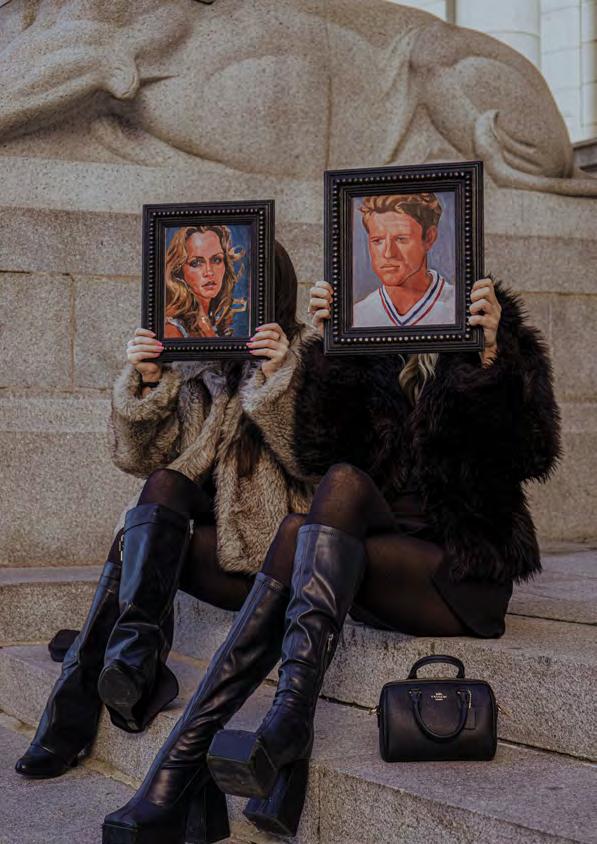
PORTRAITS: BEN MCGINLAY GRAY’S SCHOOL OF ART GRADUATE “MEET THE CAST” SERIES
COAT: ZARA
DRESS: H&M
TIGHTS: H&M
BOOTS: EGO
SUNGLASSES: PRADA
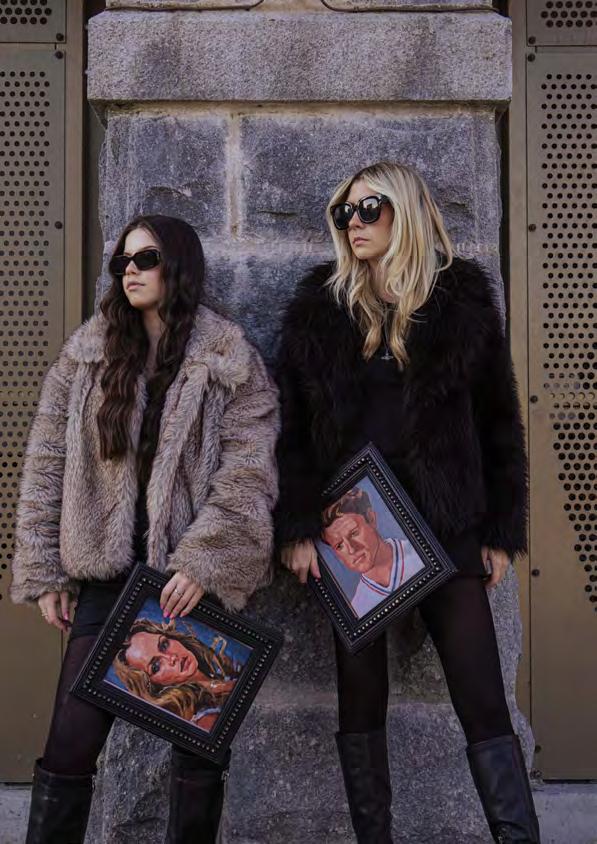
TIGHTS:
BOOTS: PRETTYLITTLETTHING
SUNGLASSES: H&M
BAG: COACH
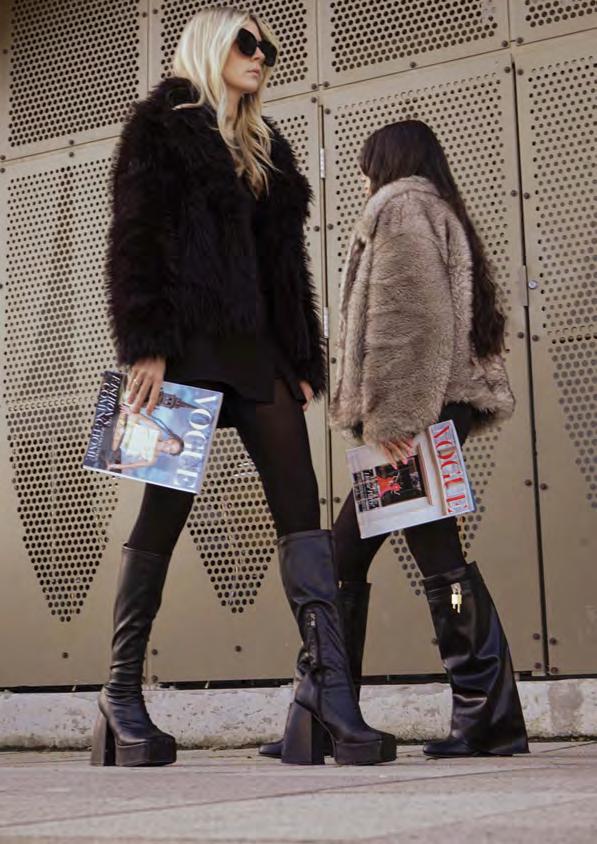
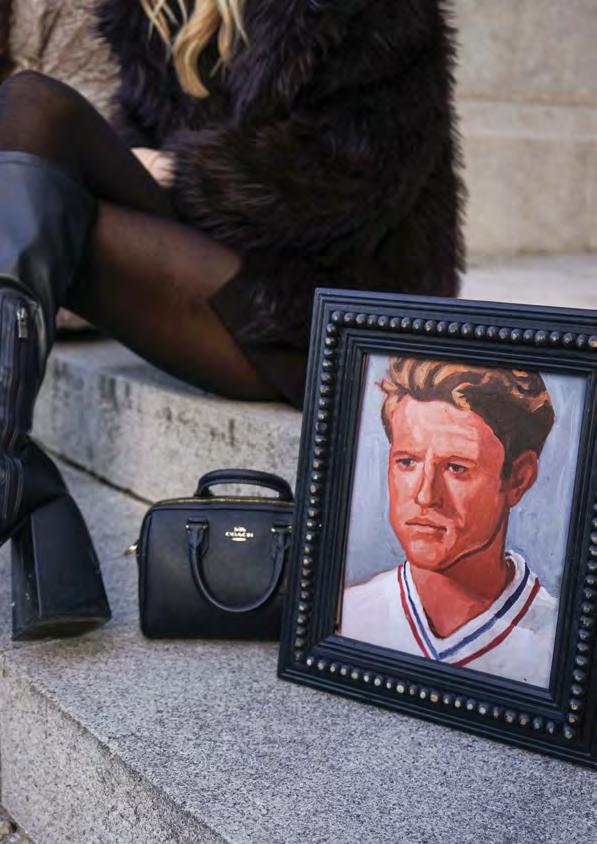

Not sure what to take on your hot girl walk around Aberdeen? We have got you covered.
model and stylist: ANNA NIEDIELSKA
photographer: KRISTINA HLUKHAROVA






longsleeve: WEEKDAY trousers: VINTAGE jacket: GURTEEN bag: VINTAGE

His Majesty’s Theatre is the only granite-built theatre in the UK and was the work of noted theatre architect Frank Matcham. Opening its doors for the first time in 1906, it was reopened by His Royal Highness the Earl of Wessex on 8th September 2005. The theatre is said to be haunted by Headless Jake, the benevolent ghost of a former stagehand, John Murray, who was killed in an accident in 1942.
knitted set: COS

Marischal College is believed to be the second largest granite building in the world. It is a combination of two styles: ‘’Perpendicular Gothic‘’ by A. Marshall Mackenzie (1890s) and the earlier austere architecture of Archibald Simpson (1837). The overall style is a combination of different aesthetics and possibilities provided by different granite processing technologies.

The Aberdeen Art Gallery, designed in the neoclassical style by Alexander Marshall Mackenzie, opened in 1885. In the 1920s, it was expanded to include the Cowdray Hall concert hall, the inner Hall of Remembrance and the outer Cenotaph, all designed by the same architect.

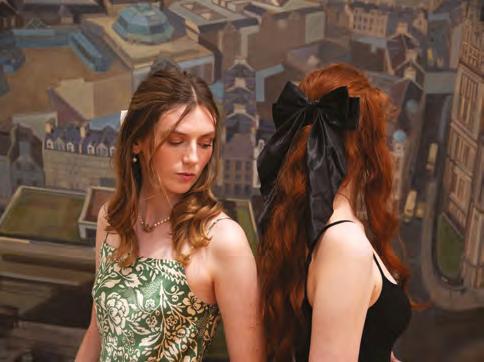
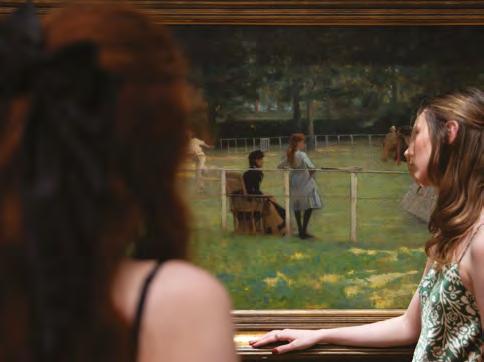
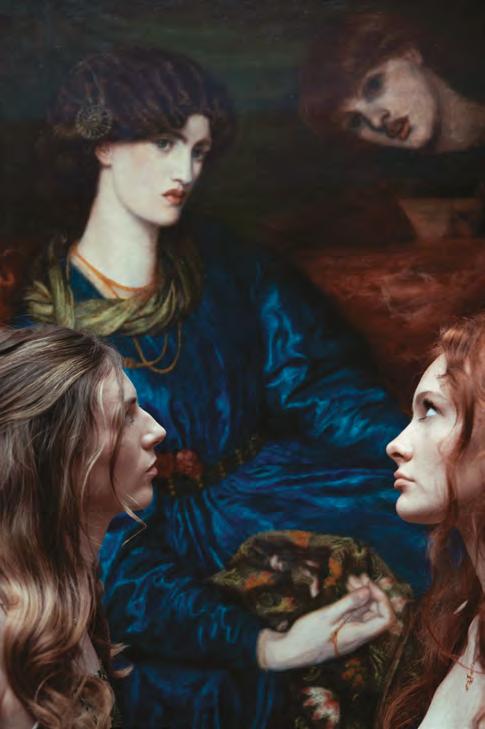
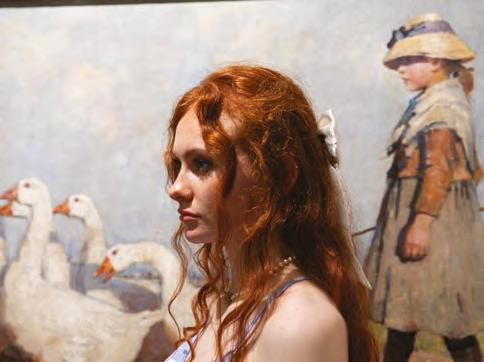

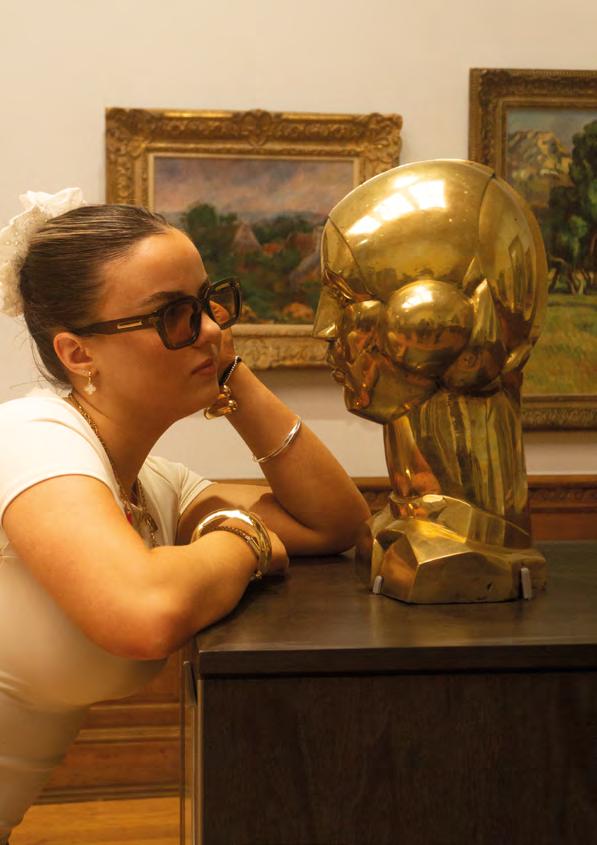
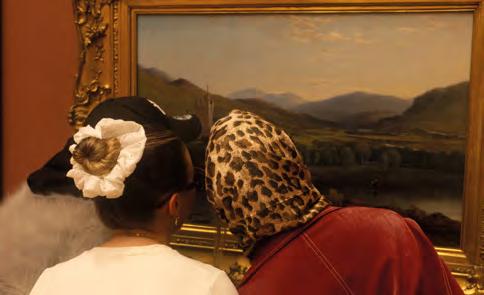
Scrunchie-Claire’s Accessories
Sunglasses-Shein
Necklace-Vinted
Top-Primark
Jeans-Stradivarius

Hat-New Era
Jacket-New Look
Phone case-Rhode
Lip tint-Rhode
Camera-TikTok Shop



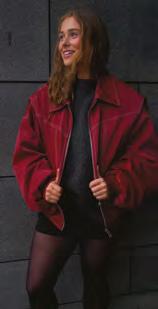
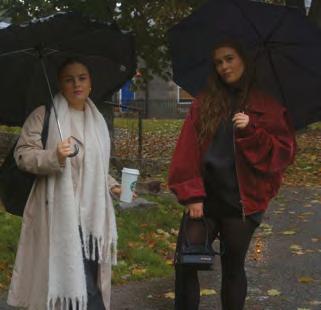


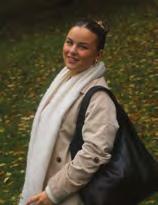
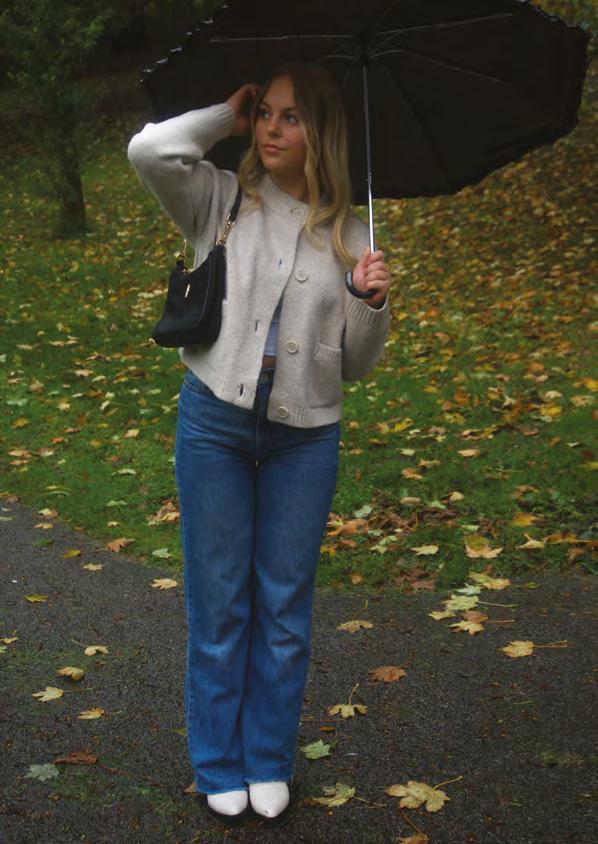






1. Primark Claw Clip £2.50
2. Rhode Lip Tint £18
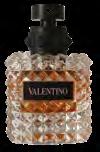
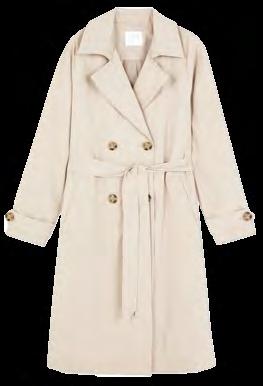

3. Betty & Biddy Chunky Gold Huggie Earrings £16
4. Primark Sunglasses £2.50
5. Fujifilm Digital Camera £80
6. GLOV Gus Sha £16.50
7. New York Yankees Cap £23
8.Valentino Perfume £69
9. Primark Essential Mac Coat £34
10. Superdrug Style & Expertise Edges and Brow Gel £3.99
11. Adanola Hoodie £59.99
12. B&M Headphones £15
13. Ultra Mini Ugg Boots £145
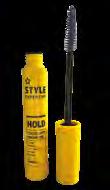



By Eva Crawshaw
«That girl» is a new trend. Her life looks like a Pinterest. She likes her skin care routine, leads a healthy lifestyle, takes care of herself, regularly exercises and develops herself. She loves the world and the world loves her.
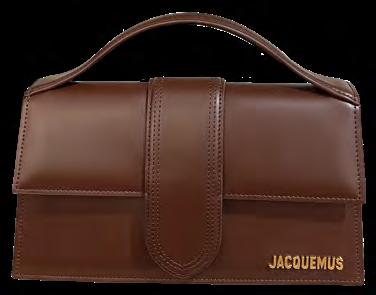





By Valeriia Tsykalo

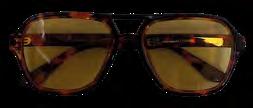



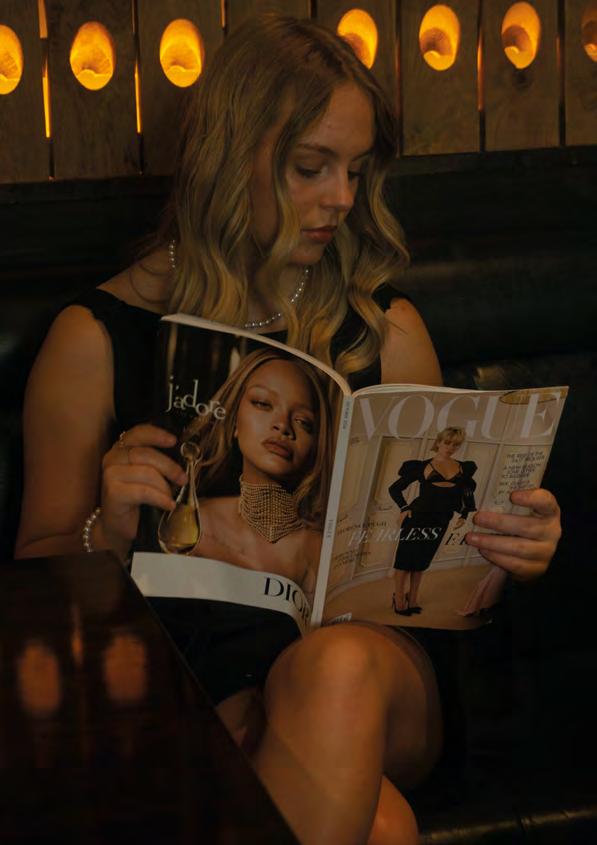

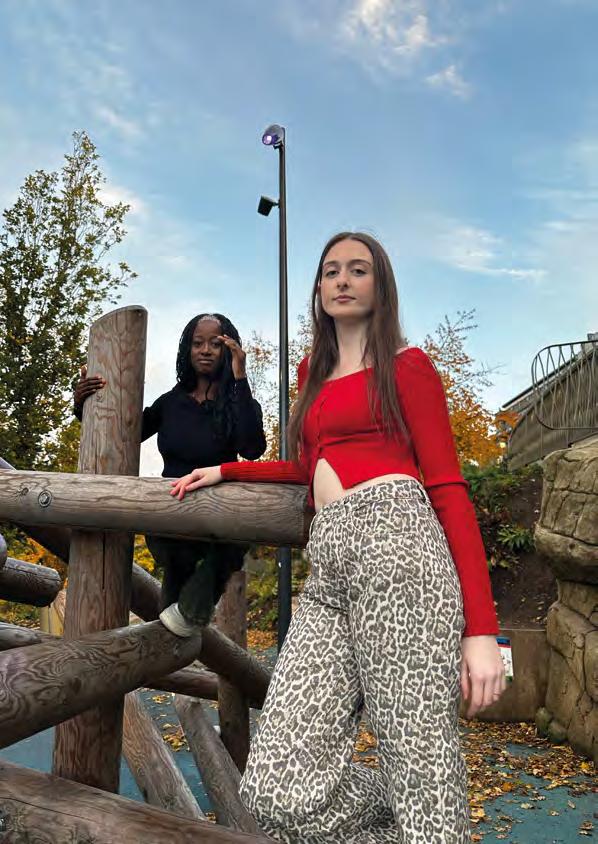

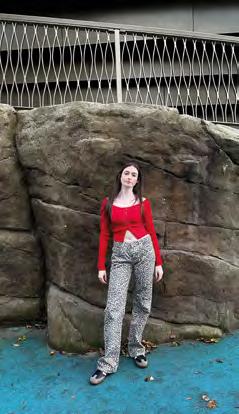

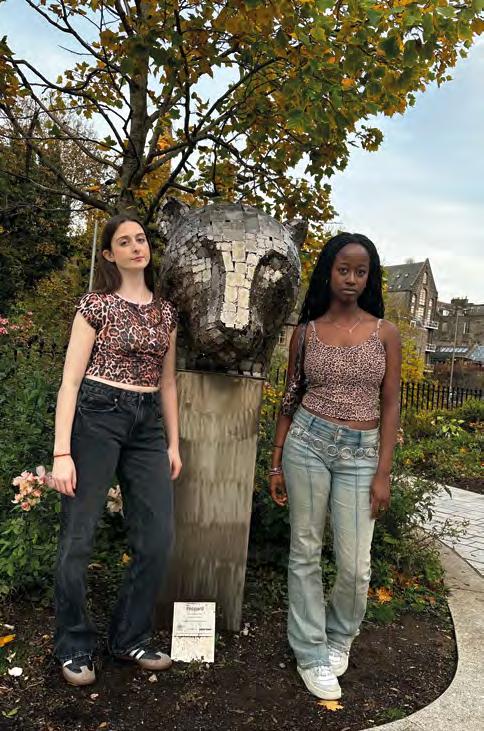
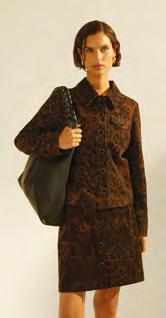


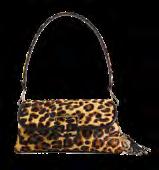


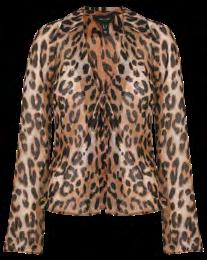
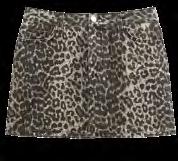


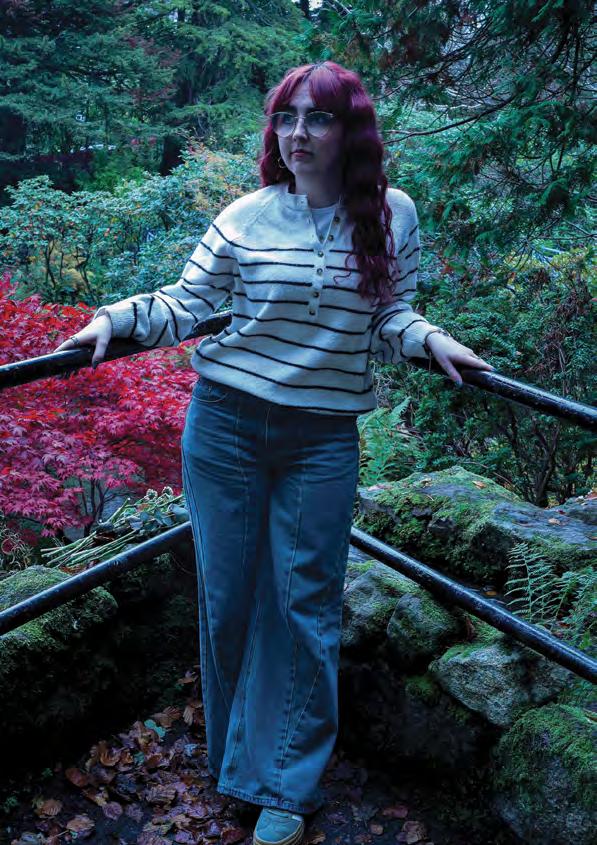
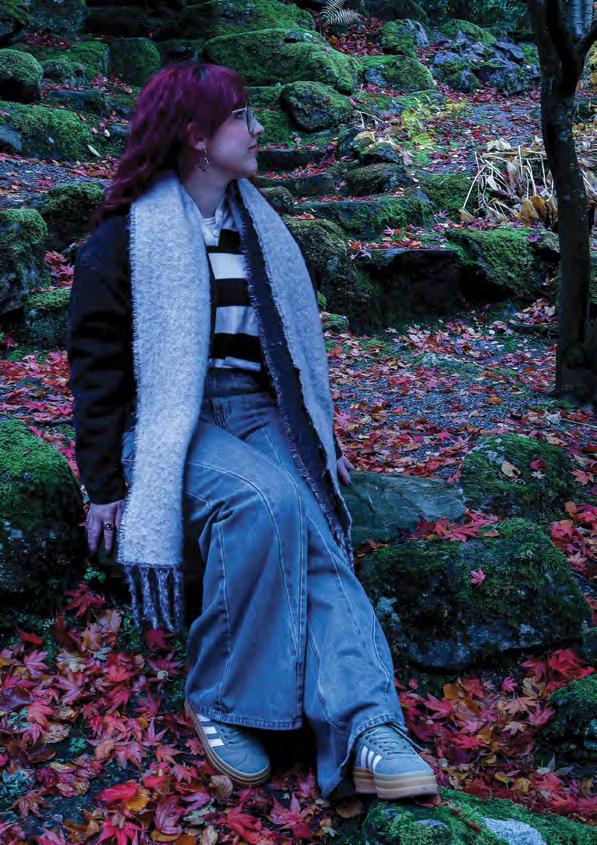

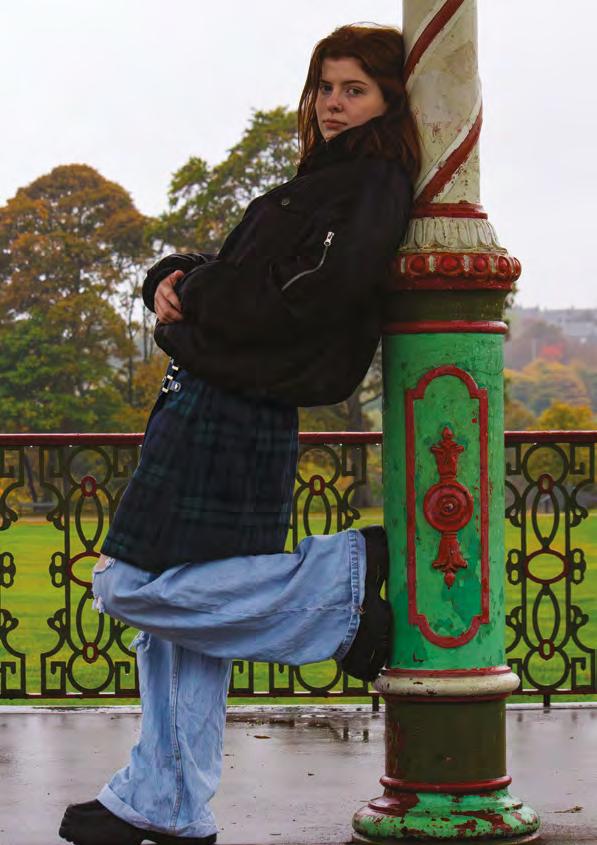
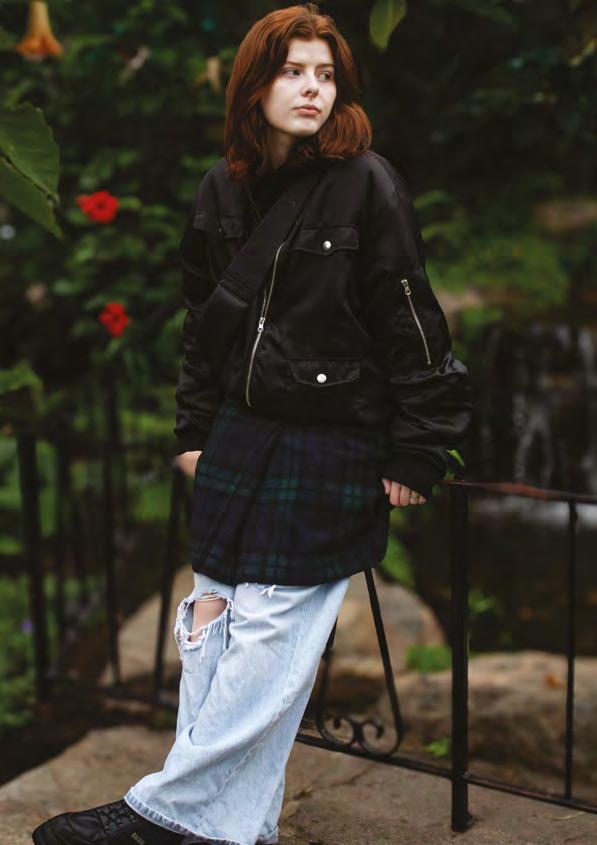
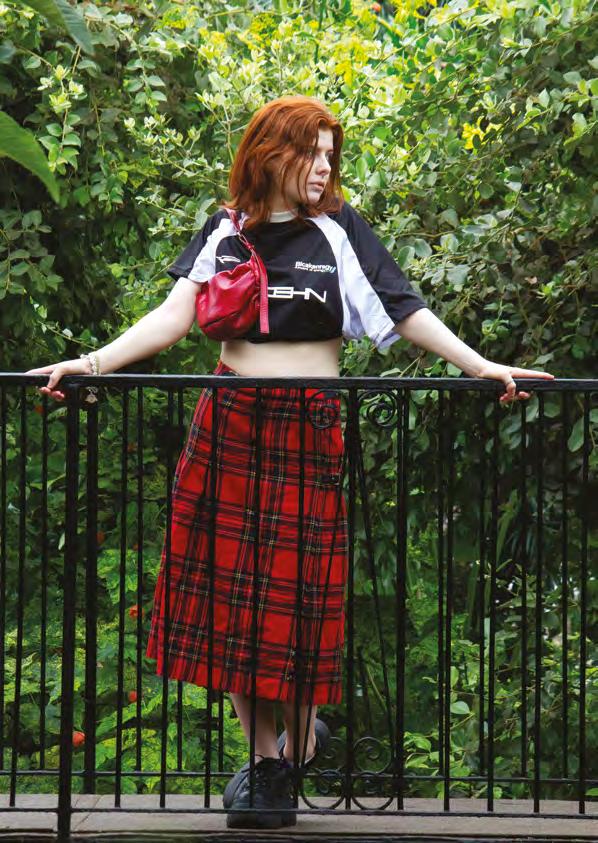

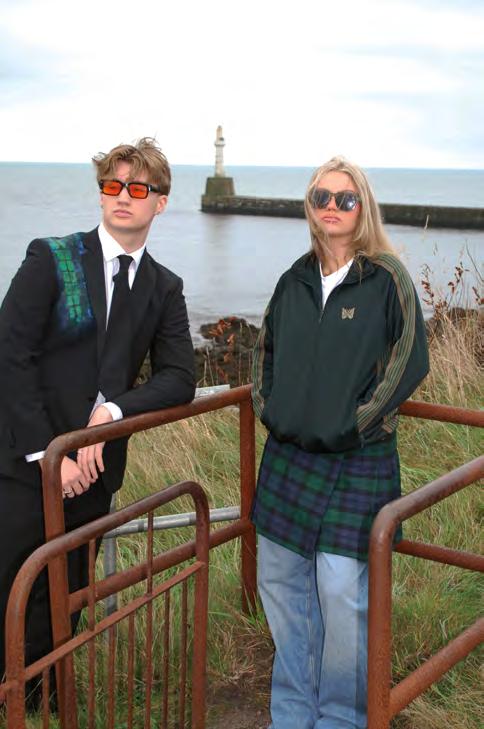


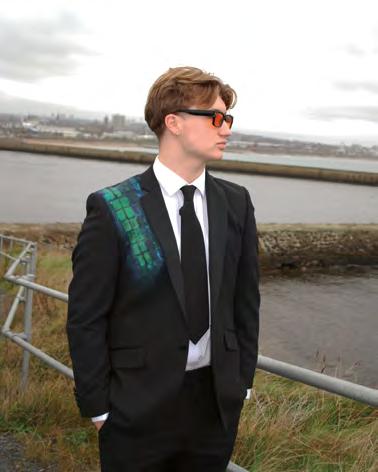
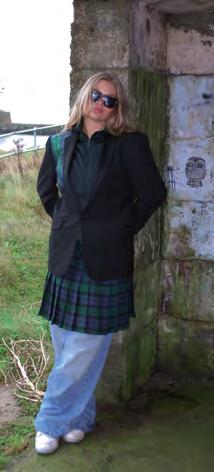

A collection of timeless images that showcase a customised suit jacket hand-painted by Gray’s alumna
Sandra Hendry






Coat- I Saw It First
Skirt- PrettyLittleThing
Boots- PrettyLittleThing
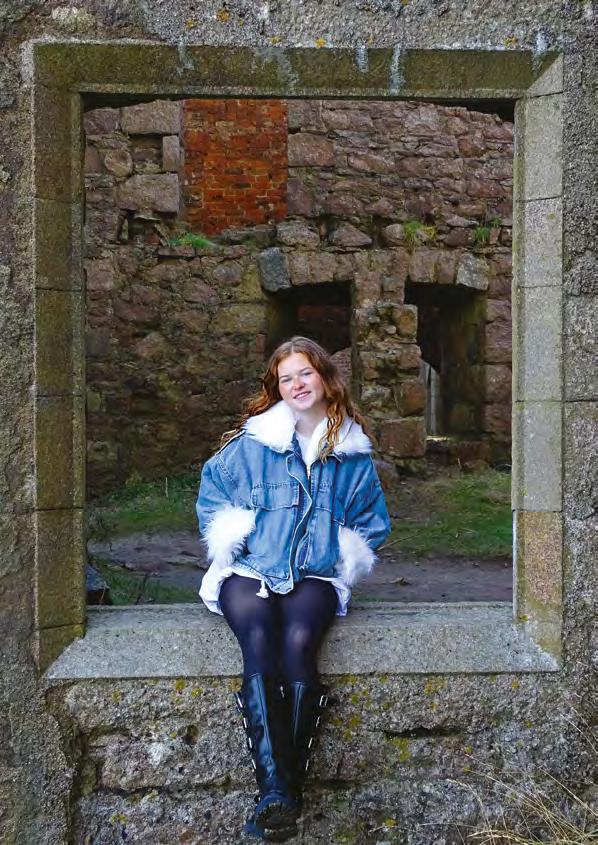

Location: Scottish Field
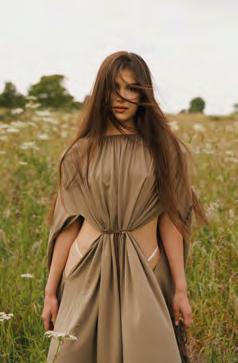

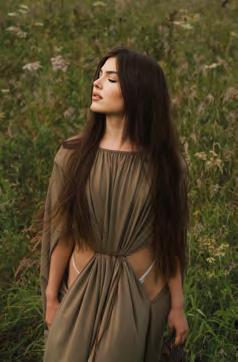
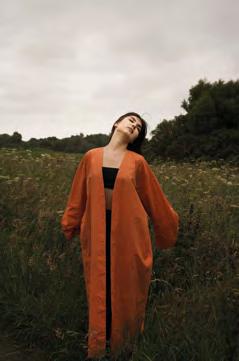
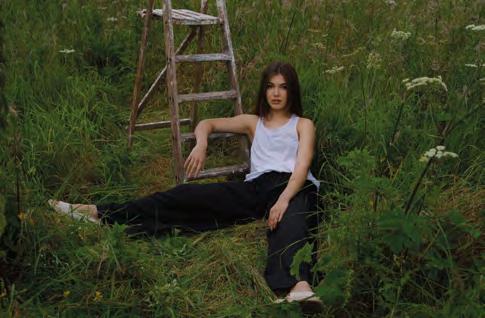

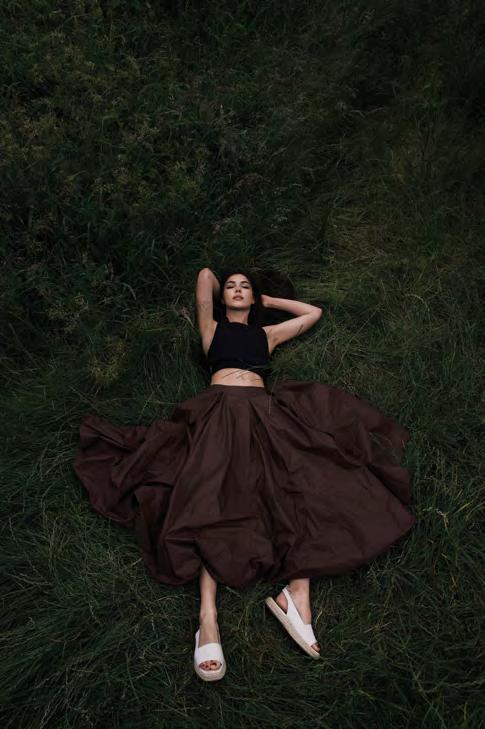
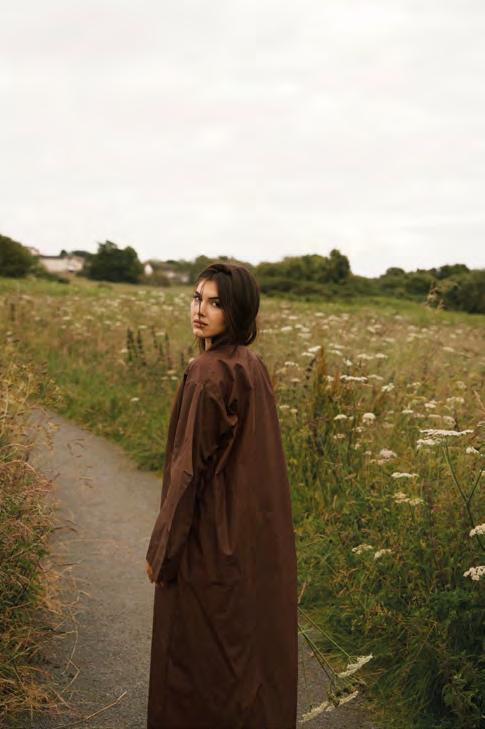
Stylist: Valeriya Semchuk
Photographer: Tatiana Fursa
Location: Scottish Field







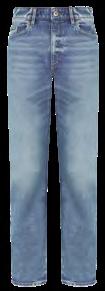
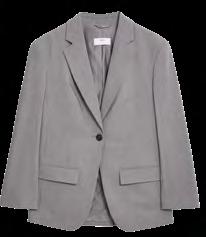
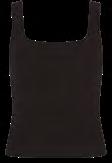


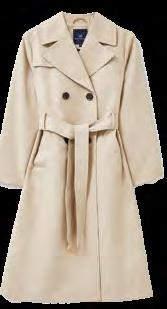
By
The essential basics every wardrobe needs and how to style them
Top right to bottom left
Outfit 1 –
Trench Coat, £260, Djerf Avenue
Hoodie, £67, ARKET
Sweatpants, £57, ARKET
Trainers, £95, Adidas
Earrings, £40, Neima Row Bag, £120, & Other Stories Outfit 2 –
Trench Coat, £260, Djerf Avenue
T-shirt, £50, Djerf Avenue
Trousers, £115, COS
Trainers, £95, Adidas Bag, £178, Madewell Earrings, £35, Neima Row Outfit 3 –
Trench Coat, £260, Djerf Avenue
Top, £55, maebe Trousers, £60, maebe Bag, £23.36, Mango Shoes, £35.99, Zara Earrings, £45, Neima Row
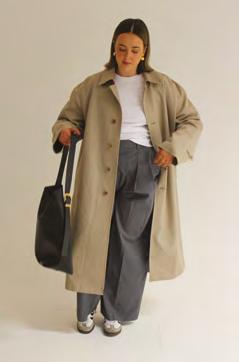
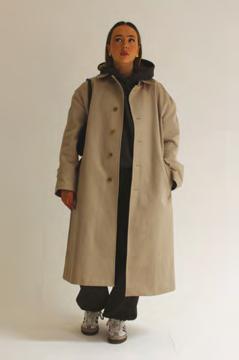




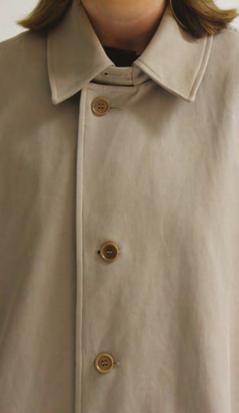
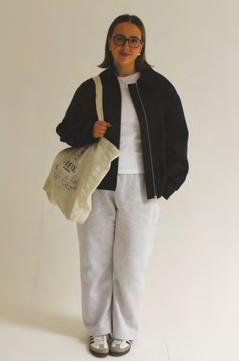


Top left to bottom left
Outfit 1 –
T-shirt, £50, Djerf Avenue Jacket, £95, COS Joggers, £50, Sisters & Seekers Bag, £30, VIEVE Trainers, £95, Adidas Earrings, £40, Neima Row Glasses, £100, LK Bennett Necklace, £326, Mejuri
Outfit 2 –
T-shirt, £50, Djerf Avenue Jacket, £125, & Other Stories Jeans, £75, Abercrombie & Fitch Trainers, £96, Adidas Cap, £23, New Era Cap Earrings, £45, Neima Row Necklace, £326, Mejuri Bag, £18, ASOS Sunglasses, £27, & Other Stories
Outfit 3 –
T-shirt, £50, Djerf Avenue Trousers, £60, maebe Blazer, £65, SLA THE LABEL Bag, £29.99, Mango Earrings, £25, COS Shoes, £35.99, Zara
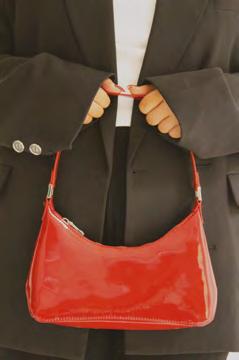
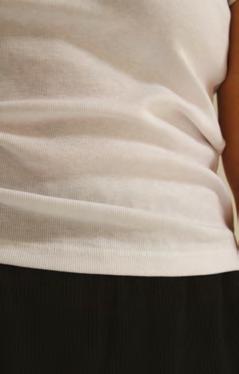
the T-SHIRT



Top left to bottom right Outfit 1 –
Trousers, £60, maebe
T-shirt, £50, Djerf Avenue Jacket, £145, & Other Stories Trainers, £95, Adidas Bag, £178, Madewell Cap, £23, New Era Cap Necklace, £326, Mejuri Glasses, £100, LK Bennett Outfit 2 –
Trousers, £60, maebe
T-shirt, £50, Djerf Avenue Blazer, £110, Mango Bag, £18, ASOS Shoes, £35.99, Zara Glasses, £100, LK Bennett Earrings, £35, Neima Row Outfit 3 –
Trousers, £60, maebe Vest, £45, Sèzane Top, £55, maebe Blazer, £165, Djerf Avenue Bag, £25.99, Mango Necklace, £326, Mejuri Earrings, £25, COS Shoes, £35.99, Zara

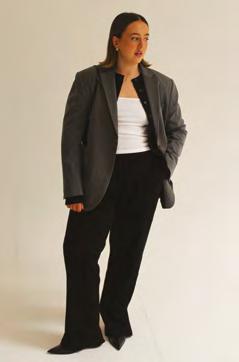




knitted suit: M_fashion shoes: Ugg socks: Shein headphones: Marshall rings: Sribna Kraina earrings: H&M
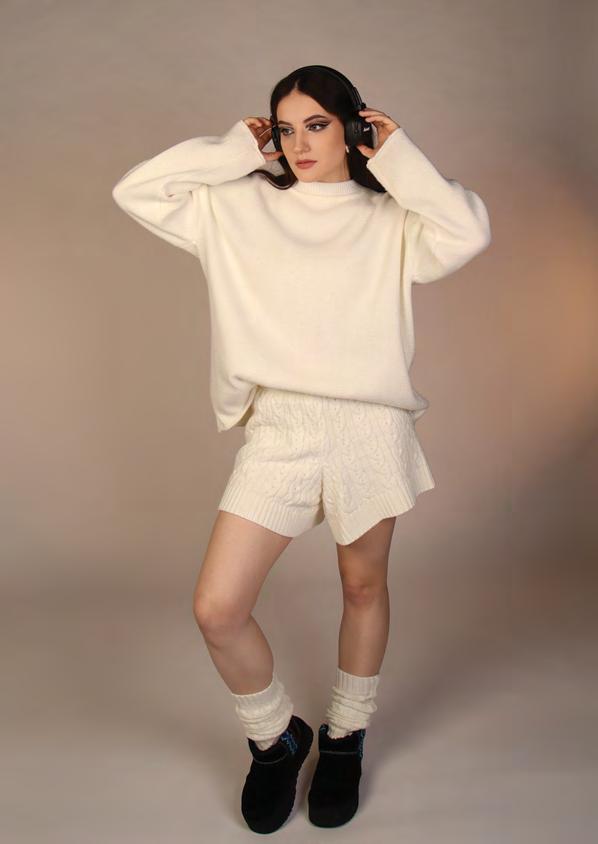

sweater: H&M rings: Sribna Kraina socks: Primark earrings: H&M



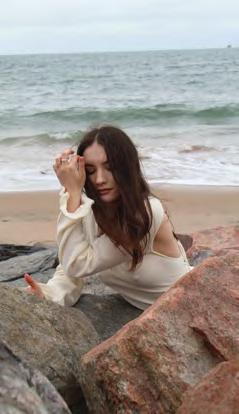
A guide by Enzimar Rengel
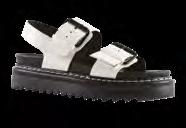
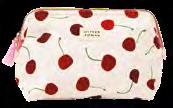

What better way to stay summer ready than with these essentials for every occasion. Stay fresh with aromatic scents and make colour count in different shapes and sizes that demand attention.

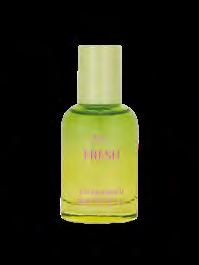

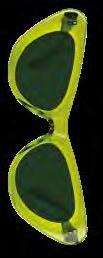
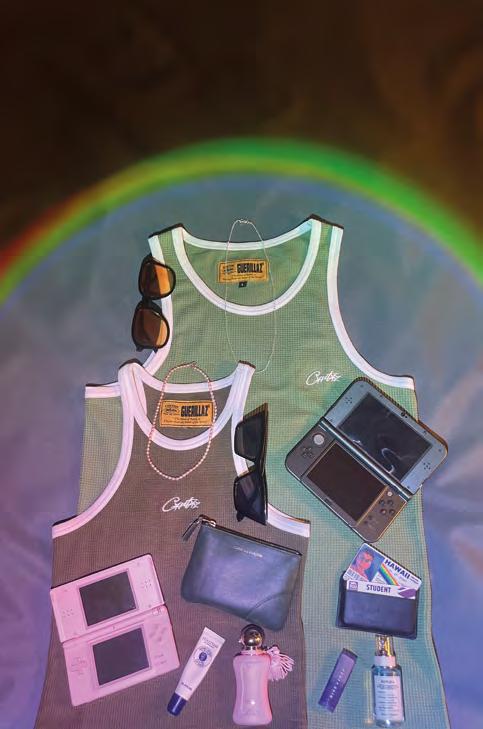
1-mens sunglasses: ASOS £30, 2-mens necklace: First Arrows £162, 3-mens vest: Corteiz £25, 4-womens necklace: Etsy £18, 5-womens sunglasses: ASOS £14, 6-womens vest: Corteiz £20, 7-games console: Nintendo £229.99, 8-games console: Nintendo £99.99, 9-womens purse: Comme des Garçons £50, 10-mens cardholder: Rains £29, 11- womens lip balm: L’Occitane £10, 12-womens fragrance: Parfums de Marly £150, 13-mens lip balm: Fenty Beauty £16, 14-mens fragrance: Maison Margiela £60.

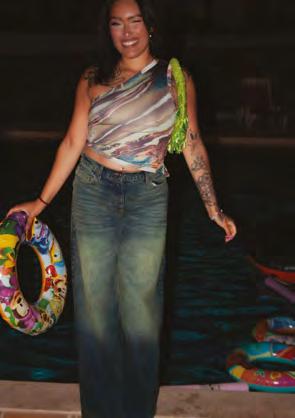
JEANS: COLLUSION
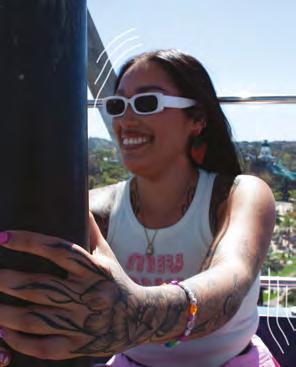
SUNGLASSES: H&M
EARRINGS:
LOVEROCKS
TOP: MIU MIU
SKIRT: ZARA
PHOTOGRAPHERS, MODELS AND STYLISTS:
Enzimar Rengel, Scott Wilson, Michaela Gordon and Dave Gordon
LOCATION: Albufeira, Portugal


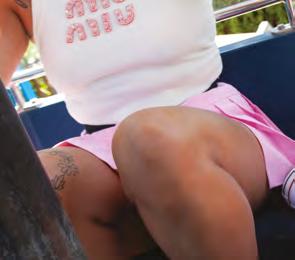

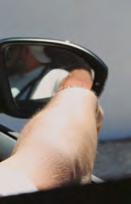

SHOES: CONVERSE CHUCK TAYLORS DAY
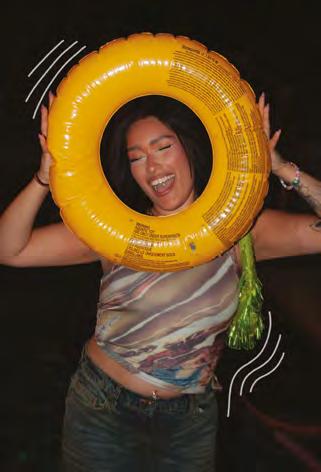
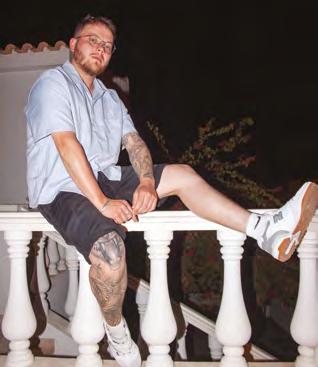
BAG: TK MAXX
BELT: SHEIN
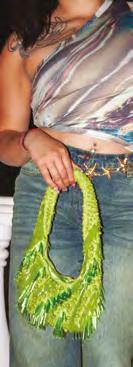
TOP: BERSHKA SHORTS: JACK&JONES
GLASSES: TOMMY HILFIGHER
SHOES: NEW BALANCE 550



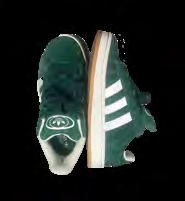

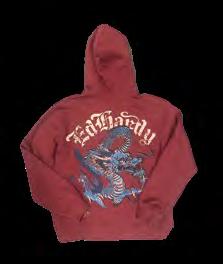
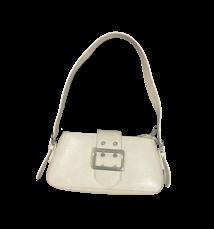

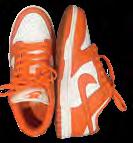

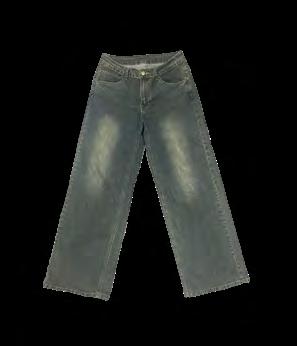





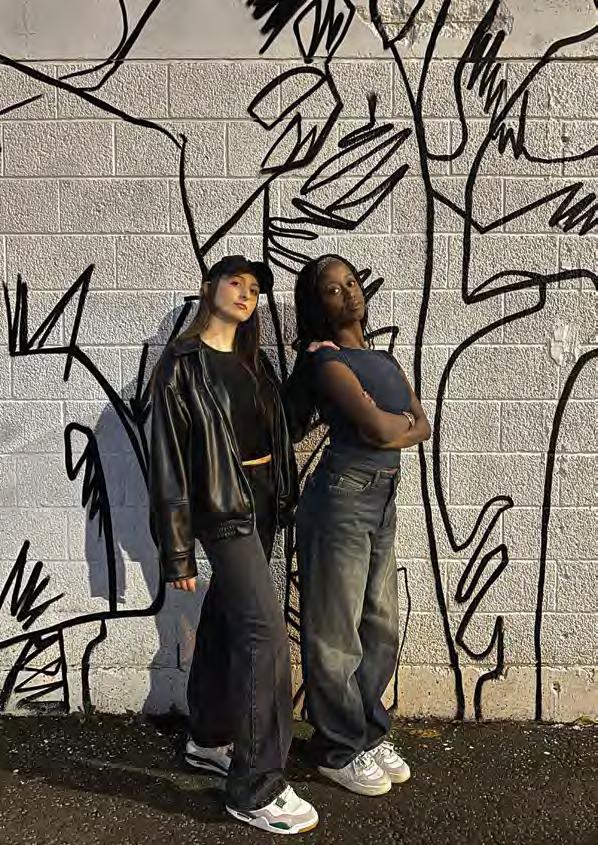
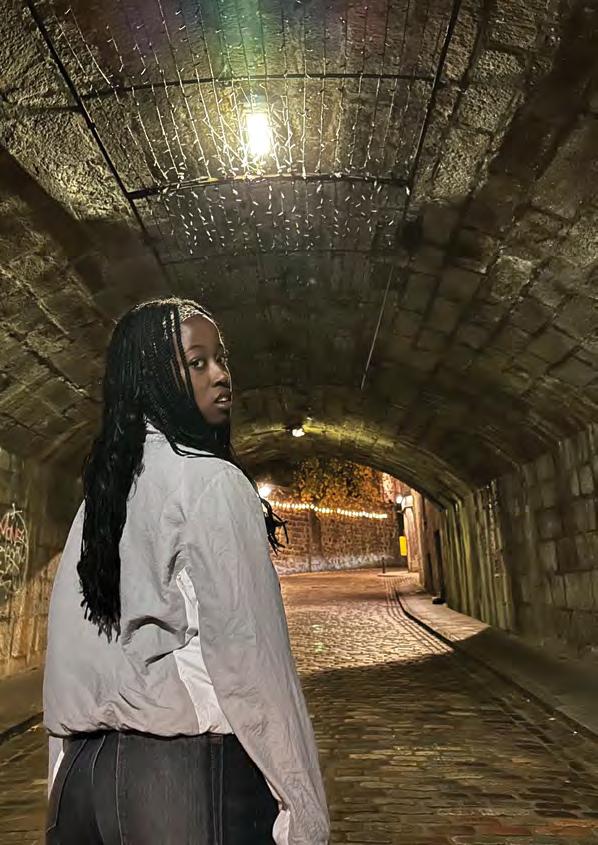

Hat: ASOS
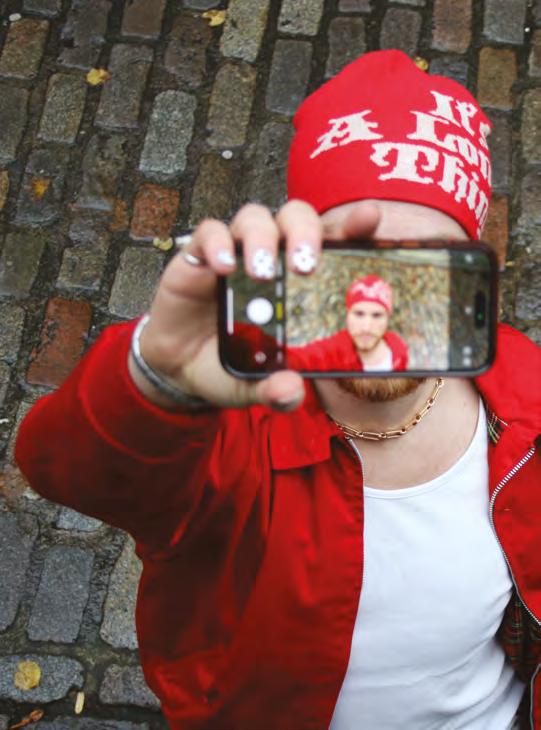
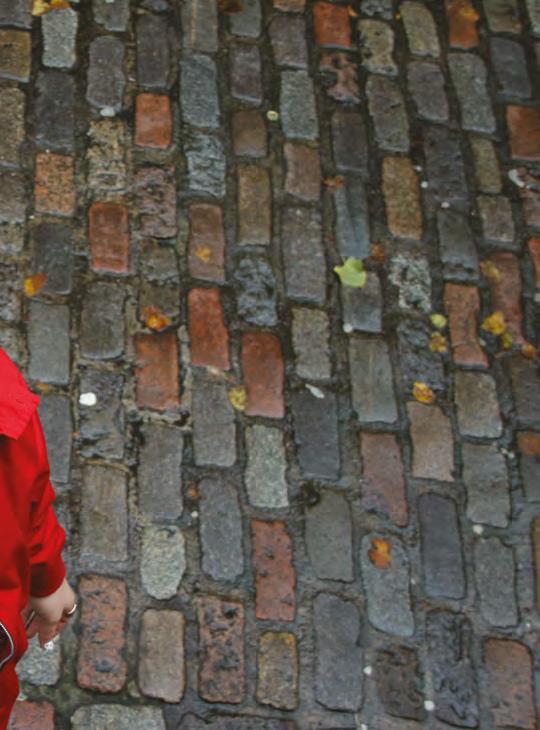
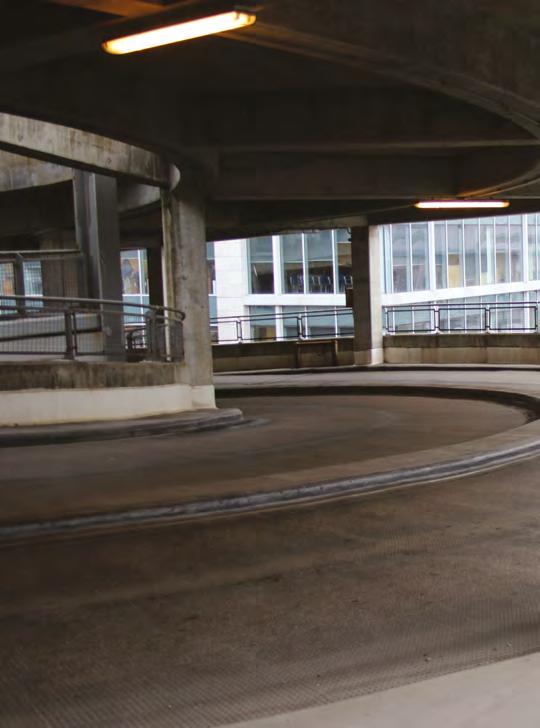
Top: ASOS
Trousers: ASOS
Sunglasses: Primark
Rings: River Island
Chain: Primark
Trainers: BUFFALO
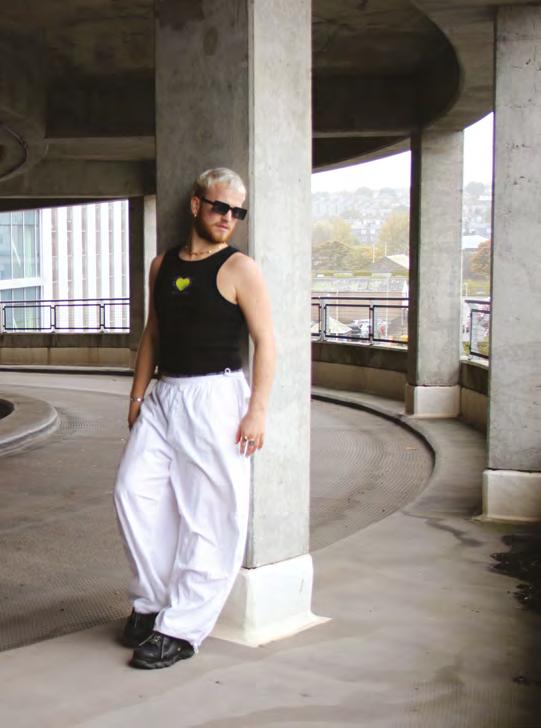

57°8’45.17”N, 2°6’18.00”W

Hat: ASOS
Jacket: Thrifted
Shorts: Jaded London
Belt: ASOS
Rings: River Island

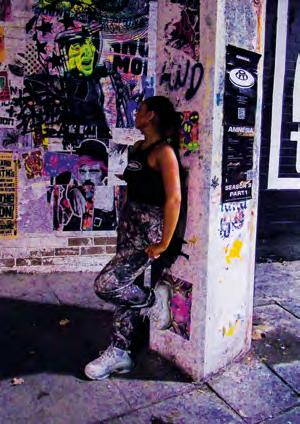

Created By Faith Gormley




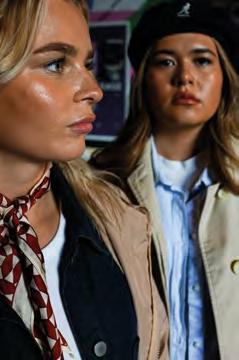

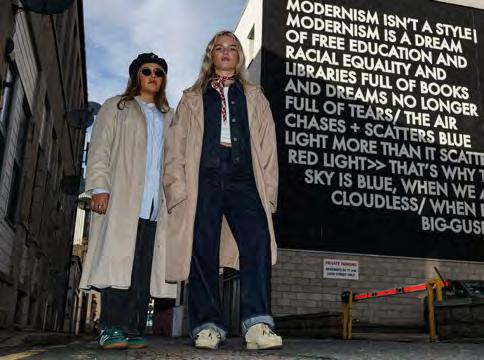

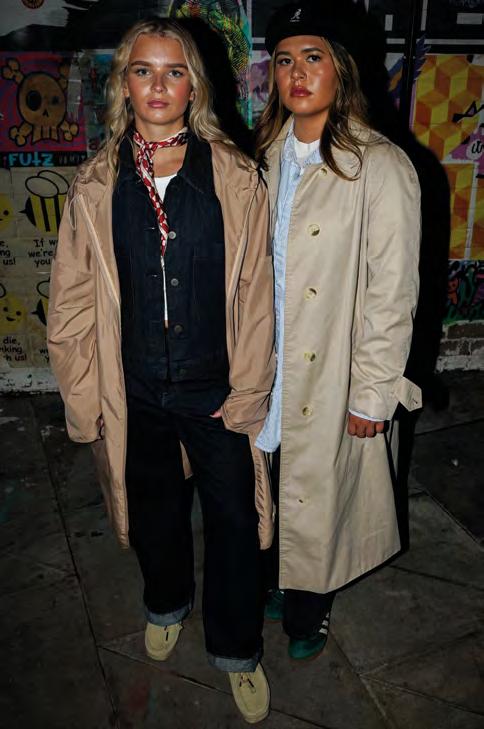
Edana’s outfit details
Trench: Aime Leon Dore
Denim Jacket: COS
Jeans: Weekday
Vest: ASOS
Neck scarf: Zara
Lelia’s outfit details
Trench: Burberry
Shirt: ASOS
Jeans: ASOS
Trainers: Adidas
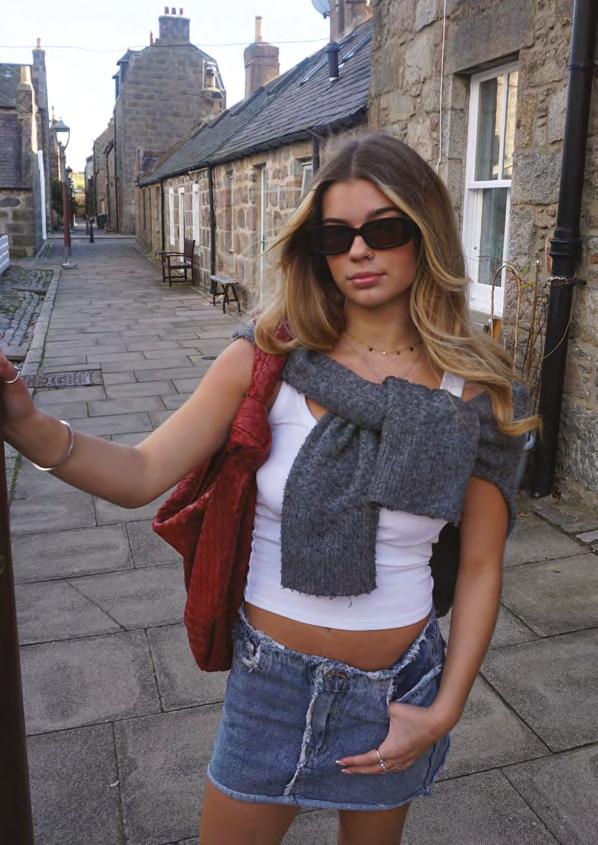


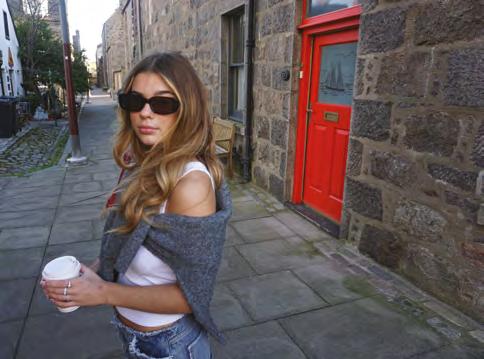
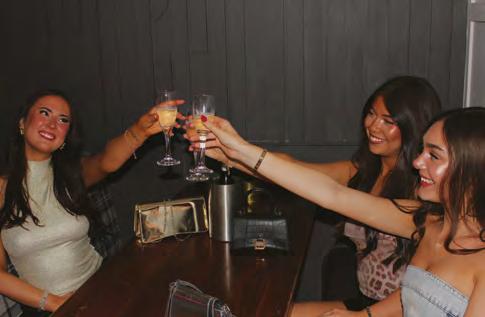
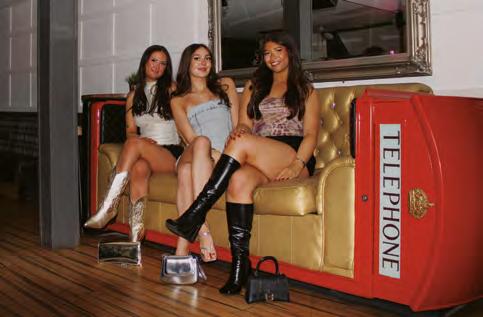


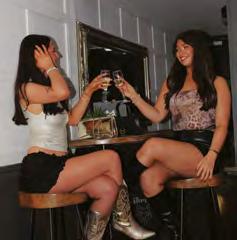
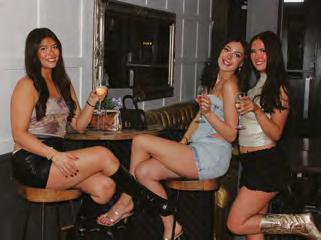
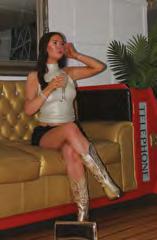
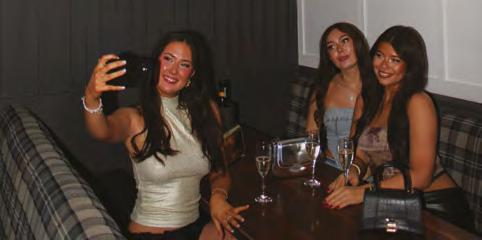
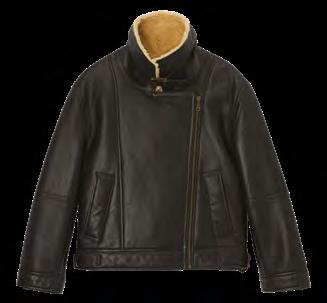
5
by Anna Niedielska
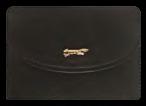
7
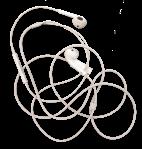

3 4

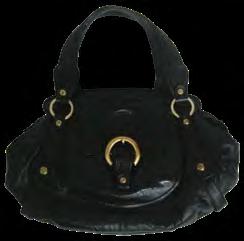
2
8

6
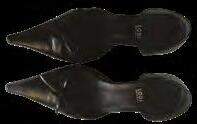
How many times a day do you find yourself being influenced by social media? Would you purchase a t-shirt just because it’s ‘trending’? Do you ever stop and consider where an item was made, how many times you’ll wear it, and is it worth the purchase? Social media has a massive impact on our spending as it influences 71% of consumers buying decisions and is constantly pushing us towards the convenience of fast fashion.
Jorts, bows, and bubble skirts are just some of the many microtrends that we have all seen circulating around social media last summer in 2024, and with TikTok becoming GenZ’s most used social media platform, these trends are passing quicker than ever.
So, what are microtrends? Microtrends are short-lived fashion garments that will be seen all over social media until they come to a sudden end. The trends will start off with a celebrity or influencer wearing a particular item, and then it will be growing increasingly in popularity by getting Instagram or TikTok posts shares until they become ‘viral’, and a must-have. Sooner or later, the garment will be available in all fast fashion brands, such as H&M and Bershka. Microtrends are encouraging these brands to work even faster to just keep up with the demand, which means an increase in production leading to more waste going into landfills. So microtrends are getting fast fashion brands good sales and returning customers, but at what cost to the environment?
Influencer culture is always growing, meaning there is added pressure for the general public to stay on trend, resulting in us turning to fast fashion brands, so we never miss out. You will notice names such as Molly Mae and Jordan Lipscombee showing up on your feed, where they will make influential posts regarding fashion, makeup, and lifestyle. These influencers will have a huge following; take Molly Mae as an example. In November 2024, she had 8.3 million followers on Instagram, meaning hundreds of individuals can get influenced by just one post. This is clearly shown when she posts a picture of her outfit, and the comments are saying, ‘That coat is a need!’ or ‘Must go get a red jacket’. This can lead to a sudden increase in demand for fast fashion brands that influencers are seen wearing, as the people who follow the influencer will want to buy the items instantly since they will now be seen as ‘trendy’. Fast fashion brands will also try to keep up with influencers, as if someone with a large following is seen wearing a high-end garment, fast fashion brands will replicate the item and get it in store in a matter of weeks.
There is one fast fashion brand that has started to work even faster than others, and that is Zara. An article written by Florenne Earle Ledger tells us that most fast fashion brands change their designs every 10–14 weeks; however, Zara has managed to get it down to every 2 weeks. Zara is going to be ahead of all other fashion
brands when it comes to people searching for replicas; therefore, the brand will gain a high number of sales, and by the time the other brands come out with their version, everyone will already have it. Overall, there is no denying that influencer culture is pushing us all to buy more. The trust we have for people with high followings and having FOMO makes us all want to get the most trending garments, even if it means buying unsustainably.
One of the main reasons that fashion trends travel as rapidly as they do is by using hashtags. Influencers will add hashtags in the captions of their posts in order to reach the right audience; this is mostly found on TikTok; however, hashtags are used on every platform, such as Instagram and X (previously known as Twitter). A couple examples of highly used hashtags on TikTok would be #FYP, which means the influencer is trying to reach your feed, known as the for you page, without you searching for it. #OOTD, the influencer showing you their ‘outfit of the day’; will include them stating where each garment is from so the viewer can easily purchase it for themselves; and lastly #fitcheck, which is like the previous hashtag, however it is usually done quicker, and the garments will still be listed in the caption.
These hashtags make searching through social media more convenient for us, meaning we will find ourselves getting more influenced by each outfit that is shown, especially when we know all the details. There is a study
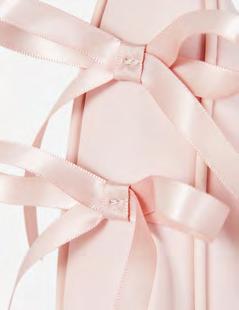
that shows that 86% of social media users state that they have purchased apparel or fashion accessories after seeing them on a fellow influencer, which emphasises how easily persuaded we are from a post on our feed, especially if the garment is affordable and easy to buy online. Since 2019, the average time spent on TikTok will have doubled by the year 2024, and not only that, the same study shows that the average user on TikTok spends 23 hours and 30 minutes a month scrolling through videos, highlighting just how much time is spent watching influencers videos and the amount of people the hashtags are reaching. These hashtags also work as earned media for fast fashion brands, as they do not need to pay to promote items, but trends can still be made just by viewing a post and clicking on the hashtag. Therefore, the use of hashtags on social media continues to push us towards overconsumption habits and encourage us to buy from fast fashion brands without considering how ethical and sustainable our behaviour really is.
Concert attire is another growing trend highly influenced by social media that impacts fast fashion brands. On the lead-up to a concert, you will see hundreds of posts and videos on social media platforms of “Concert Inspo” to inspire people into buying a brand-new outfit for one night. Taylor Swift’s ‘The Eras Tour’ is a memorable example as, for the past two years, the singer has been selling out stadiums globally with capacities of up to 90,000 people. It became a trend to dress up as one of Swift’s musical ‘Eras’ for the show, and we began to see many extravagant outfits people had put together. For example, for the era ‘Reputation’, we could see people buying snake accessories and newspaper print outfits, or for ‘Lover’, we could see sparkly pink outfits with love hearts and butterflies. The fast fashion brand that was most used for the purchase of these outfits was Shein due to convenience and affordable prices. This brand makes it simple to look for concert outfits, as when you search an artist’s name on their website, it provides you with hundreds of different outfit ideas that are in line with the ‘aesthetic’ of that concert. This trend is showing no signs of dying out as 2025 holds many more concerts in the UK, such as Sabrina Carpenter, Gracie Abrams, and Billie Eilish, who all have very different aesthetics. On the other hand, concert attire is allowing people to show their creative side, as over social media we have seen people creating their own outfits for their show as it can be more sustainable and affordable as well as adding more excitement to the night. This means it becomes less likely for these garments to end up in landfills as there is more of an attachment and memory connected with them.
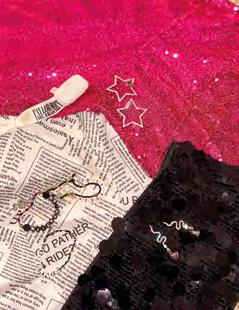
“86% of social media users have bought fashion accessories that an influencer was seen wearing”
Upcycling refers to giving life to a product or garment that is no longer practical and in use. This has been done on social media in a variety of different ways, but to give a few examples, people have been seen wearing skirts as tops, button-up shirts as bubble skirts, and t-shirts upside down to create a different fit. These are very simple ways to turn an old, used item into something that fits your current style! The idea of thrifting clothes is also a growing trend on TikTok; this mainly started in the US as people would post videos of themselves looking through thrift stores; however, this idea has reached the UK, where we have seen people beginning to post about the garments found in charity stores. Thrifting and upcycling are a great place to start if you want to move away from fast fashion and become more environmentally friendly; it will prove to be cheaper, give you a new hobby, and make you feel more attached to certain clothes.
So how is it possible to stay on trend and consider sustainability? We have seen an increased growth in thrifting and upcycling as consumers become more aware of their spending habits as well as the environmental issues caused by fast fashion. This shows a positive future for sustainability, however negative for fast fashion brands as consumers move towards a more circular economy, making them less dependent on these retailers.
Social media is a great for fashion advice and finding out about the latest trends, although we cannot argue that it is pushing us into unethical and unrealistic shopping habits. Influencers, microtrends, and concert attire have created a sense of FOMO for users and are forcing us to turn to fast fashion brands in order to keep up with the fast pace of change. Overall, this means there is a positive impact for fast fashion brands as there is an increase in demand of goods and returning customers. However this leads to a negative impact on the environment and sustainability as these short-lived garments are poorly produced and end up in landfills.
By Brooke Shinnie

“You Time Is The Most Important Time”
Youcantellalotaboutaperson fromseeingwhattypeoftrinkets&everydayessentials theycarryaroundintheirbag. This is what’s in mine...





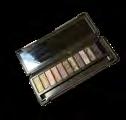


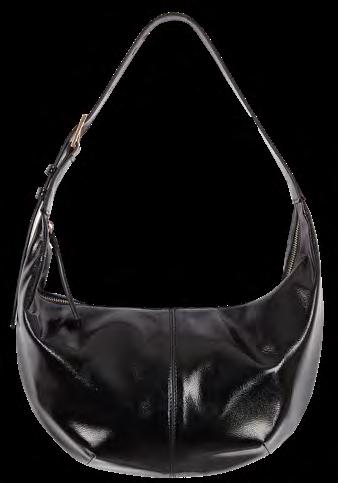





“Where colour meets creativity: uncovering the art of self-expression, discover the transformational power of makeup, blending creativity and technique to redefine beauty on your own terms.”
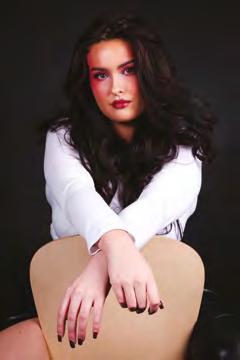


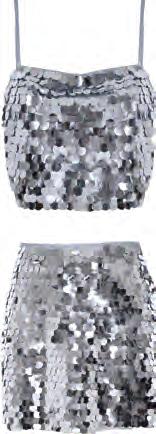
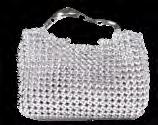
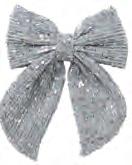

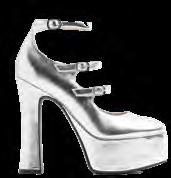
By Brooke Shinnie

from the little details to the BIG MOMENTS

Top - Quiz Trousers - Model’s Own Heels - M&S
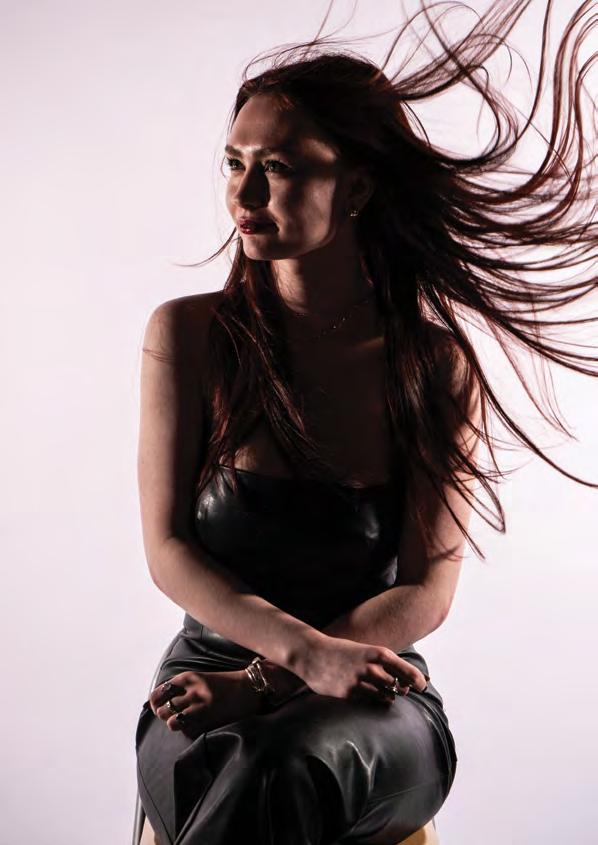
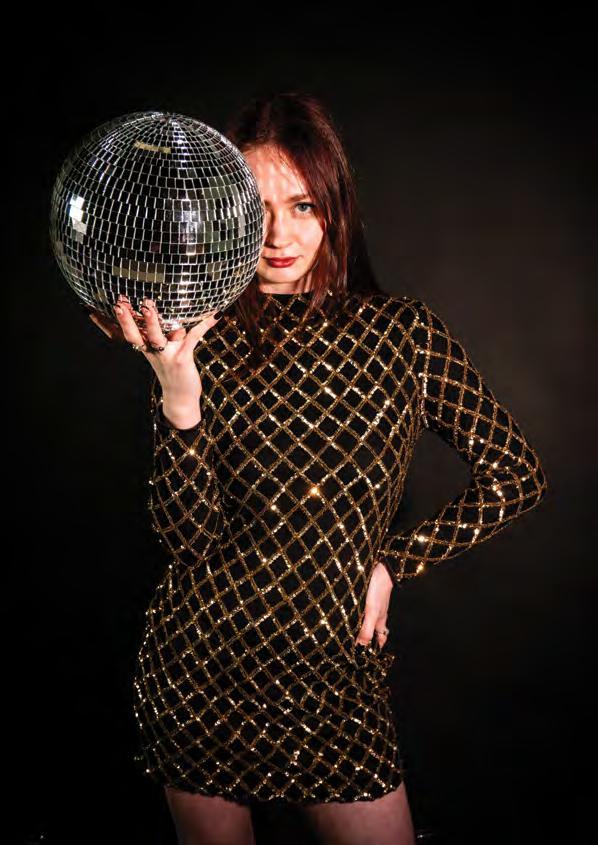

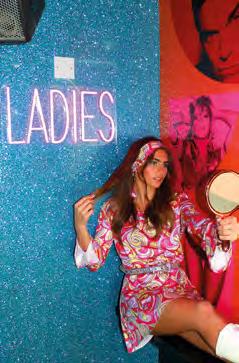
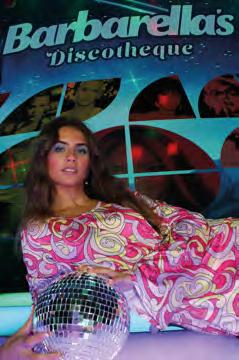
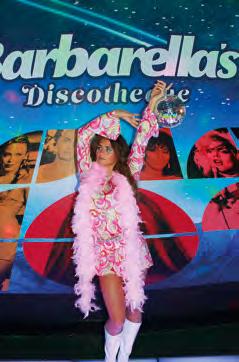
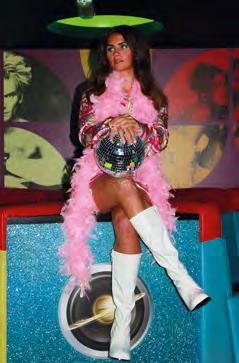



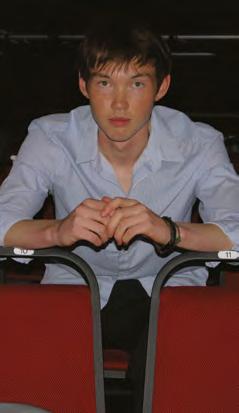




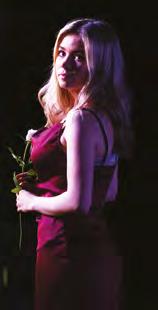
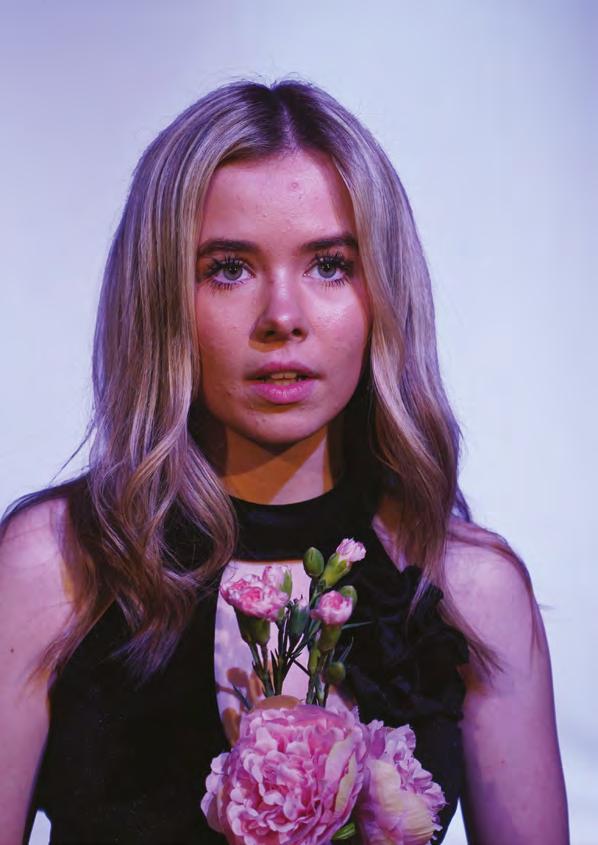
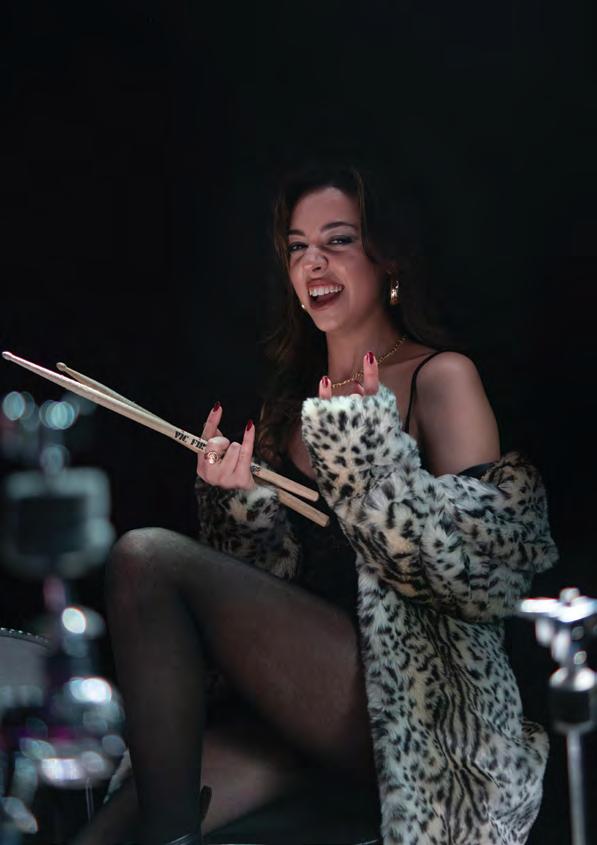


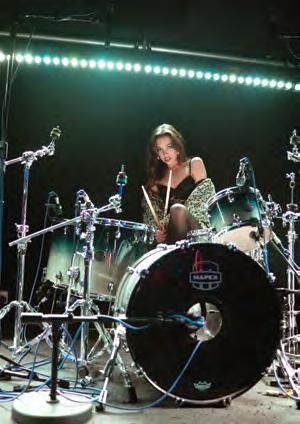

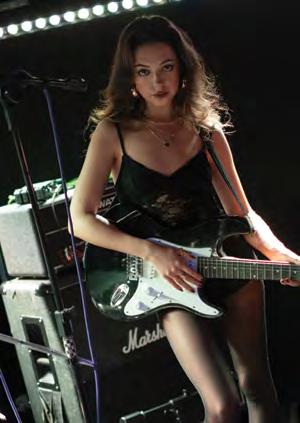

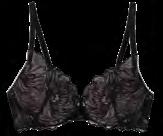
The timeless fabric that will elevate any outfit keeping you looking both chic and classy.

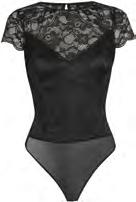
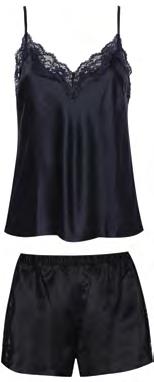
“I consider lace to be one of the prettiest imitations ever made of the fantasy of nature.” Coco Chanel
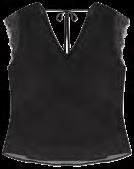
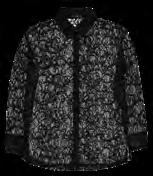
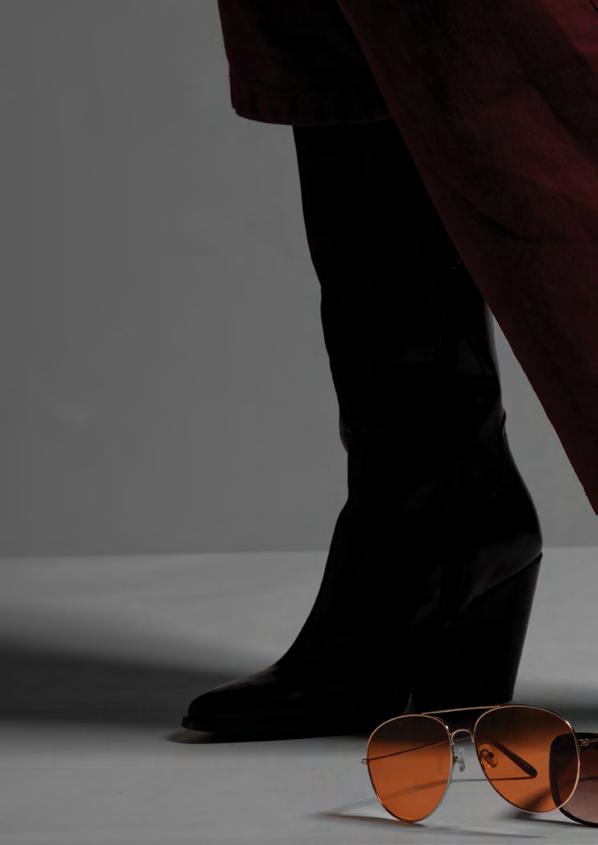
Where fashion and music meet... Where fashion and music meet...

Photographers: Casie Cameron, Mairi Douglas
Location: North East Scotland College
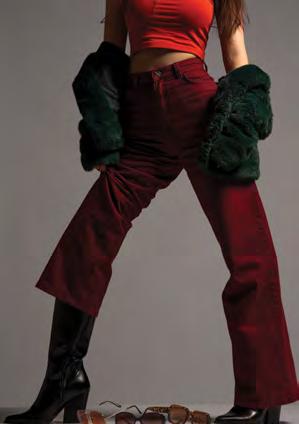
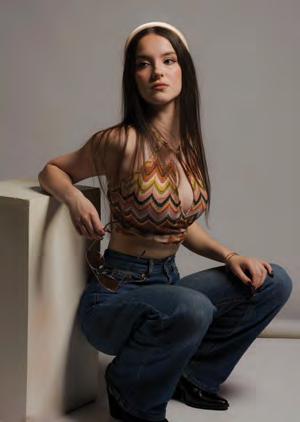



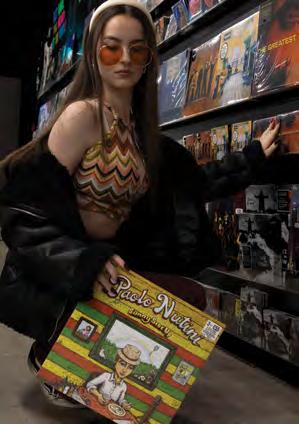
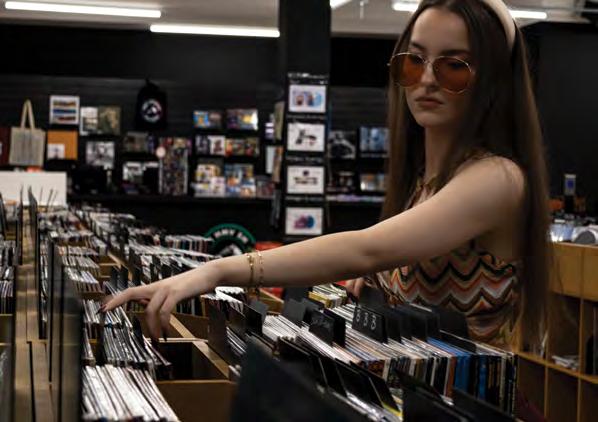


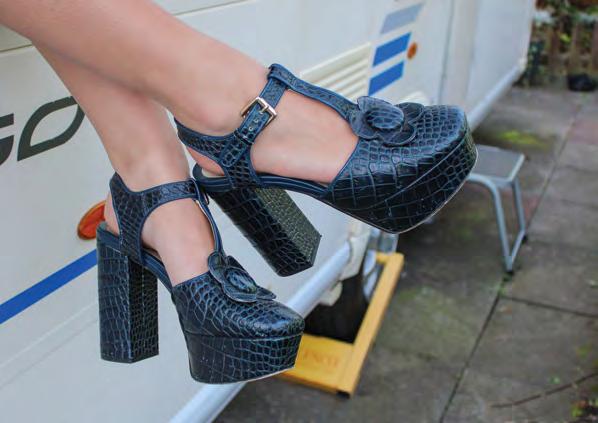


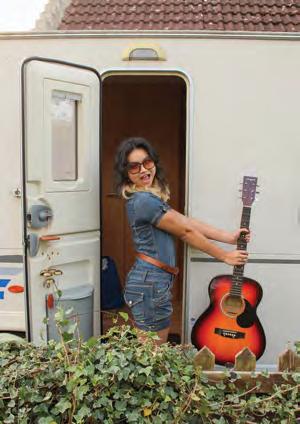



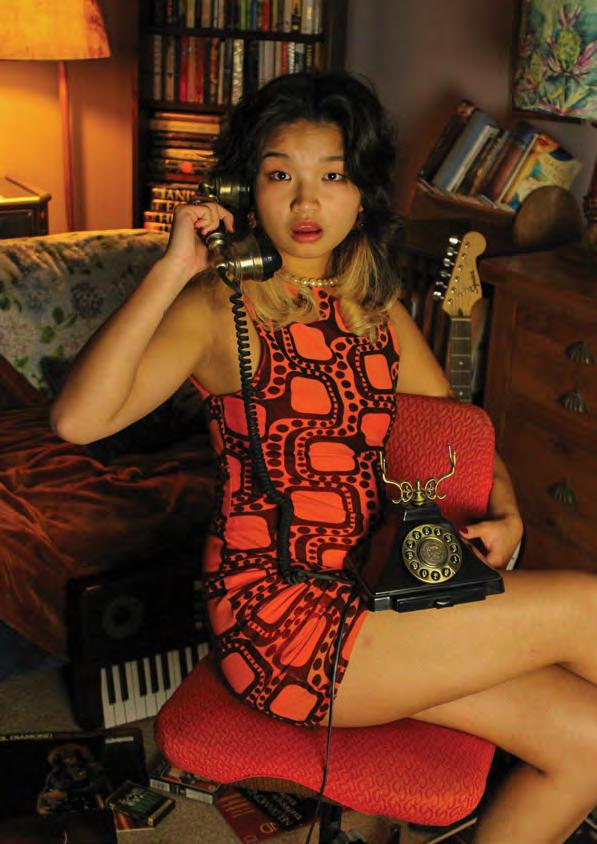
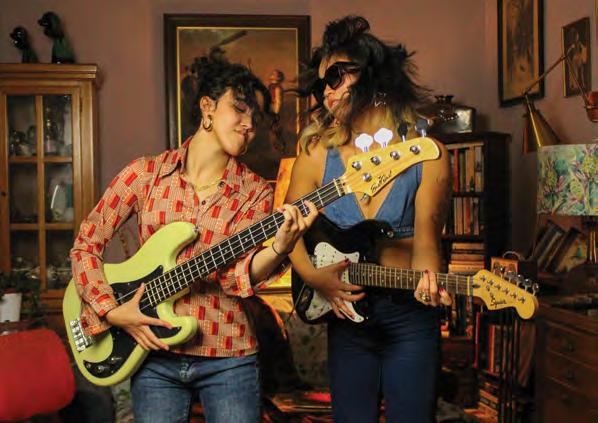

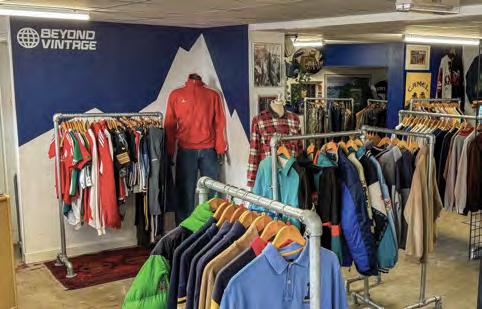
Taking a dive into the rise in popularity in vintage fashion with students, focusing on sustainability, Aberdeen’s high street, and discovering your own personal style. Talking with the owner of Beyond Vintage to gain insights on what it’s like owning a vintage store in Aberdeen and if there is demand for it within the city.
In recent years there has been a rise in popularity in vintage fashion, especially styles from the 90s and 2000s. Consumers are getting bored of everyone wearing the same thing and want to be different. Unique is trendy and students want to create their own image through their fashion sense. Vintage fashion allows this as each piece is one of a kind, you’re not going to walk into a classroom full of people wearing the same jacket as you. Vintage fashion is not only unique but also sustainable. With the rise of fast fashion, consumers are becoming increasingly more aware of the effects the fashion industry has on the environment.
Aberdeen has two major universities, University of Aberdeen and Robert Gordon University with over 30,000 students between them. This makes up a massive proportion of the city’s overall population. It gives it a very young and creative dynamic, allowing people to show self-expression through ways such as fashion. With fashion interest increasing within the city, this has led to a growing interest in vintage fashion, especially from students.
Rather than buying pieces that may only be worn once or twice, consumers are now realising that they would rather spend their money on timeless pieces that will last a lifetime.
“Vintage clothing is becoming the forefront of sustainability within the fashion industry”
By making fashion conscious decisions, the environmental impact is being reduced by repurposing items and giving them a new life whilst still staying fashionable. These preloved treasures are not only environmentally friendly but are also better quality. These items have already lasted decades and are extremely likely to last you even longer than that. Whilst fast fashion may be cheap, the quality really mirrors that and so, in the majority of cases, will only last a person a few wears. Why wouldn’t you prefer a high-quality durable piece over a disposable fast fashion item? High quality doesn’t always mean more expensive as vintage fashion is usually a cheaper alternative as well; perfect for students who only work part time.
So why shop vintage fashion? Vintage clothing is becoming the forefront of sustainability within the fashion industry as it offers an alternative to the relentless cycle of fast fashion consumption.
Students are well known for being experimental with their fashion, they are open to trying to find unique pieces which separate them from their peers, and allow their own personality to shine through and be fashionably distinctive.
It is no secret that over the past few years Aberdeen’s High street has been slowly disappearing like many more nationally as

shoppers buy online. Many independent stores have struggled and closed down especially since Covid, leaving consumers with little to no fashion options and not much but an empty high street. Young people need unique independent stores that bring a sense of creativeness through fashion options.
Although there may not be many, there are some hidden gems around Aberdeen, one of which is Beyond Vintage. This store is located at 55 Netherkirkgate, a historic part of the city, which is being transformed by a variety of independent businesses such as coffee shops, tattoo parlours and night clubs providing a vibrant scene which particularly attracts students. The Shop prides itself on selling quality branded and unbranded vintage items the majority of which are from the 90s/00s era, mainly focusing on sportswear, casual attire and designer brands.
To dive further into the rise of vintage fashion and what it’s like owning an independent vintage store in Aberdeen, I spoke to Kiefer, who is the owner of Beyond Vintage. We discussed inspiration, demand for vintage clothing in Aberdeen, what makes Beyond Vintage unique, and his future plans. His insights were interesting and greatly appreciated.
effort goes into researching and forecasting trends. When our customers shop at Beyond Vintage, they find rare gems that you usually wouldn’t come across in other vintage stores.
What do you see for Beyond Vintage in the future?
I see Beyond Vinatge growing into a go to spot for anyone looking for unique 90s pieces and more. I want to keep expanding our selection and maybe even host some pop ups to bring the community together. It would be cool to see more people incorporating vintage pieces into their personal style.
Reflecting on this conversation, it is clear that stores like Beyond Vintage are the way forward to ensure longevity of the high street by inticing students to invest in quality, unique pieces. There is a lot of time and effort put into sourcing each individual item, ensuring a truly one of a kind shopping experience. The excitement of searching through the racks, not knowing what you’re going to find, is something that larger retail companies simply cannot recreate giving Beyond Vintage their unique selling point. Students can create their retro time capsule wardrobe by stocking up on all their favourite brands in a sustainable and affordable way. Beyond Vintage guarantees a fun shopping experience providing a huge range of items that you are sure to find something you’ll love.
“When our customers shop at Beyond Vintage, they find rare gems that you usually wouldn’t come across”
What inspired you to start your own vintage store?
I’ve spent most of my career in the fashion industry, but it was when I was working on Brick Lane in London that really opened my eyes to the vintage scene. I was surrounded by seriously stylish people that all wore vintage pieces. When I moved back to Aberdeen, I noticed there weren’t many good vintage clothing stores in town, I knew I had to open my own shop.
Do you think there is a demand for vintage clothing in Aberdeen? If so by who?
People are starting to realise that the clothes you find in high street shops and online just don’t hold up; it often falls apart or changes shape after a few washes. In contrast vintage items are made from better quality materials, they’ve already lasted 20 or 30 years so there’s a good chance they’ll last even longer. Yet the demand for vintage in Aberdeen is slowly growing, more vintage sellers are starting to pop up. Students make up a big part of our customer base, but we get people of all ages browsing through the racks.
How do you source your vintage items?
Sourcing is definitely the toughest part of the job, you never know what you’re going to find. Some days you strike gold, and other days are a bit of a bust. I make it a point to source from various places to get the best selection. Everything in our shop is handpicked; we don’t buy bales. We’ve found that a lot of those items just don’t meet our quality standards.
What makes Beyond Vintage unique compared to other vintage stores in Aberdeen?
As every item is individually selected, we manage to source pieces that are specifically from the 90s and 2000s era. A ton of
With so many students in Aberdeen with limited disposable income, there is a great opportunity to promote vintage shops. It has potential to become a fashion forward city by encouraging people to shop locally where they can express their own individual style through repurposing. The amount of waste produced by the fast fashion industry is an issue that consumers are becoming increasingly more aware of and therefore want to do their part by reducing it and making more fashion conscious decisions.
As the popularity of vintage fashion grows it would be nice to see the revival of the high street in Aberdeen with more independent businesses. They do not only fill up empty space, but they bring a sense of newness and excitement to a city which is trying to revamp itself. Students are eager to explore their own personal style in a sustainable way so the next time you think of ordering something online, think twice, and have a wander down to Netherkirkgate. You won’t be disappointed.
Written by Alix Peel

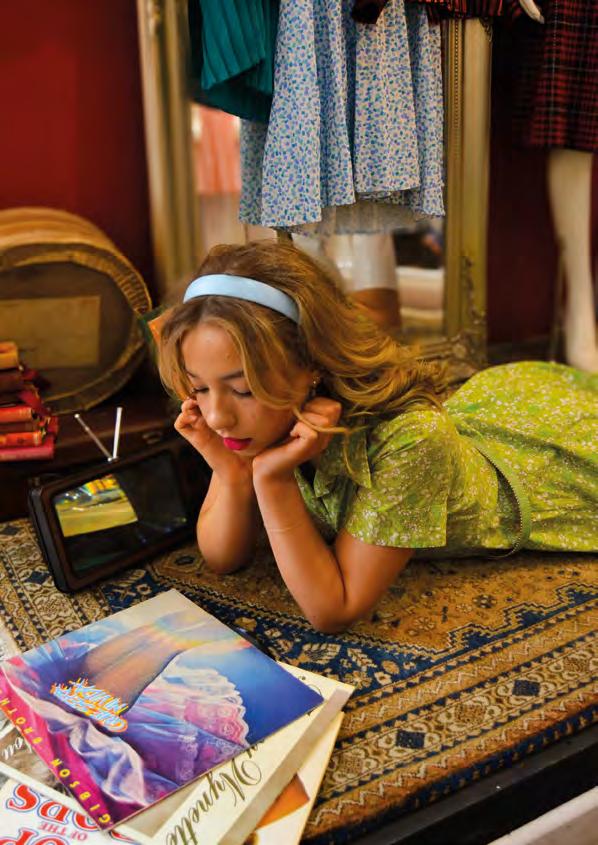

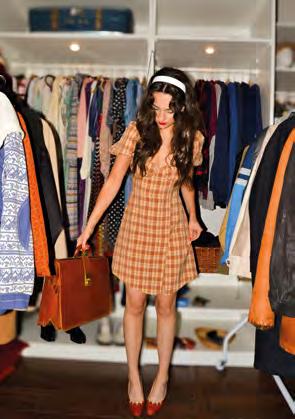


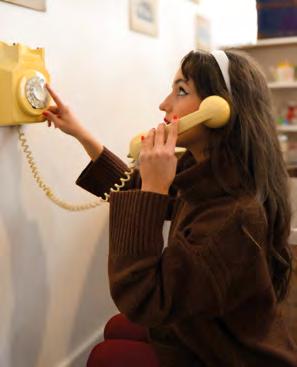
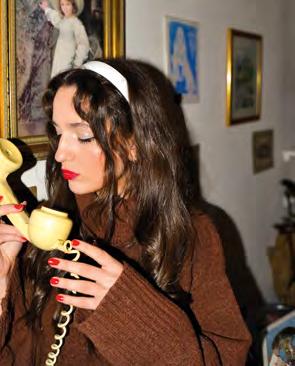
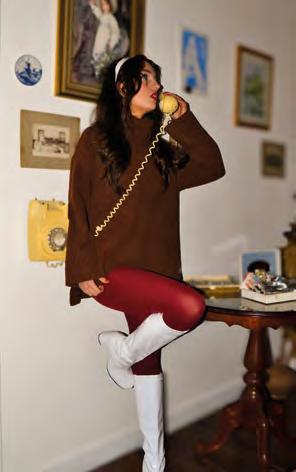
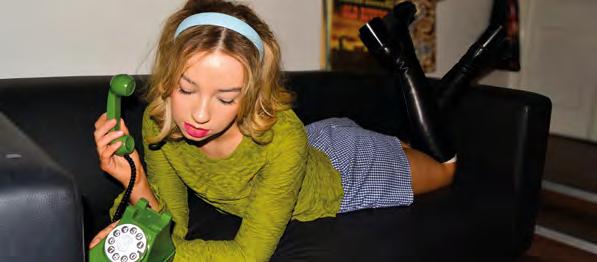



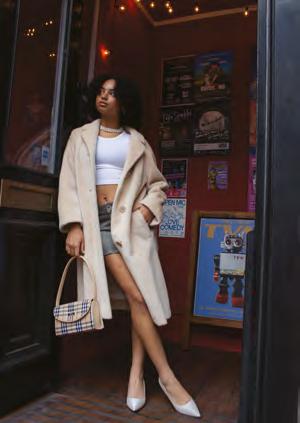
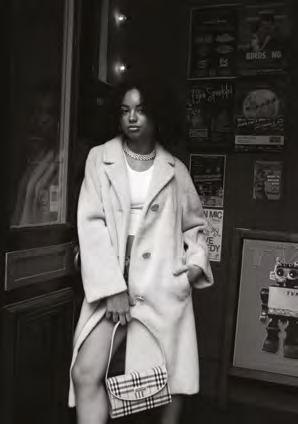





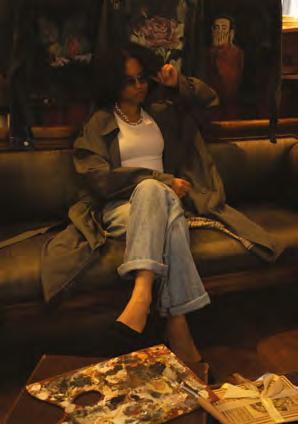
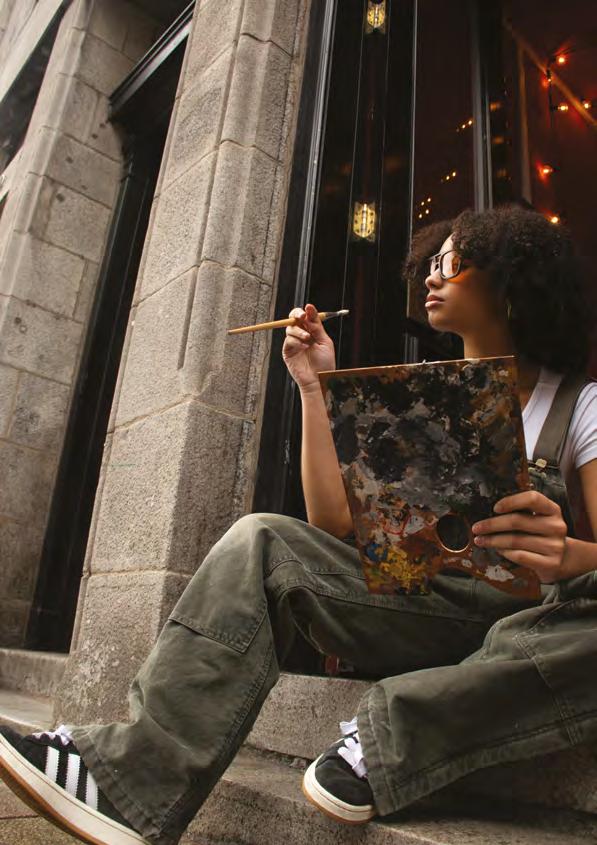
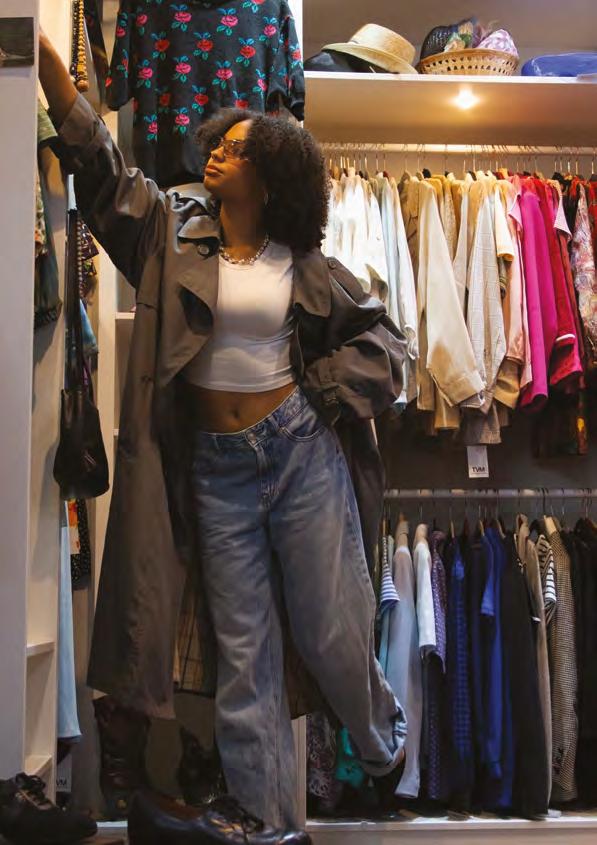

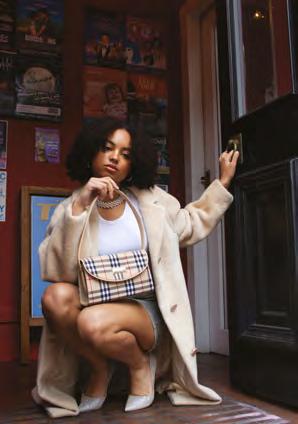
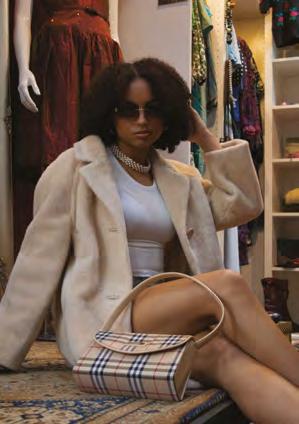


Bobbi Anderson Thoughtful Imaginative Spooky


Lucas Bastable Dedicated Empathetic Dynamic
Sheridan Gordon Punctual Organised Perfectionist

Valerija Karenika Caring Dedicated Reliable


Katy Angus Ambitious Caring Resilient
Gabriela Araujo Ambitious Driven Reliable

Eva Crawshaw Organised Spontaneous Enthusiastic

Faith Gormley Assertive Passionate Ambitious

Ellie Dunbar Dependable Authentic Passionate

Hannah Green Diligent Enthusiastic Blissful


Maja Lipczewska Attentive Insightful Loyal
Eva Mcdonald Innovative Enthusiastic Considerate


Rhona Balfour Cheerful Imaginative Spontaneous

Edana Fraser Open-minded Compassionate Inspired
Kristina Hlukharova Kind-hearted Resilient Dedicated


Shoena Memia Charismatic Optimistic Resilient
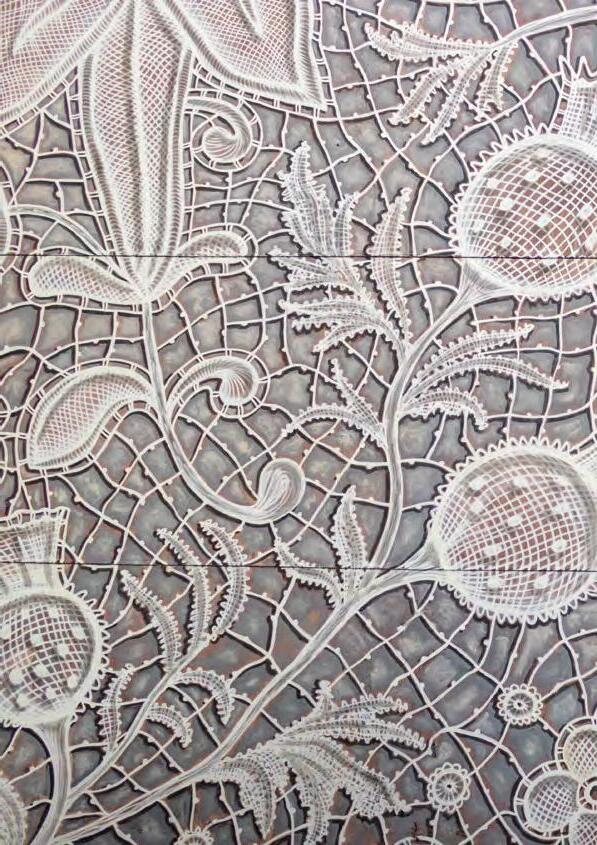













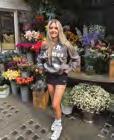







Welcome to our
brought to you by our Stage 3 Fashion Management placement students, Eden, Lewis and Mary. This feature celebrates some of the work and passions of Gray’s students, both past and present, in a variety of courses and experiences across our fabulous school.
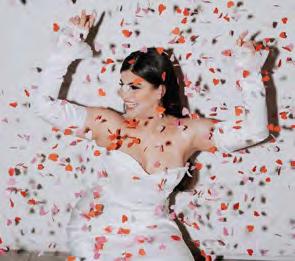
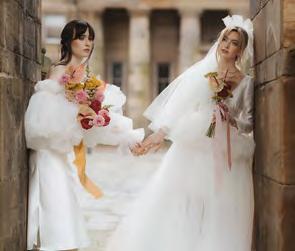
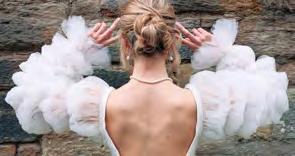
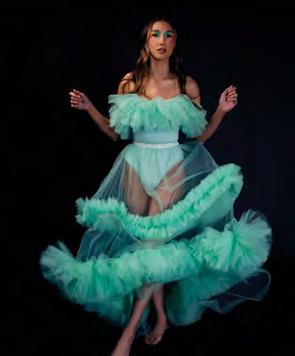

Sarah Murphy is a Gray’s Alumna who studied Fashion and Textiles. The Fife born designer, who specialised in womenswear, had previously worked with the Barbie Team at Mattel in Hong Kong during her time at RGU. She went on to further education to become an Art and Design Teacher while continuing to keep up with her fashion designing. Sarah is currently inspiring the youth of today as a high school Fashion Design teacher, alongside producing her couture garments at her home-studio under the brand ‘Bellanude by Sarah Murphy’. Sarah hopes to expand her brand and eventually leave teaching.
Insta: @bellanude
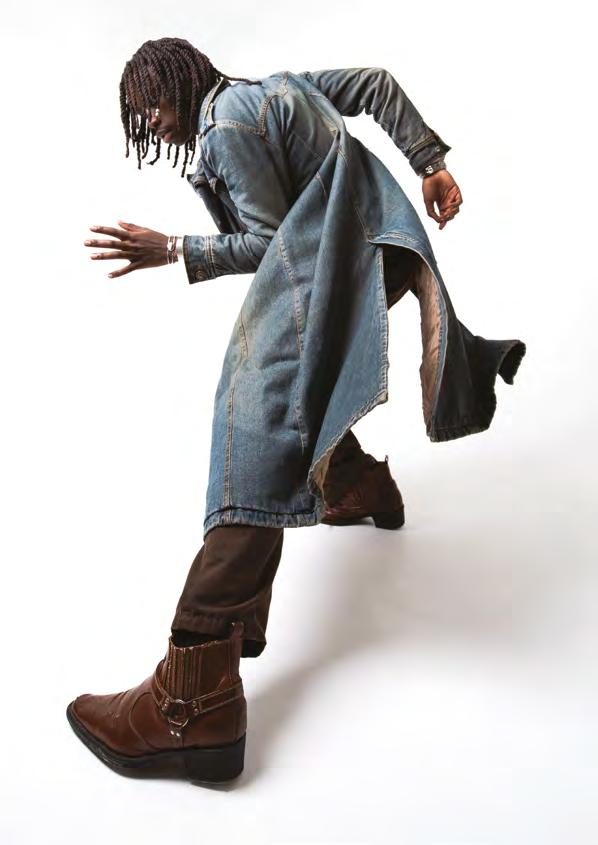
Kuba, who previously studied at NESCol, is now in stage 3 at Gray’s. His passion lies in fashion-based photography, primarily in studio-based settings, but he is now branching out to location shoots. He uses fashion and photography as a means of self-expression.
Kuba’s journey in the field began when he collaborated with a friend, a fashion student, who inspired him with their unique clothing and brands. Although this wasn’t initially his style in clothing, Kuba embraced it and now incorporates his own style into his projects at Gray’s. In the future, Kuba aims to continue his self-expression through personal projects while also working as a photographer for fashion brands.
Insta: @Pixserene
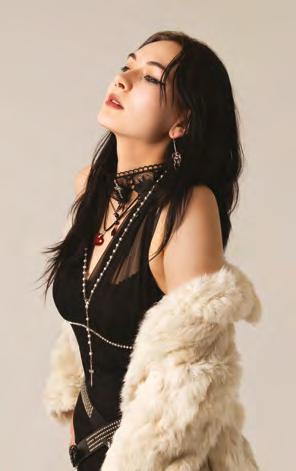
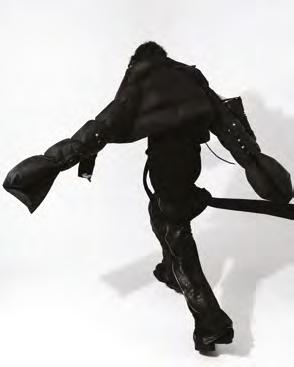
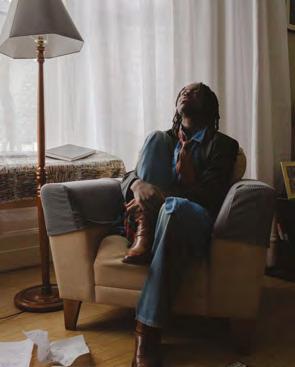

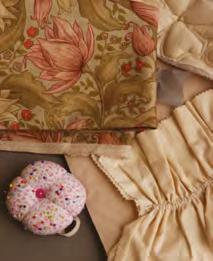

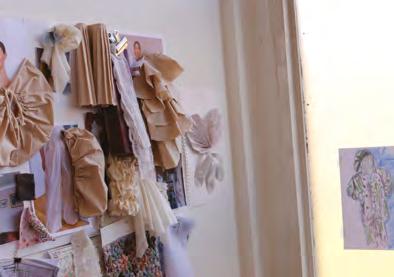
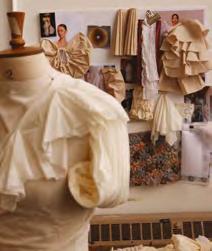

Kelsey-Mae, a fashion and textiles student at Gray’s specialising in fashion design, began her journey during a freelance job on a gap year at 19, where she discovered her passion for the field. She then pursued textiles at college but has since shifted her focus towards fashion, taking inspiration from designers like Simone Rocha and Jacquemus. In 2024, she won the Tailors Award at the Trades Hall in Aberdeen, a competition for Gray’s fashion students.
At the time of the interview, Kelsey-Mae is working on her graduation collection, inspired by her Granny’s house, which was decorated in the 60s and has a time capsule feel. Her mood boards and designs reflect this nostalgic influence, as shown in the accompanying pictures.
Insta: @kelseymaegreig_
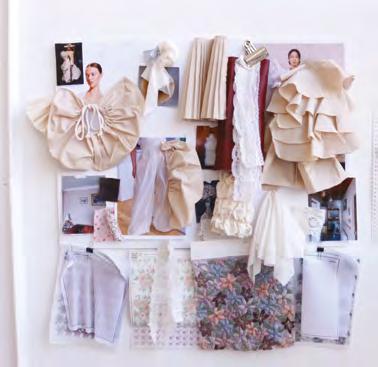
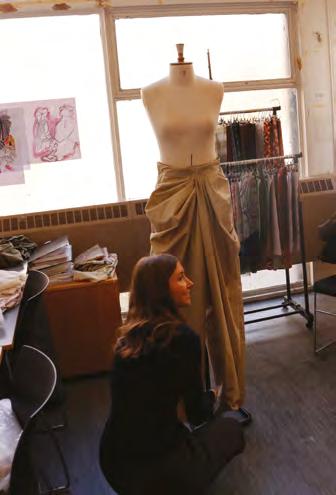


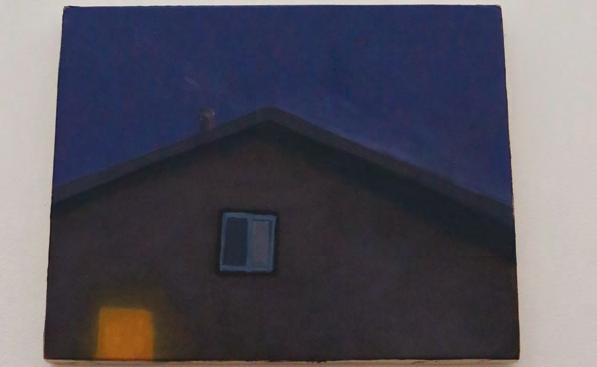
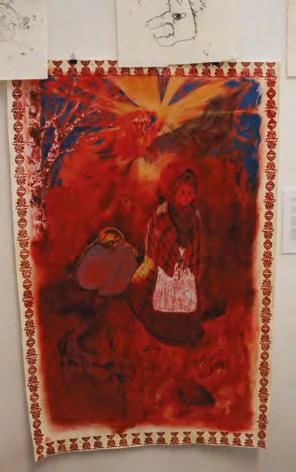


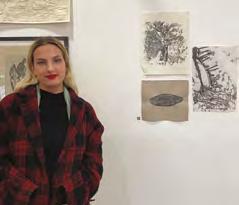
Kotryna specialises in drawing but also explores painting and printmaking. She continues to learn by experimenting with different scales and techniques, never focusing on just one specific area within drawing.
At the time of the interview, Kotryna is in the process of making her graduation project, a visual diary of her thoughts, connections and emotions, with paintings hinting at personal relationships. For this project, she is also dabbling in ceramics, transforming some of her drawings into ceramic pieces. Kotryna draws inspiration from folklore and Swedish artist, Sylvia Bachli. Kotryna enjoys allowing people to interpret her work in their own way, creating their own stories and piecing together the elements to relate to them personally.
Insta: @artby.koko


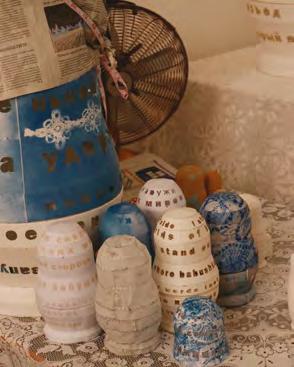

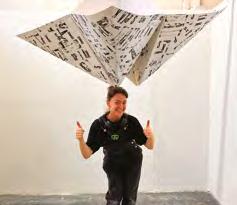
Keira Cormack is a 4th year Fine Art Student at Gray’s School of Art, her work takes inspiration from her identity as half-Russian. Her work researches her identity and allows us to understand the struggle. Keira identifies Anila Quayyum Agha as one of her artistic inspirations, which is apparent when looking at their work on connecting with their culture.
At the time of interview, Keira is using her knowledge across multiple disciplinaries to create her graduation project, using sculpture, sound, video, and performance to create a project exploring her Russian identity with her mother and focusing on losing her mother tongue along with feelings of rejection.
Insta: @keira_cormack.art
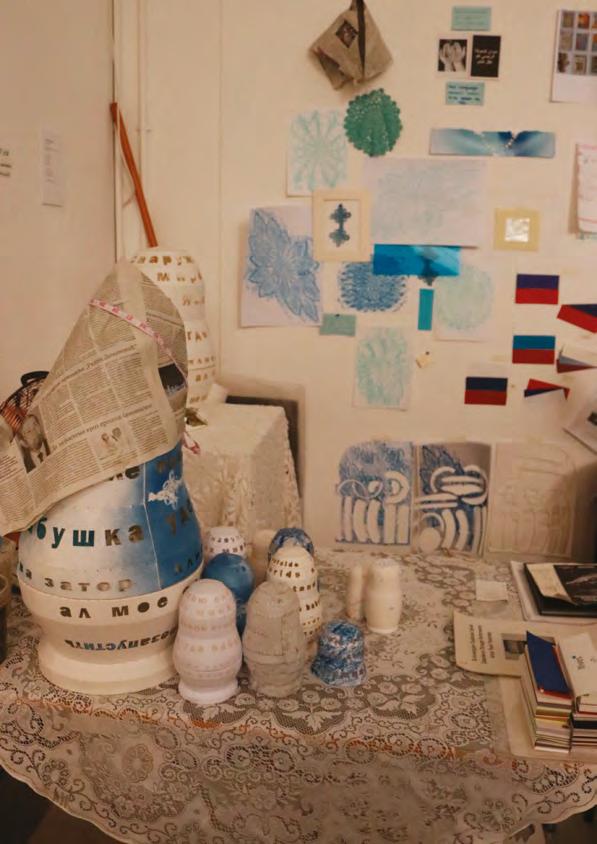
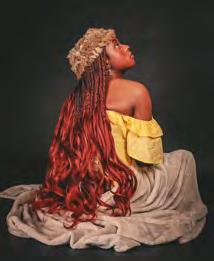
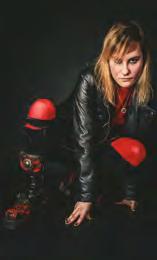



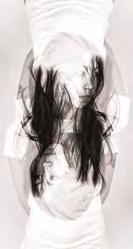
Although Maryanne is on her way to completing her photography course, she initially pursued veterinary nursing due to academic pressure. However, after a year, she switched to photography as she found it more enjoyable.
Maryanne enjoys the creative freedom and directing aspects, often handling all elements of her photoshoots such as dressing the models. She predominantly works in studio-based photography with a focus on fashion. One of her projects shown here, is based on the seven deadly sins and she has a particular interest in editorial fashion.
Maryanne plans to continue studying at Gray’s for her fourth year, but after graduating, plans to work for an established company or as an assistant photographer, eventually working her way up.
Insta: @_m.a.c_photography_
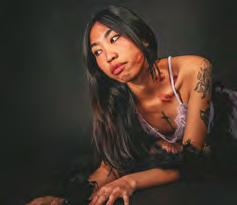







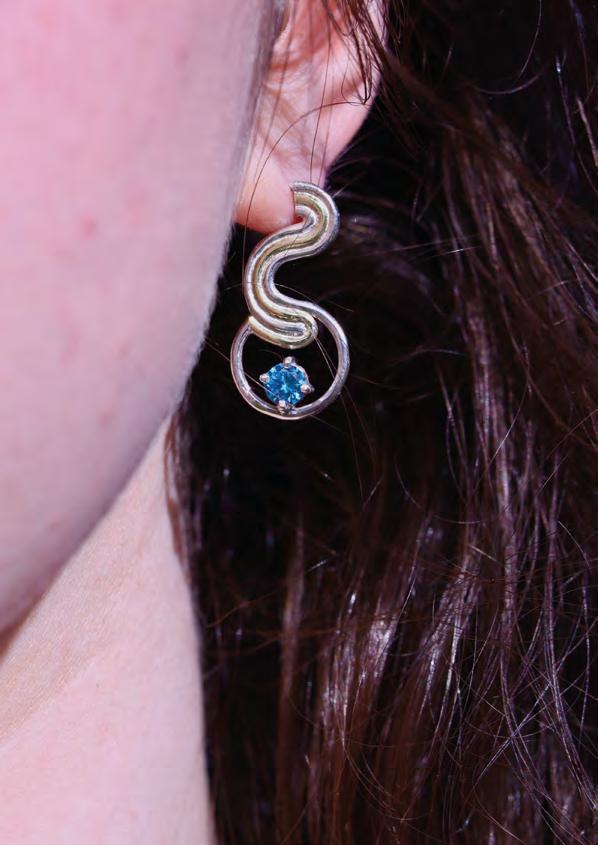


Anna Keith, a Stage 2 student specialising in Jewellery, began her journey at 16 through workshops and a placement with Megan Falconer. She continues to work with Megan while pursuing her studies at Gray’s.
Anna creates independent designs in her studio, combining university projects and selling her own creations online. Currently, she is designing a ring based on synesthesia art using her favourite song, and crafting with sterling silver and gold. She plans to develop her own collections and run her own studio after university while continuing to collaborate with Megan.
Insta: @annakeithjewellery
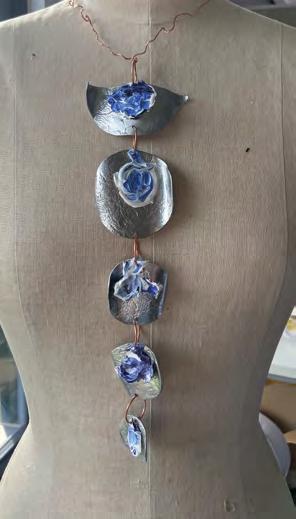
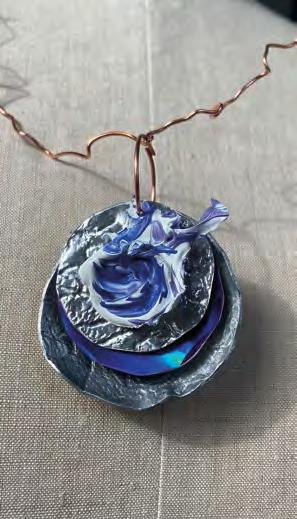

Barbara explored the various opportunities at Gray’s and initially had no interest in 3D design. However, her work in a jewellery shop back home inspired her to take on a jewellery project in her second semester before committing to a Fine Art degree. She was drawn to organic shapes and natural forms, incorporating elements like cliff textures, lace patterns, and light refraction using CDs to mimic the sea’s interaction with rocks. Inspired by her Shetland roots, her work reflects a deep connection to home and nature. She found the jewellery project enjoyable and ideas came naturally to her, which made her consider pursuing jewellery-making after university. She’s also passionate about teaching which is something else Barbara would like to pursue after university.
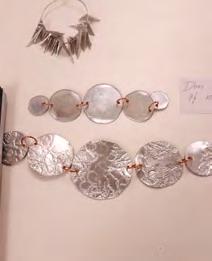

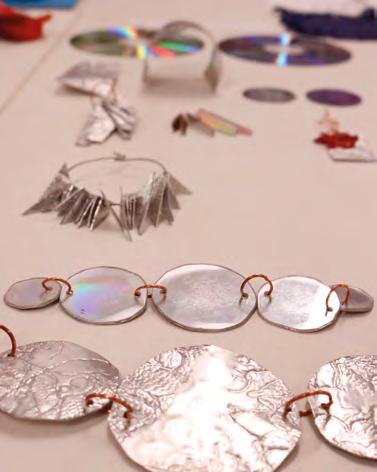



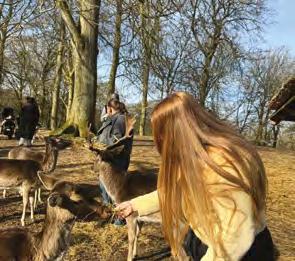
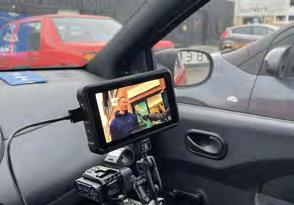

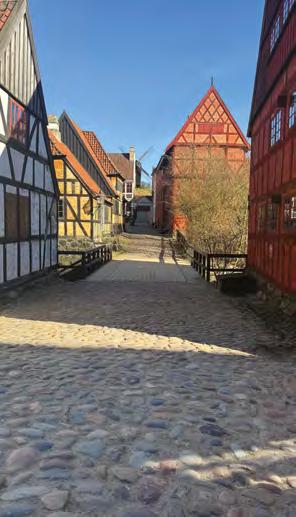

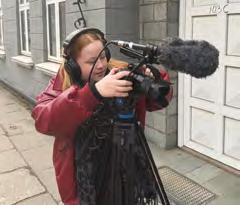
Tegan Ross is a Stage 3 Journalism student who, in the second semester, chose to take part in RGU’s study abroad programme. Studying at the Danish School of Media and Journalism (DMJX) in Aarhus, she took part in this opportunity as she wanted to learn about foreign reporting and experience a new culture.
By living in Denmark she has gained an appreciation of how journalism and the media operate differently, and has a better understanding of international news. Studying abroad has afforded her the chance to experience a variety of diffierent software and editing techniques. After university Tegan would like to go into video journalism.
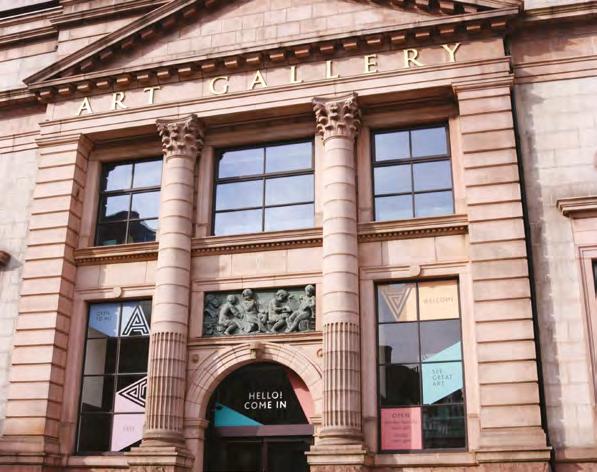


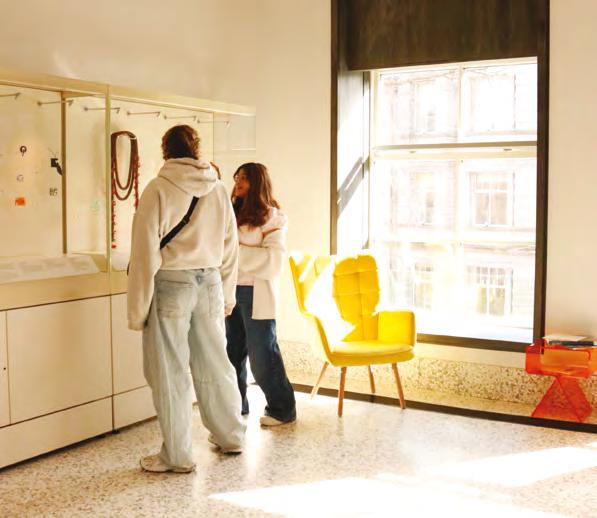
Instead of carrying on with regular modules in stage 3, Aria went on to do a year long placement with Aberdeen Art Gallery.
As an Audience Acquisition Intern, she has had the opportunity to make connections, and take on many responsibilities. She is involved in the marketing of the gallery, which includes doing all social media and writing blog posts. She also helps with press events for the gallery and assists with various collaborations, including Aberdeen Council, Aberdeen University and RGU.
In Stage 2, Aria’s article about diversity in the modelling industry, something she is very passionate about, was featured in ‘The Fashion Place 2024’.
Insta: @ariasfashiondiary
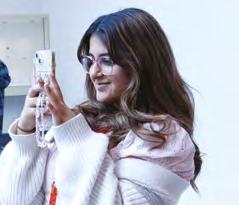



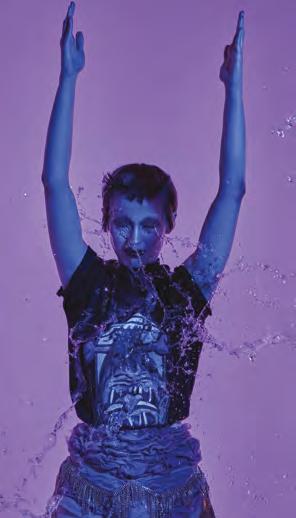
Angela is an accomplished artist and designer who earned a Bachelor of Fine Arts in Drawing and Painting and a Master’s Degree in Art and Design from Gray’s School of Art. Her passion for urban art was sparked during a 2012 trip to Amsterdam, inspired by the multicultural and transient nature of street art. Angela’s spray can tribal mask paintings blend graffiti’s vibrant palette with traditional tribal aesthetics. In 2019, she launched the unisex urban T-shirt brand Tribe All. Her work has been featured in prominent publications and fashion weeks in Aberdeen, Milan, and London. Recently, she collaborated with Emporio Aragao for Japan Fashion Week.
@angela_thouless_art
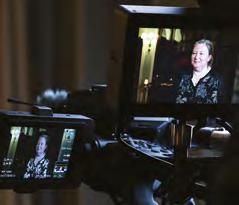
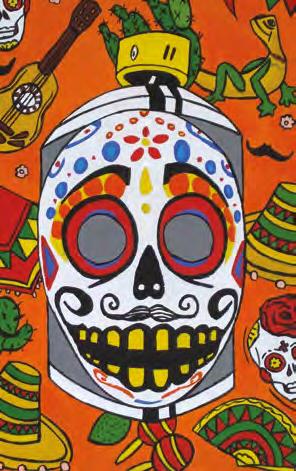


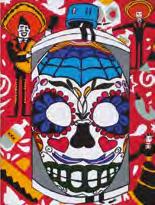

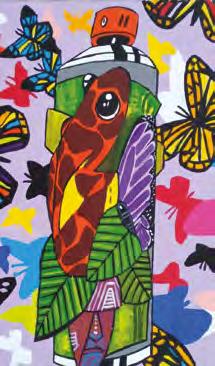
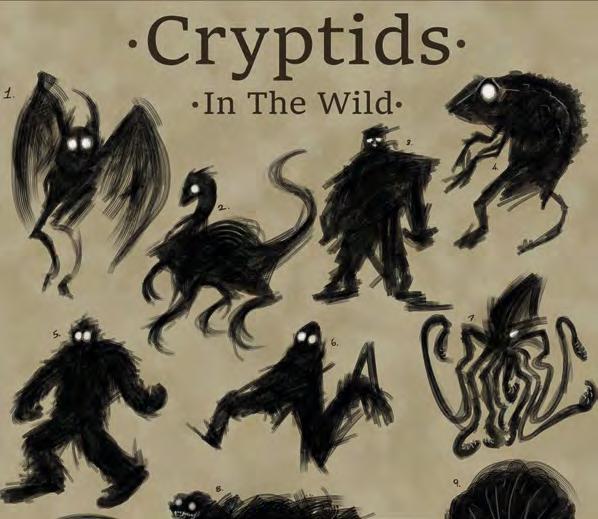
Nicole focuses on illustration, with a preference for monochrome ink work. The artwork featured here is inspired by Instagram artist, God Machine, and features cryptic, monster-like designs. She chose Gray’s as she was influenced by her high school art teacher, who studied printmaking here some years ago. Nicole always had a passion for art, and she entered university to gain a better understanding of the creative industries.
Recently she created logo designs and, as part of her course, completed an industry project redesigning the advertising for Gray’s. She has shifted her focus to create art that personally fulfills her, moving away from producing work primarily for others’ enjoyment. After graduation, she aspires to pursue anything that lets her illustrate.
Insta: @squidcave_
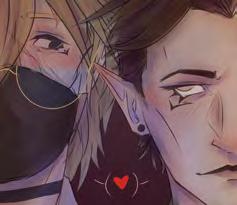
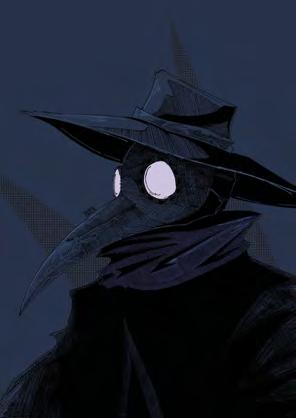

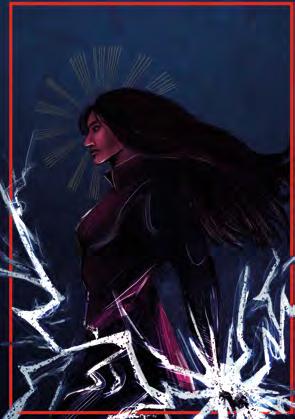
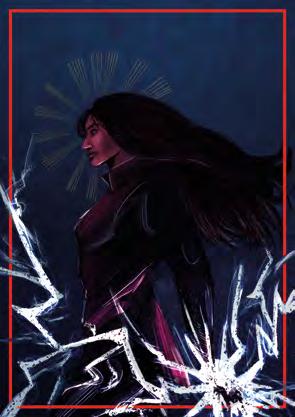
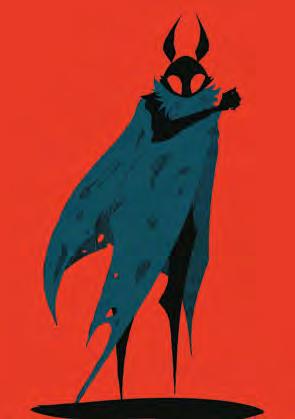

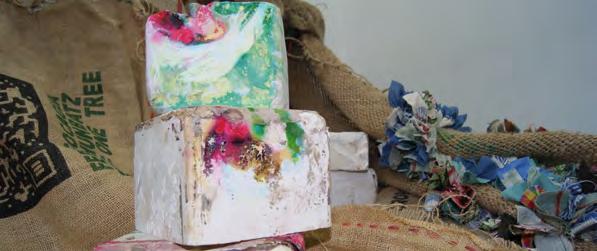
Barbara Boyne has been creative from a young age and has always wanted to go to art school. After raising four children, who are some of her main inspirations for her work, she decided to attend Gray’s.
Her work takes from multiple disciplines including 3D sculpture which she used in her end of year show by creating large compositions made from recycled hessian sacks and other recycled materials that she printed on and draped over tables and chairs. Her theme was to explore colonialism and the coffee industry.
Barbara would like to continue with her art after graduating and sell some of her pieces she creates in her home studio.
Insta: @BarbaraBoyne


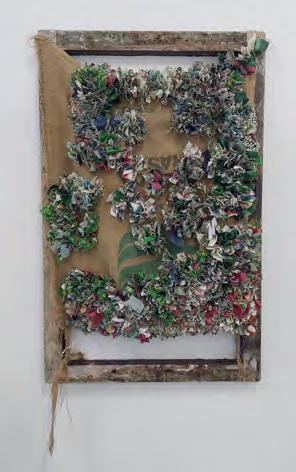
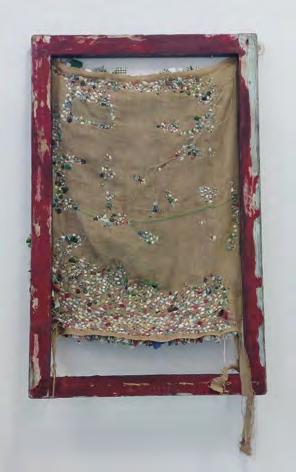
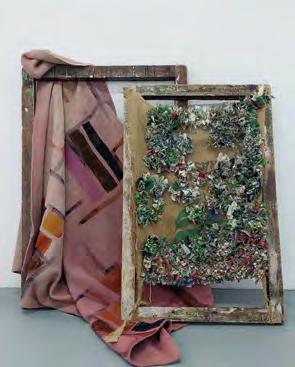
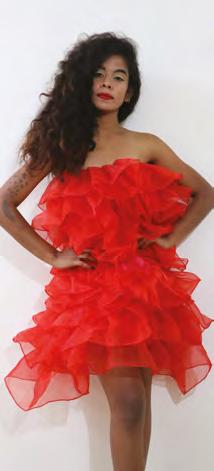

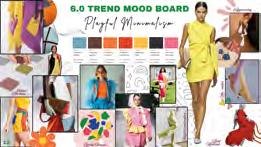


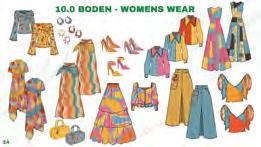

Anusha Yashavanthapura Muniraja is a Masters student studying International Fashion Business at Gray’s School of Art.
The image on the left reflects Anusha’s experience in fashion design, starting off at the Oxford College of Science, Bengaluru, India. Her ideas were drawn from her Indian culture which can be seen through her freelance work. She has received many awards and has given a seminar at a national conference on sustainability and textile recycling.
At time of interview, she was preparing a business proposal for a clothing retailer for their AW 25/26 collection as part of her studies at RGU. In the future, Anusha wants to go on and become a Marketing Merchandiser for UK fashion brands.




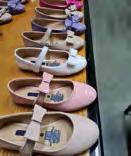
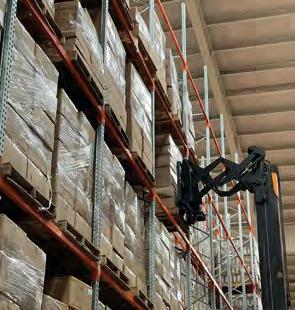
Regina graduated from RGU in 2022 with a Masters in International Fashion Business.
She has over 5 years of experience as a retail buyer specialising in fashion retail strategies, and trend analysis to manage budgets and drive sales. Currently, Regina is a Children Footwear Buyer at El Puerto de Liverpool in Mexico City, overseeing product selection, budget planning, and negotiations with brands.
Previous roles include managing stock and budgets as a luggage and handbag buyer, developing innovative textile designs and analysing textile trends, and assisting in outfit planning for a news channel as a stylist intern.



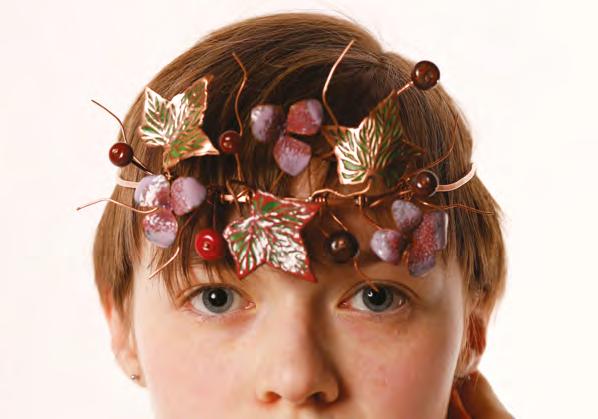

A group of three Stage 2, 3D design students, were tasked to form a collective, ‘Tha Nàdur’, and create a collection of work inspired by nature, art nouveau, and copper.
Each member designed their own body adornment piece, which was then photographed together to form the final collection. Ciorstaidh McKellar created a back piece inspired by bee wings, using Art Nouveau to craft a playful design that moves with the body. Amy Cowling redesigned a medical ring splint into a decorative, intricate ring inspired by the forest floor. Lastly, Dylan Cundall created a crown inspired by the Beltane festival, transforming foliage into a crown of flowers, leaves, and berries.
Insta: @kiki.mck
@acowling_design
@earth.sea.studio

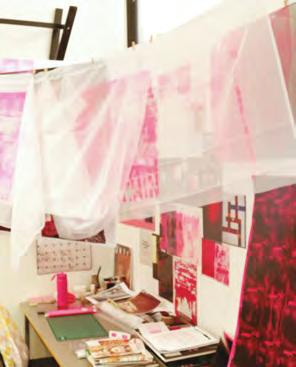

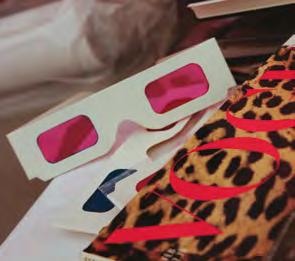
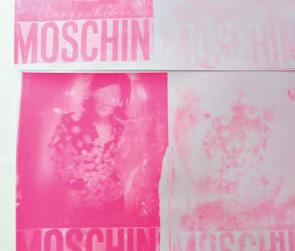
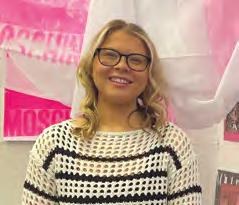
Lauren Gilvear is a Stage 3 Fine Art student studying at Gray’s School of Art.
A love of art throughout her youth has led her to focus on print, specifically digital and screen prints. Lauren gains inspiration from feminism, getting in touch with her identity, and pink! She had been working on a project involving her digital/screen prints which uses front covers from magazines, double layer printing along with projections, and a lot of pink, with which she is able to capture and engage her audience.
Lauren is currently gearing up for her 4th year degree show and wants to leave Gray’s to explore the creative world through joining and helping grow an arts centre or organisation.
Insta: @lauren.gilvear.art
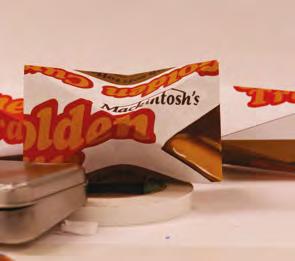
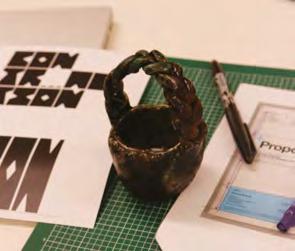
Lara is a Stage 1 Foundation in Art and Design student.
She was drawn to Gray’s portfolio year as students get to try a bit of everything before choosing a specialism. She has always had an interest in graphic communication but is happy she was able to try out different genres of art at the beginning of her degree.
Her second semester choices were ceramics for the 3D design element, and her favourite, Communication Design, which she plans to explore for the rest of her undergraduate degree. We wish her all the best for Stage 2 as she continues to explore her creativity.
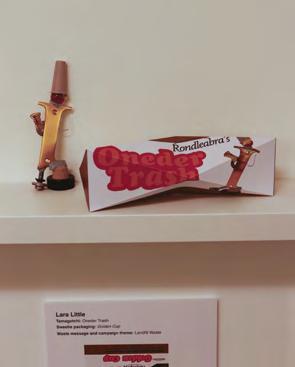



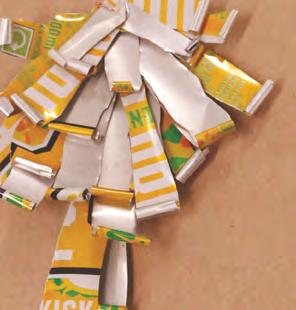


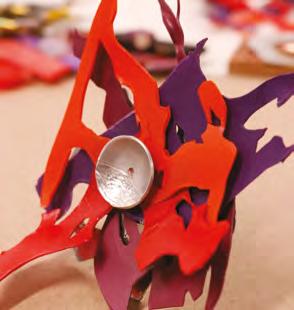

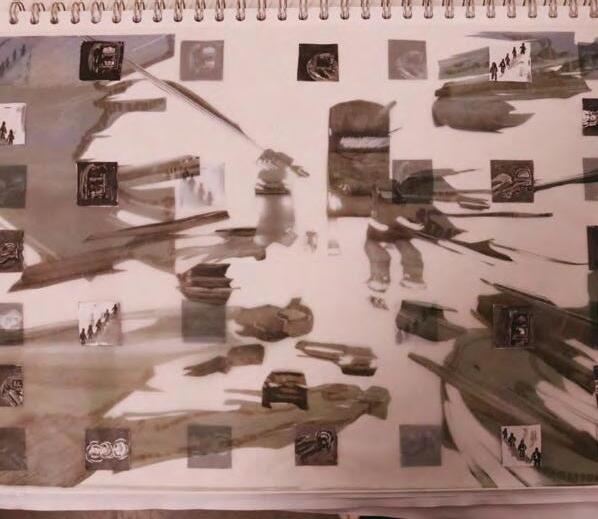

Katie began studying at Gray’s unsure of what discipline to pursue, as she has always enjoyed working with her hands, including with a carpenter during her summers making furniture. Although now leaning towards fine art, Katie enjoyed her project creating jewellery from “rubbish”. She created multiple pieces using various materials such as spray painted milk cartons, driftwood, and an old Irn-Bru can. Her fine art project explores the theme of work and destruction exploring the monotony and anonymity of commuting. Katie participates in the mobile art school, helping with portfolio classes, and projects like the Dennis Law Legacy Trust. In the future, she hopes to continue making art, but has an interest in teaching art to children.
Insta: @katies_giftsss
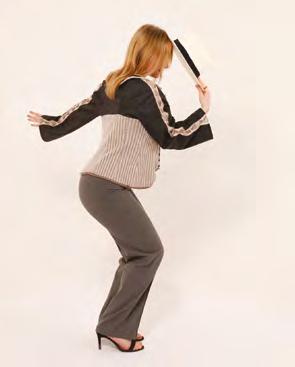
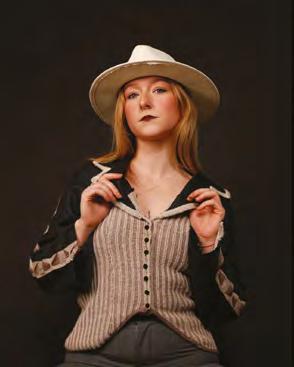

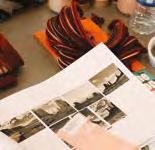
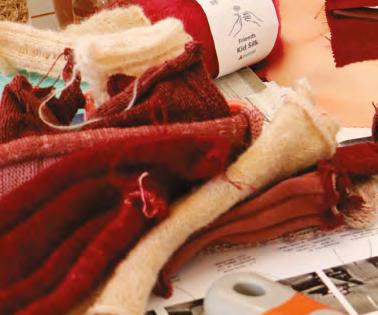
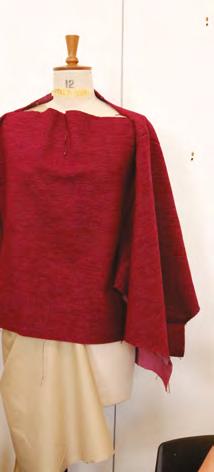

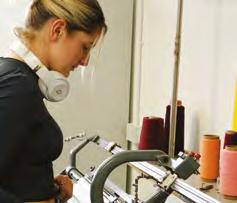
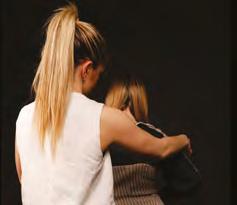
Sophie specialises in knitwear and textiles and at time of interview is working on her graduation collection based on Monument Valley in Arizona and the Navajo people.
Taking inspiration from the landscape and the culture of the land to create a line of garments including a corset and a satin skirt, she also feels influenced by designers such as Issey Miyake. Sophie was inspired to get into art and fashion through her Granny who is just as creative as her. After she leaves University, Sophie hopes to pursue her talent in knit and join a sustainable clothing brand.
Insta: @designed_bysoph


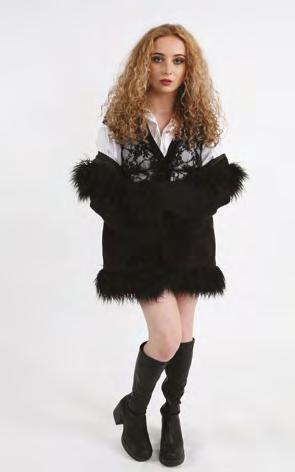



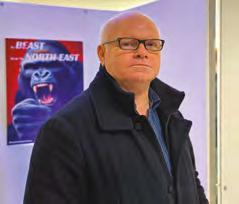
Paul Irvine is a Masters student, studying Communication Design with a focus on photography at Gray’s. He previously studied at NESCol for an HND in photography then came to Gray’s to complete his undergraduate degree. He has taken part in the Fashion Place Magazine for the last 3 years, helping Fashion Management students with their photography, and has also held a public exhibition last year, named “Evoke & Provoke”, based on dynamic camera movement. Paul’s photography covers many different styles but he tends to focus on street style photography. At the time of interview, Paul is working on a project involving AI and whether it makes a difference to cinemagoers. He is looking to continue his education at Gray’s to further build on his skills.
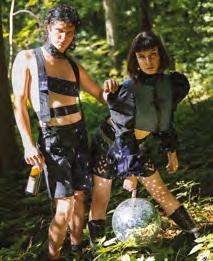

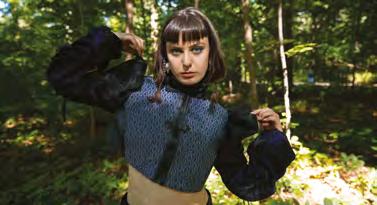
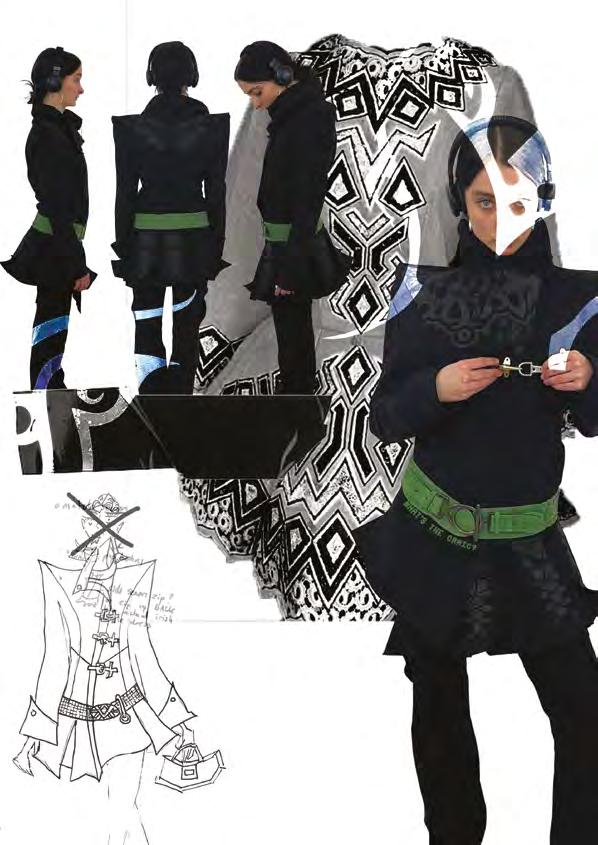
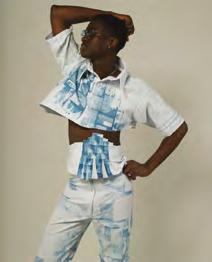
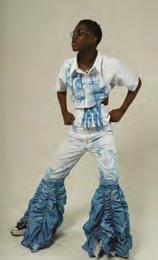


Hannah’s enthusiasm for the fashion industry took off when she designed a dress for an Irish dancing competition which she won. This achievement motivated her creative journey.
Hannah designs textiles, blending tradition and modernity. During her time studying abroad in Hanover, Germany, she incorporated industrial and techno vibes inspired by Hansel and Gretel. Her graduation project merges Irish dancing roots with industrial streetwear, emphasising sustainable fashion with modular garments like jeans that transform into shorts.
After graduating from RGU, Hannah plans to improve her technical skills through another course and aspires to work for a small business, possibly selling her own creations.
Insta: @redmondreid
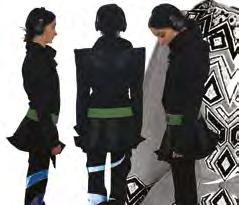
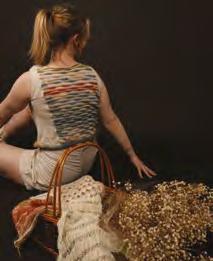
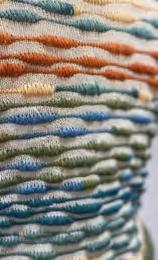



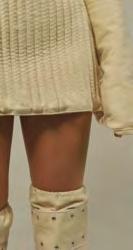
Molly discovered her passion for knitting during her Stage 1 foundation year, where she realised her preference for textiles over fashion. Her graduation project, Nature’s Redemption on a Man-Made World, draws inspiration from the concept of nature reclaiming spaces built by humans, blending the natural elements of textiles with the structured aspects of fashion.
At the time of the interview, Molly is in the process of making this graduation collection. Some samples are shown, but some images feature her previous projects. The images above showcase her “Heritage Project,” inspired by her roots on the Isle of Lewis, and another project exploring psychotherapy, capturing the feeling of being trapped in your own mind when struggling with mental illness.
Insta: @desig.nmollyy


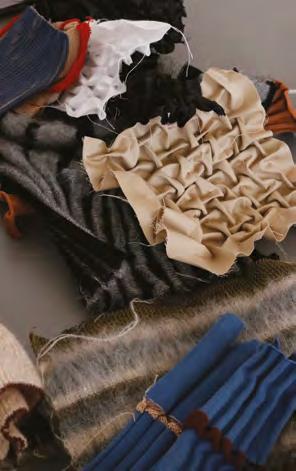

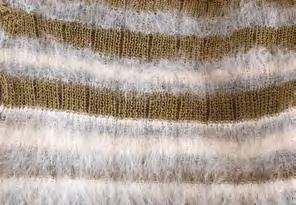

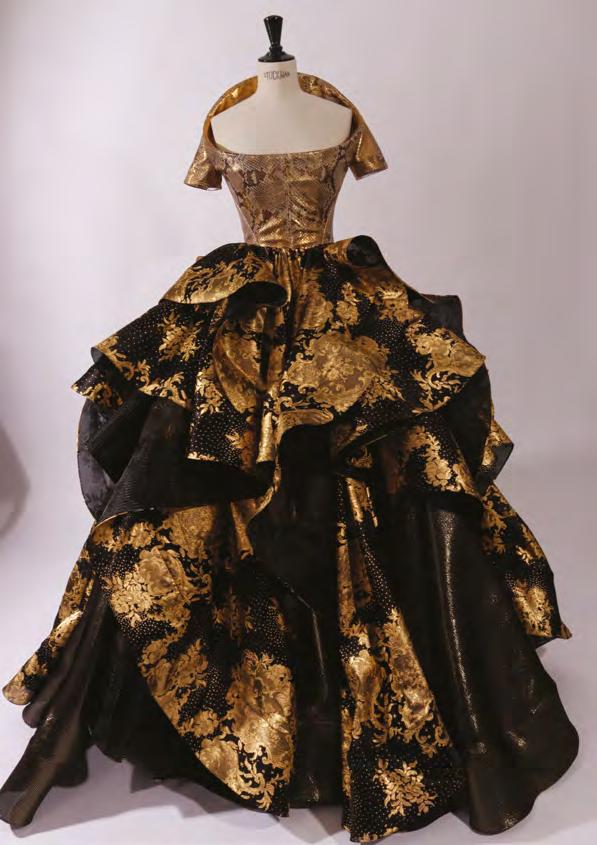
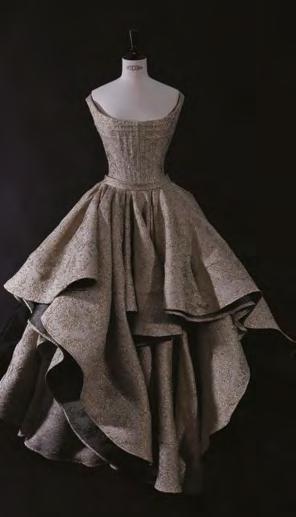

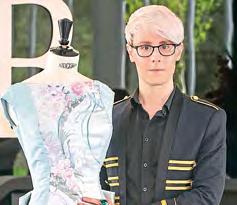
An Aberdeen fashion designer whose passion for fashion began at Gray’s School of Art in Aberdeen. After graduating from Gray’s in 2010, his career took off when he secured an internship at global fashion brand, Marchea in New York, where he stayed for five years. Here he worked on high profile projects from dressing celebrities and collaborating on a Harrods-Disney window display. Despite enjoying his time in the U.S, Daniel has returned to Aberdeen and at time of interview is currently pursuing his PhD at RGU, focusing on practice-based research using his own designs while also teaching alongside his studies. His ultimate goal is to return to America and push creative boundaries and establish himself further in the global fashion scene.
Insta: @danielpaulcrozier

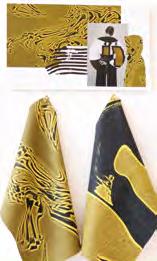
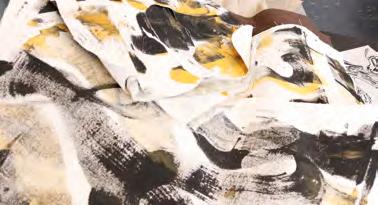
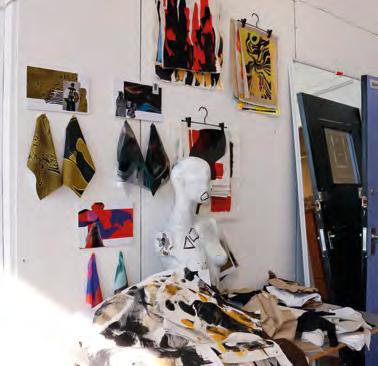

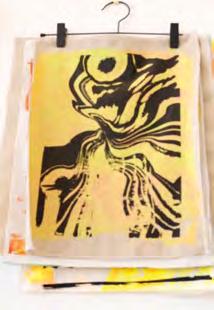
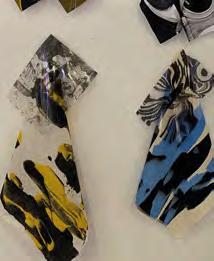
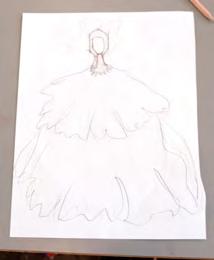



Zoe initially started studying at Gray’s and worked on knitwear before finding a passion for printmaking. Through digital print techniques, she explores distortion, focusing on warped lines, neon pops of colour, and texture effects. Zoe’s graduation project aims to push maximalism, where distorted imagery deconstructs familiar forms and introduces an original visual language, creating ponchos with these prints. Using digital manipulation of photography of moving light, bodies in motion, and mark-making, she aims to create bold and dynamic prints and compositions. Taking inspiration from being a messy person, she wants people to be intrigued while looking at her prints.
Insta: @zoeleask_
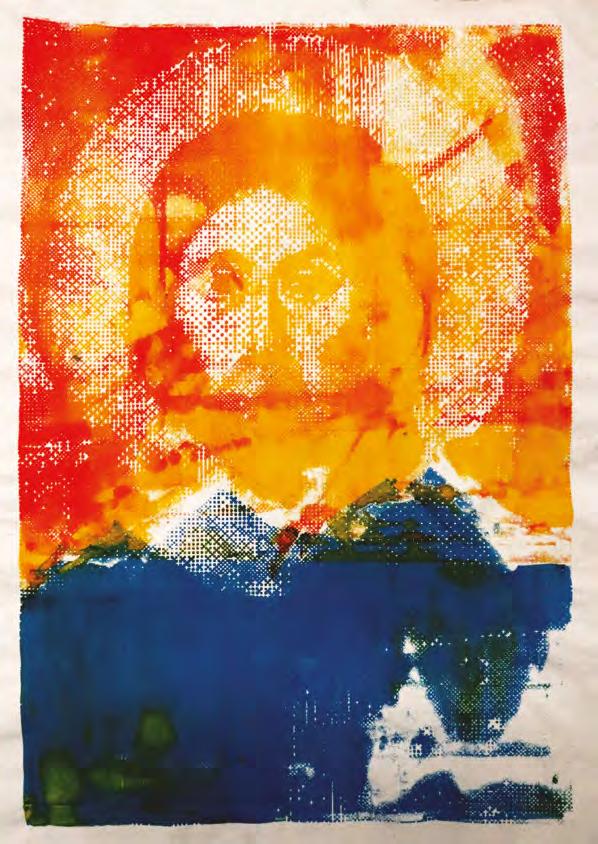
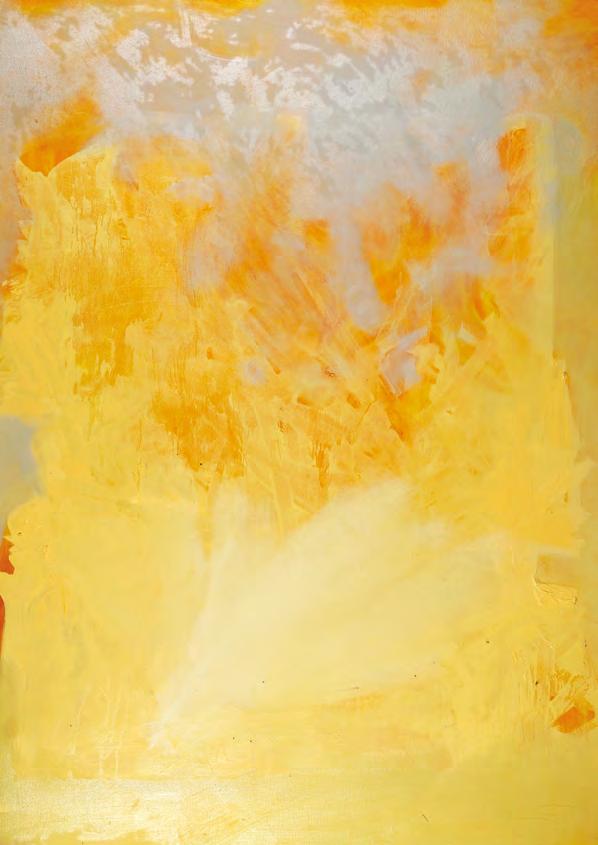
Diarmad MacKinnon is an artist whose work bridges cultural restoration, human ecology, and sustainable living systems.
The works from this body explore the sublime in our living world, capturing fleeting moments of the ineffable through walking art, photography, and meditative abstraction. Wandering the Scottish hills, MacKinnon translates nature into vivid, rhythmic compositions, echoing the pulse of life. His work aligns with the lyrical intensity of Gerhard Richter, the fluidity of Hisako Kobayashi, and the quiet transcendence of Agnes Martin. Each piece is a passionate meditation on vitality, an intimate dialogue between the artist and the world that breathes life into us all.

p165
Fashion & Textiles (Alumna) SARAH MURPHY
p166
Photography KUBA WALASEK
p168
Fashion Design & Textiles KELSEY-MAE GREIG
p170
Fine Art KOTRYNA KRALIKAUSKAITE
p172
Fine Art KEIRA CORMACK
p174
Photography MARYANNE CHAPMAN
p175
Jewellery ANNA KEITH
p176
Foundation Art & Design BARBARA WALTERSON
p178
Journalism (Study Abroad) TEGAN ROSS
p180
Fashion Management ARIA CHAHAL
p182
Fine Art (Alumna) ANGELA THOULESS
p184
Communication Design NICOLE FRANKLIN
p186
Fine Art BARBARA BOYNE
p188
International Fashion Business ANUSHA YASHAVANTHAPURA MUNIRAJA
p189
International Fashion Business (Alumna) REGINA GUTIERREZ SANTOS
p190
3D Design THA NADUR COLLECTIVE
p192
Fine Art LAUREN GILVEAR
p193
Foundation Art & Design LARA LITTLE
p194
Foundation Art & Design KATIE MACMILLAN
p196
Fashion & Textile Design SOPHIE BISHOP
p198
Communication Design PAUL IRVINE
p200
Fashion & Textile Design HANNAH REID
p202
Fashion & Textile Design MOLLY MACLEOD
p204
PhD Philosophy DANIEL CROZIER
p206
Fashion & Textile Design ZOE LEASK
p208
Fine Art DIARMAD MACKINNON


For Gray’s School of Art course information please contact admissions email admissions@rgu.ac.uk
For more information about the magazine, please contact Fiona, editor email f.j.blunsdon@rgu.ac.uk
